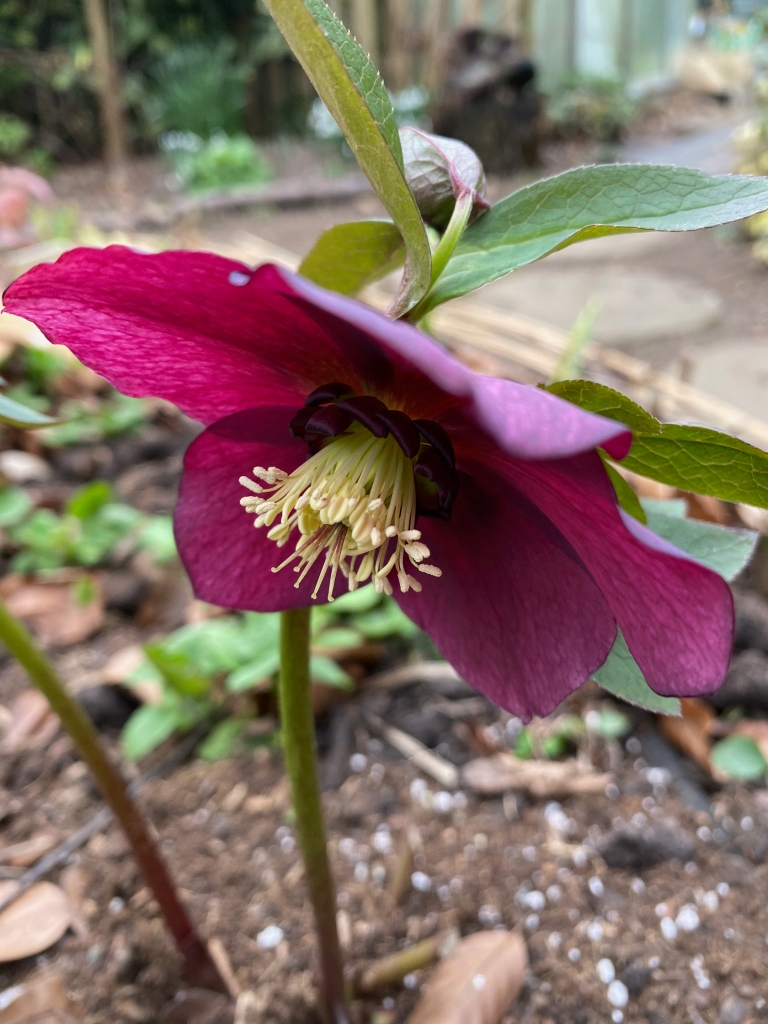
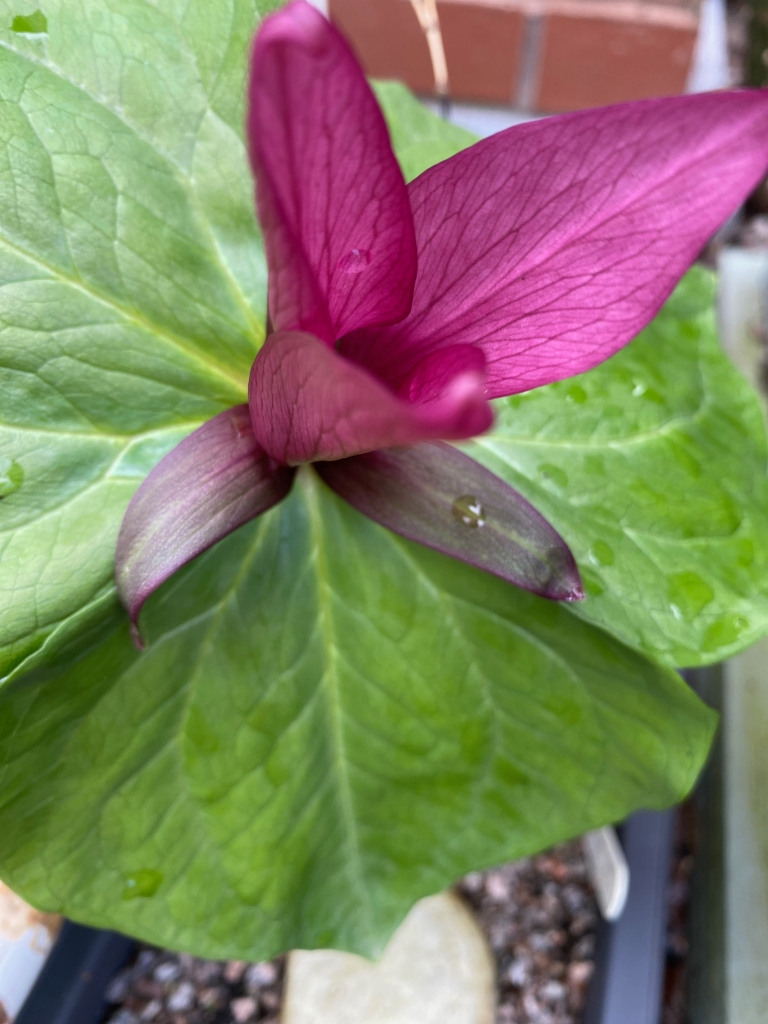
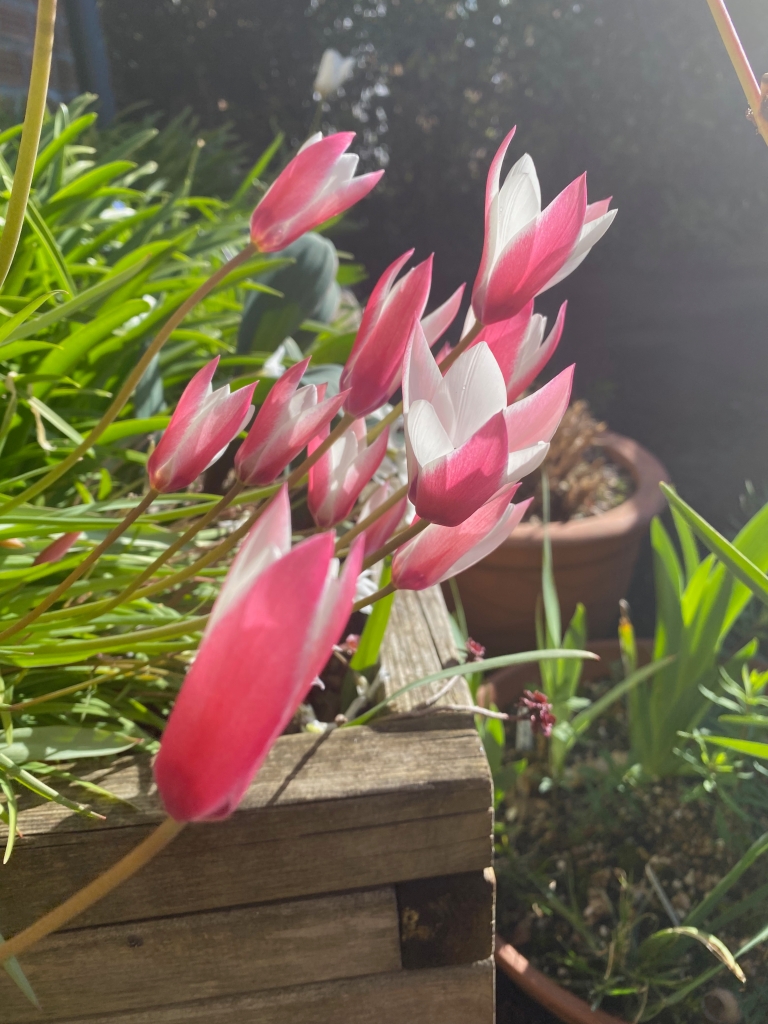
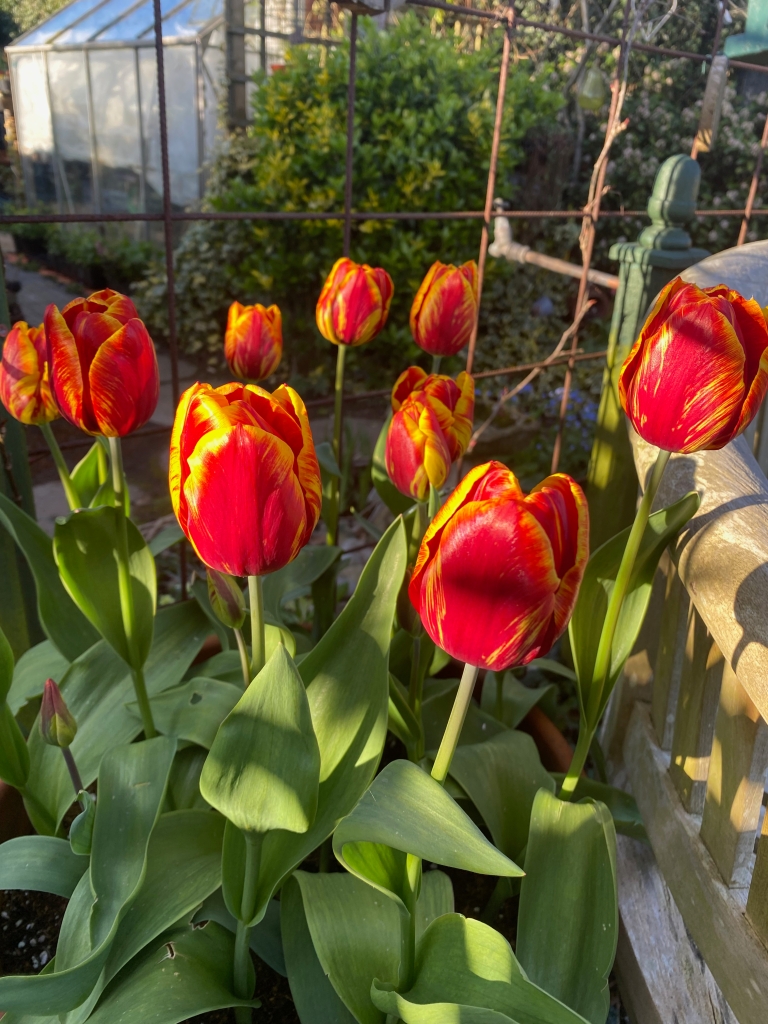
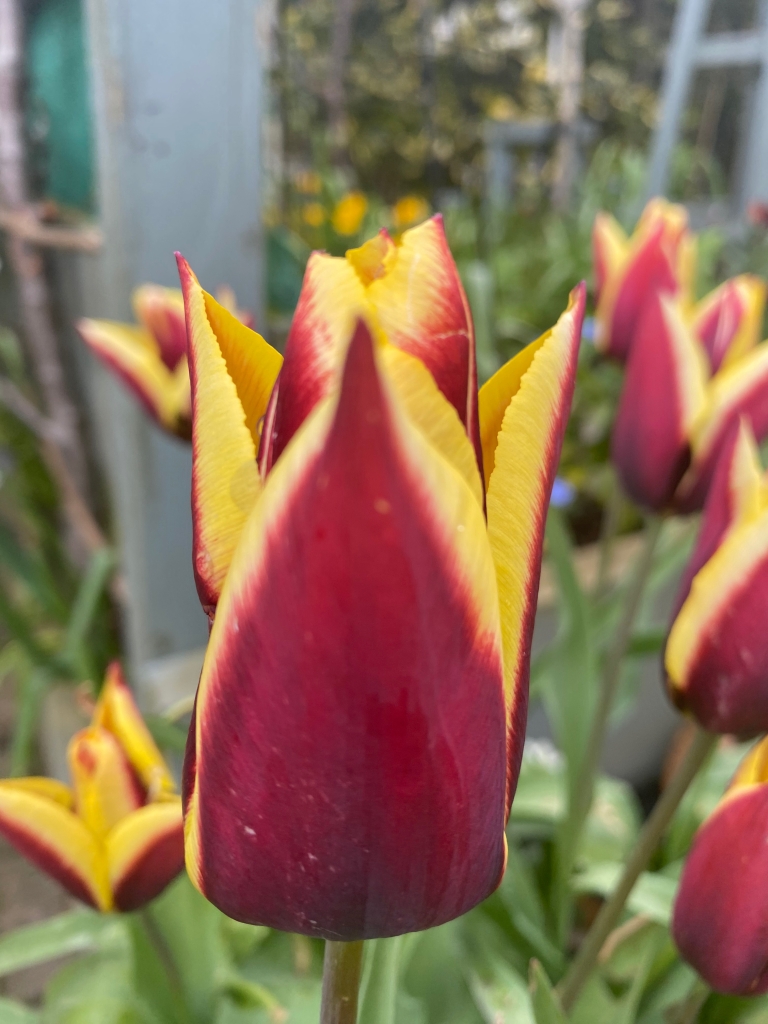
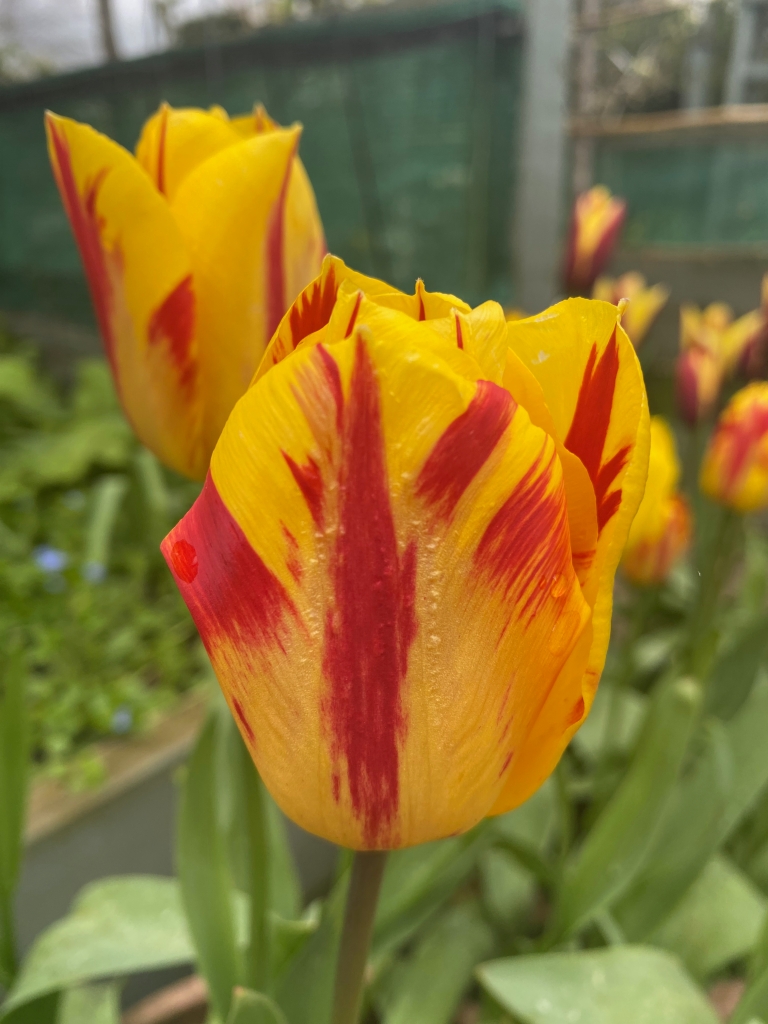
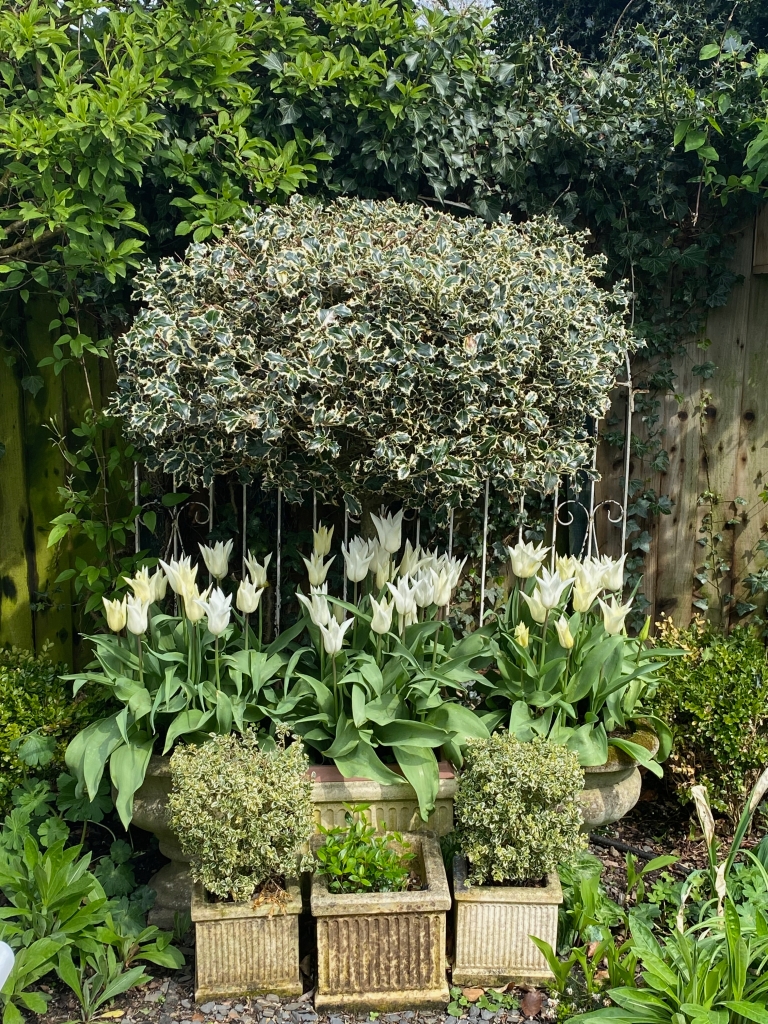

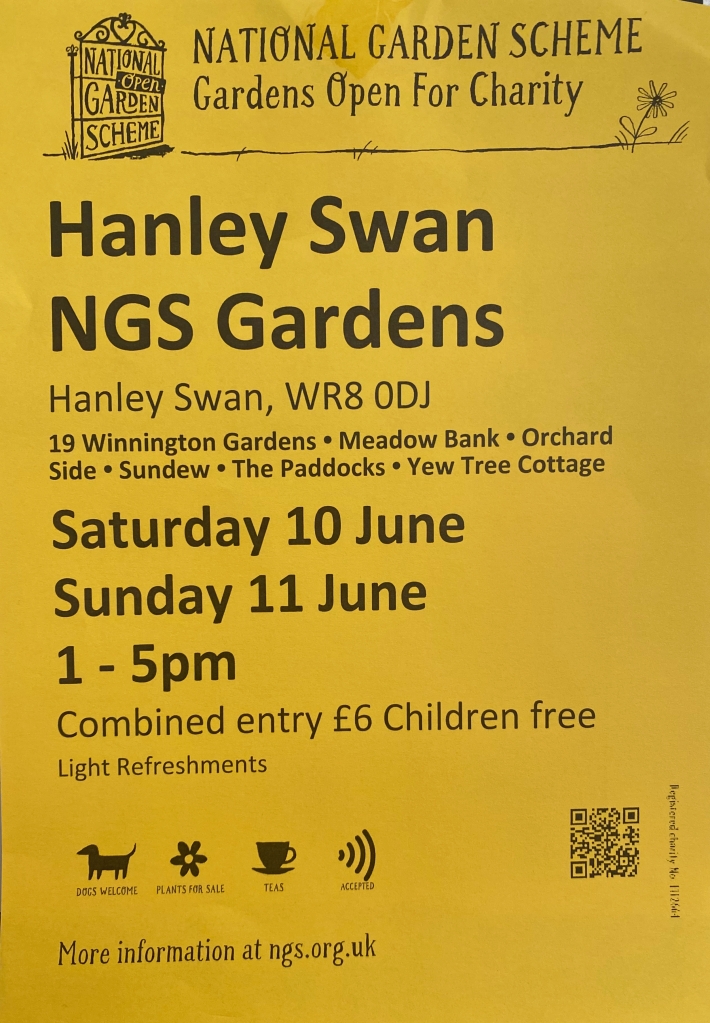


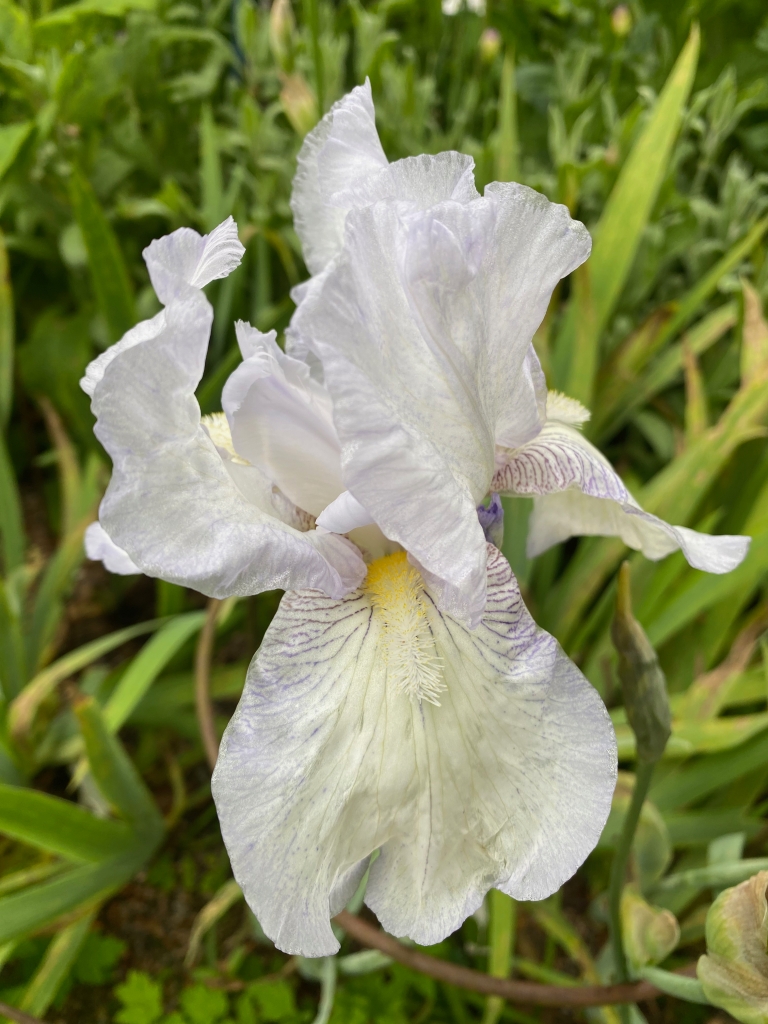
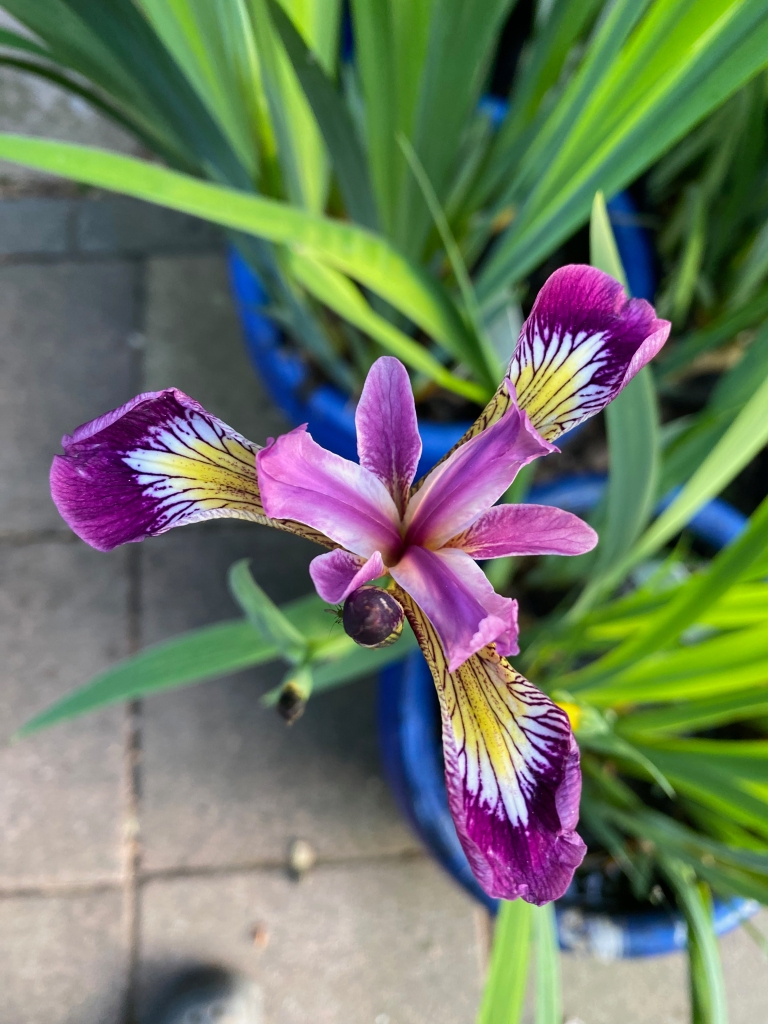
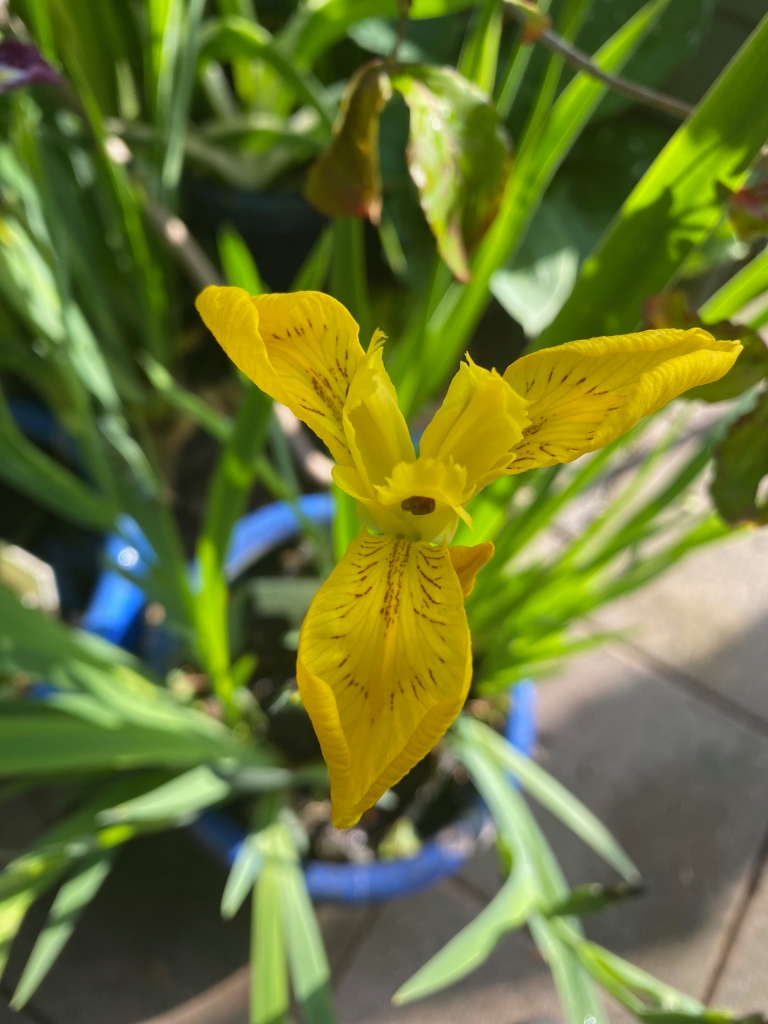


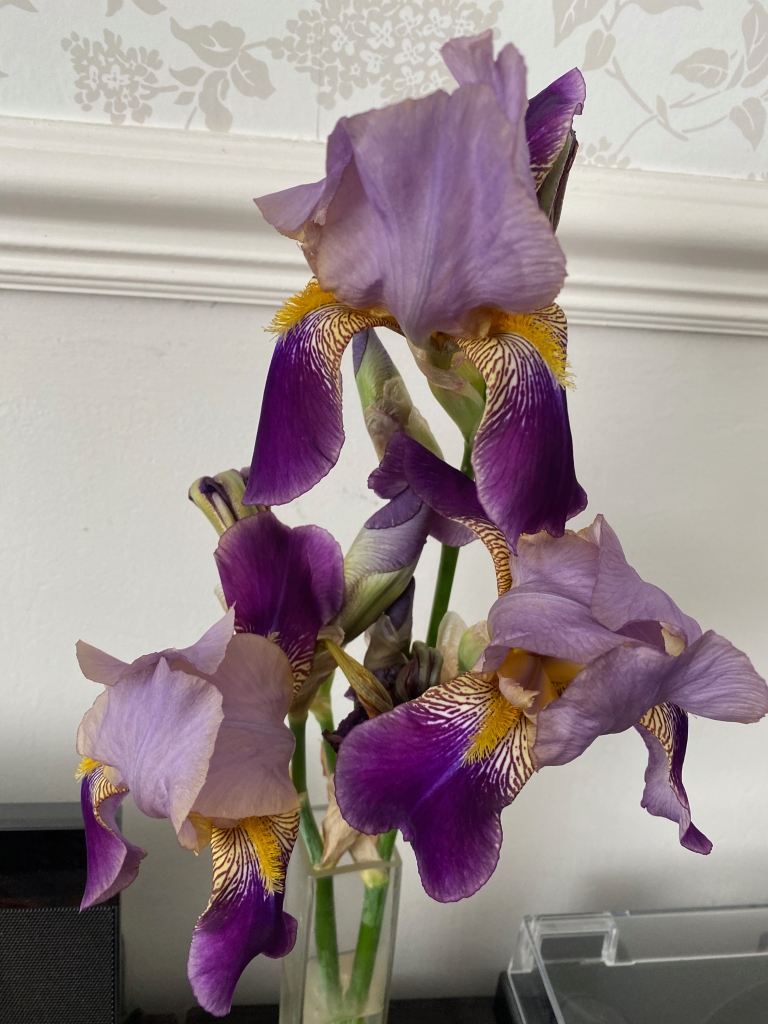

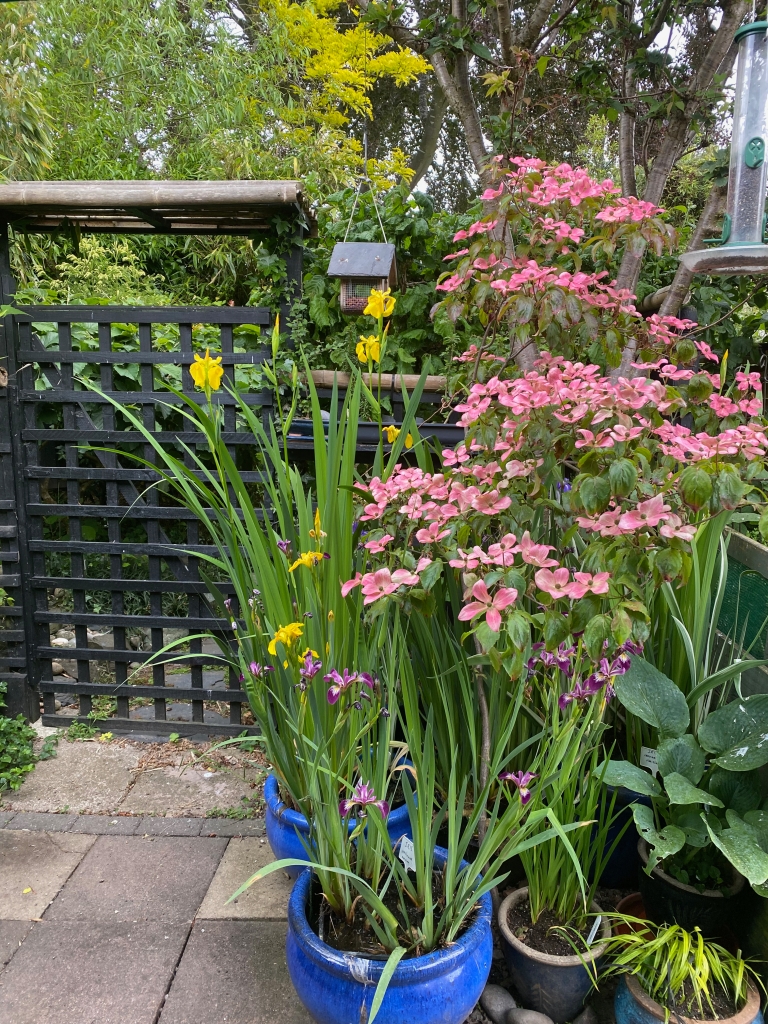
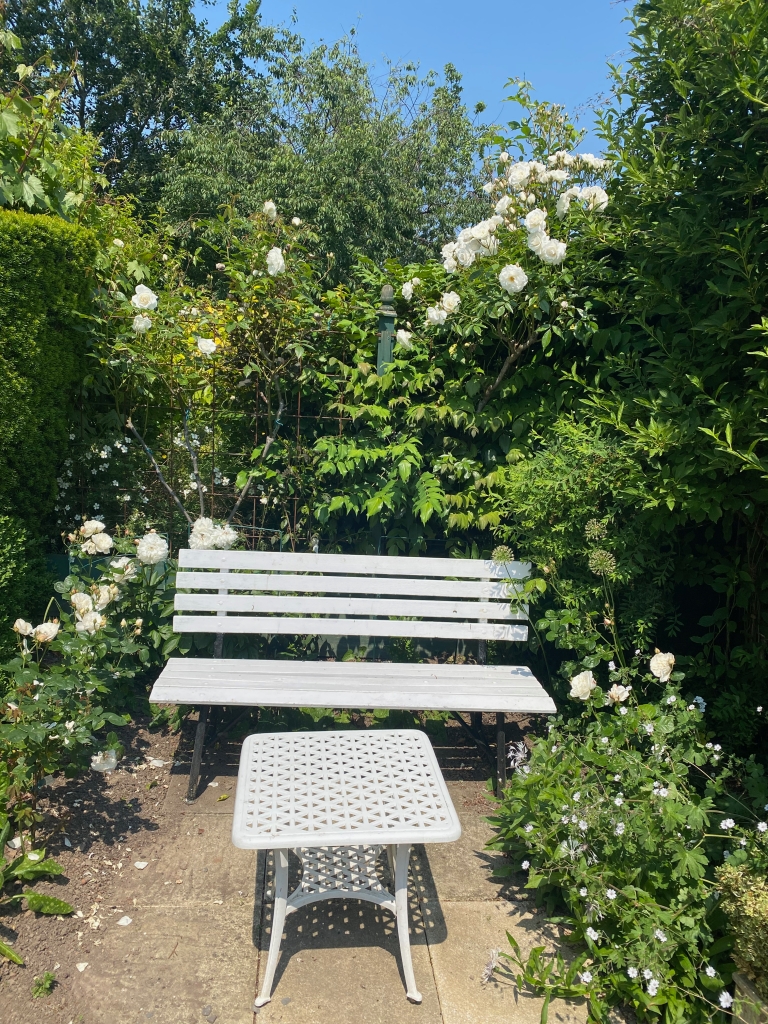
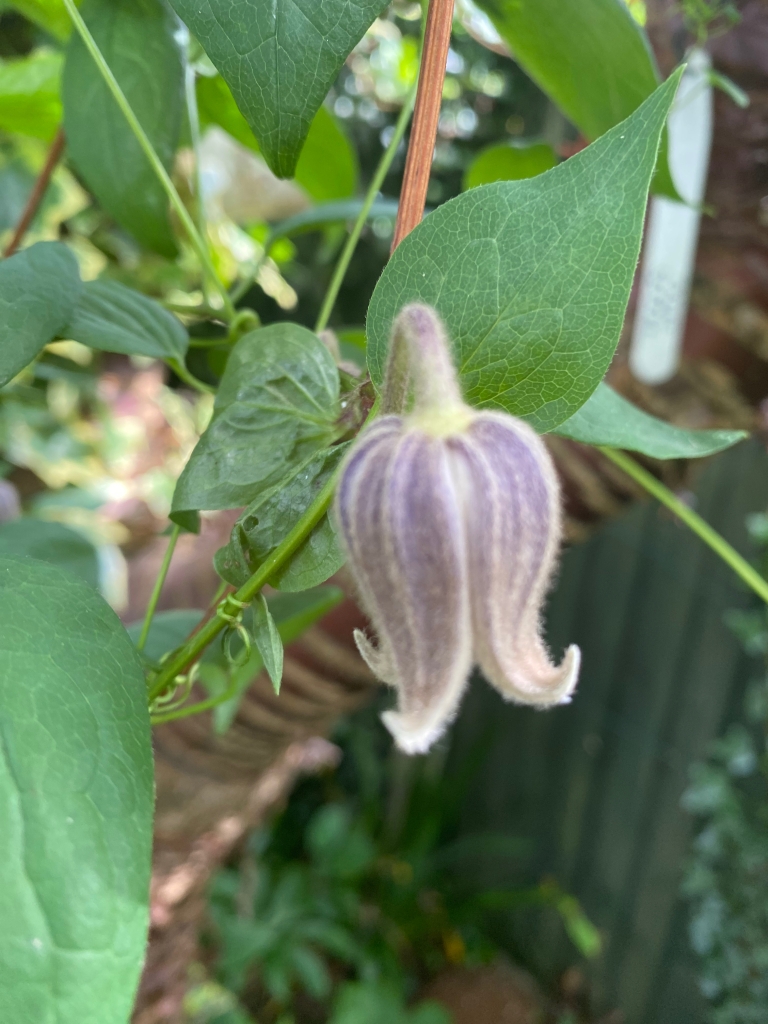
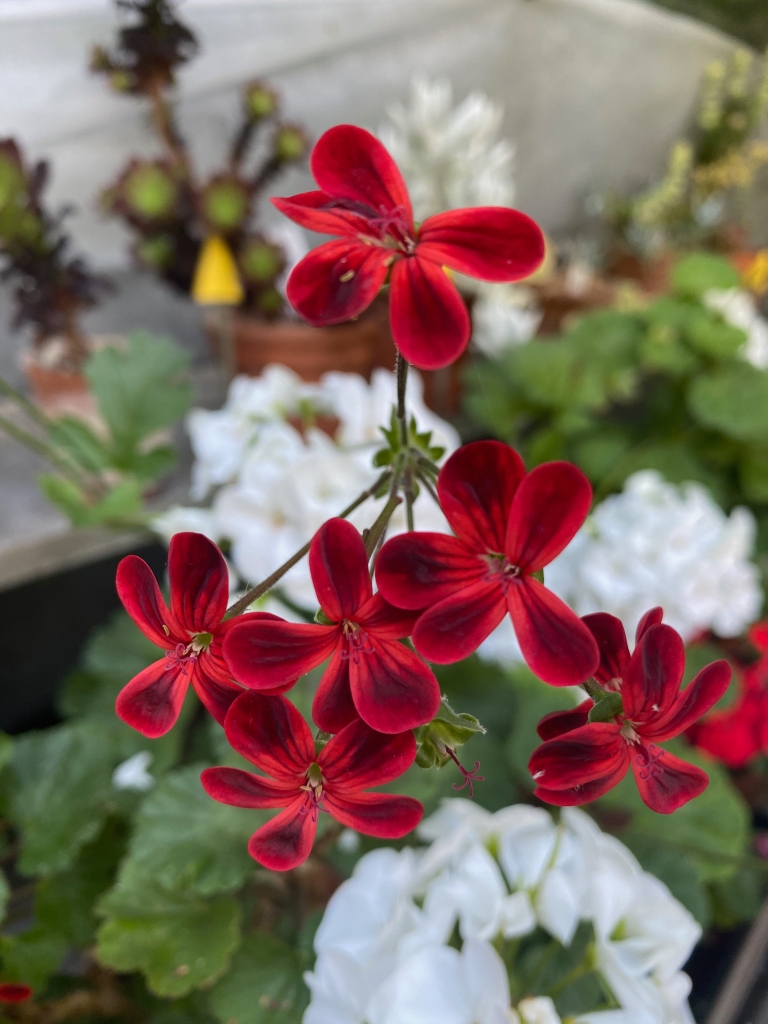


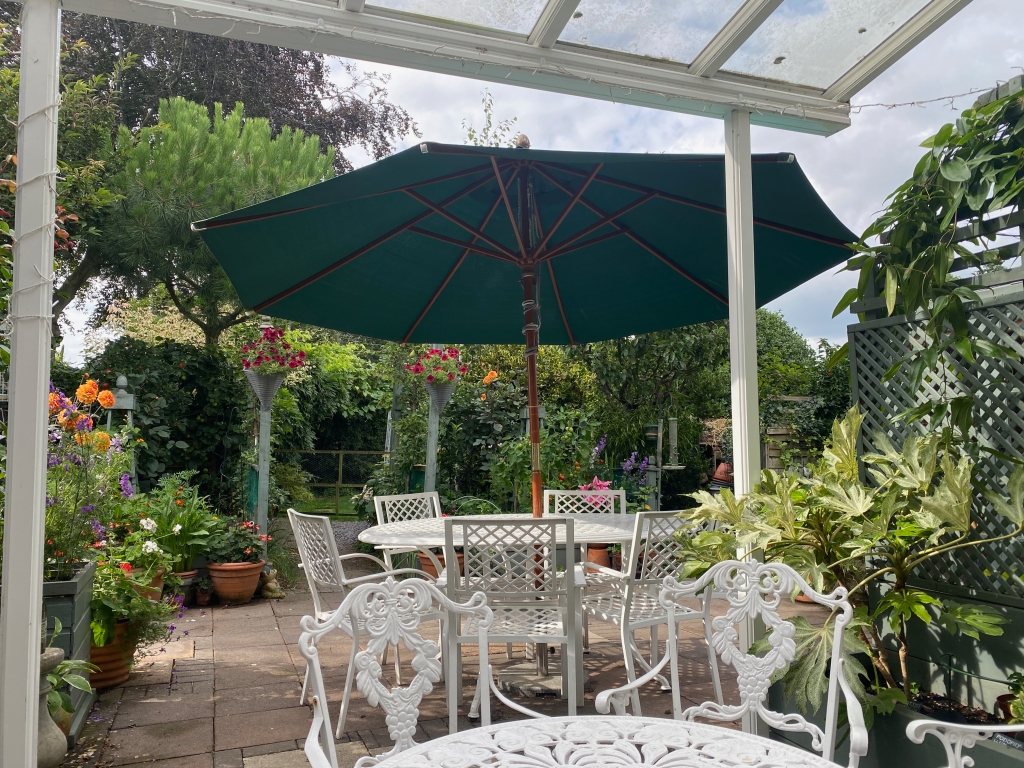

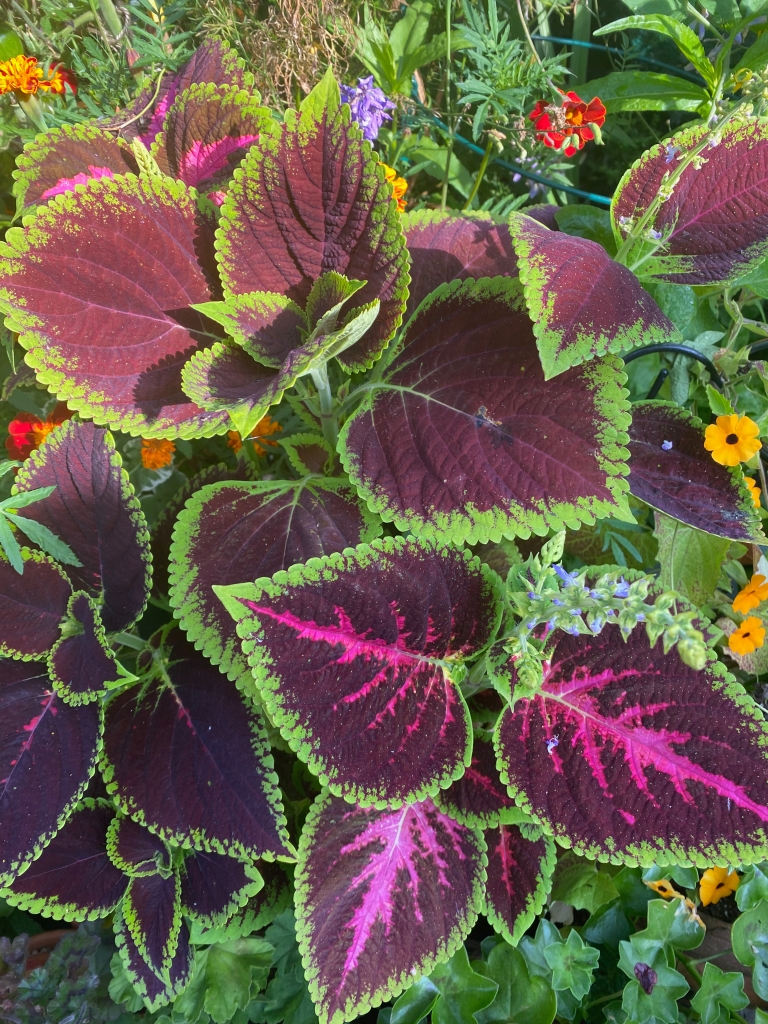
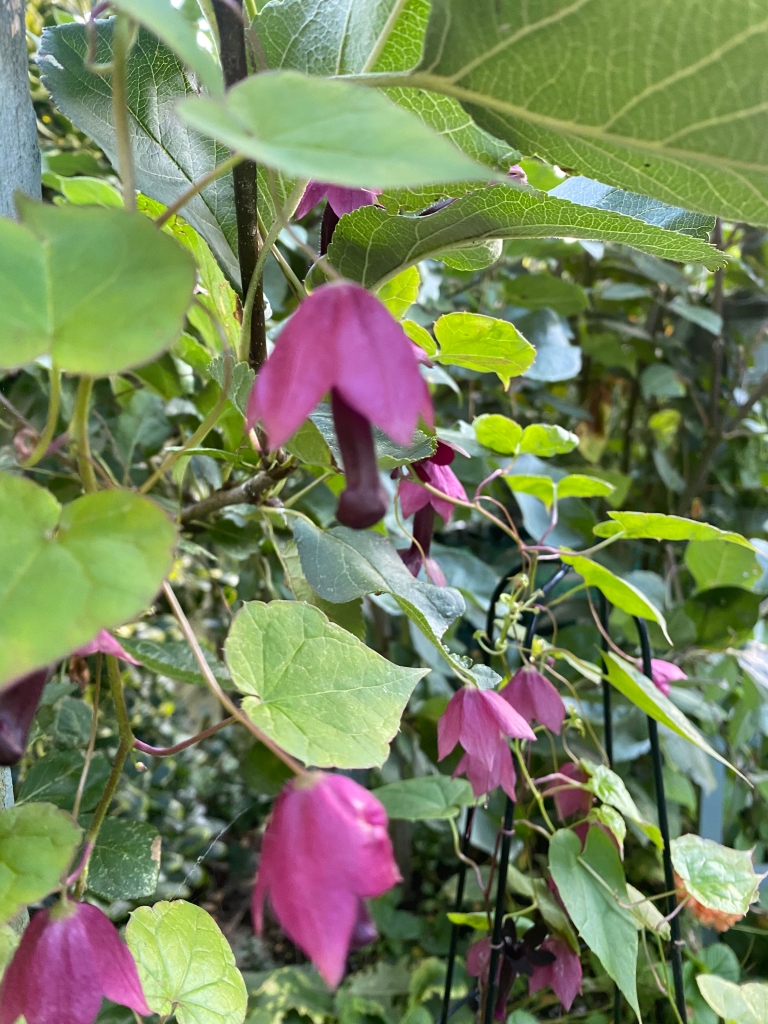
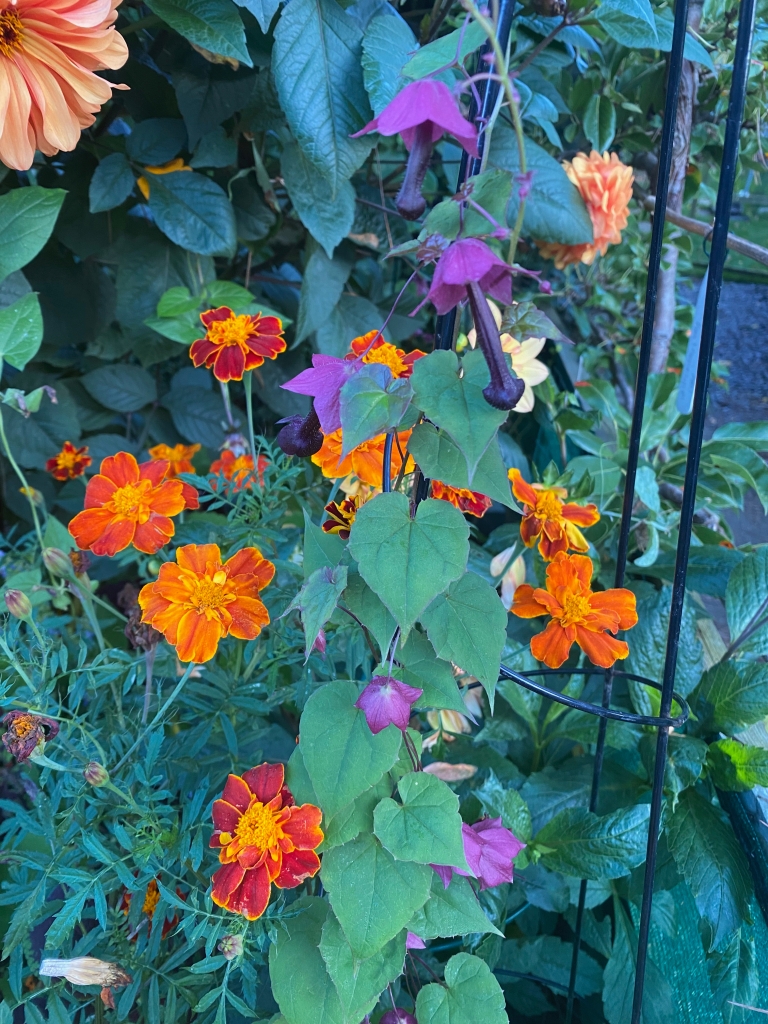
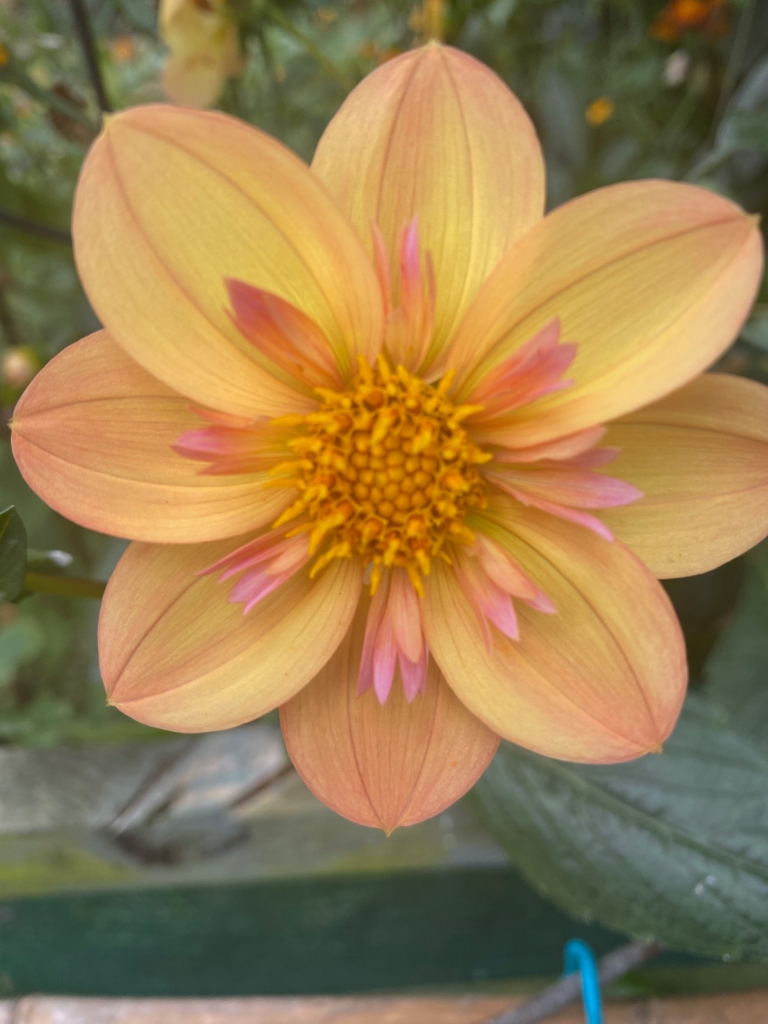
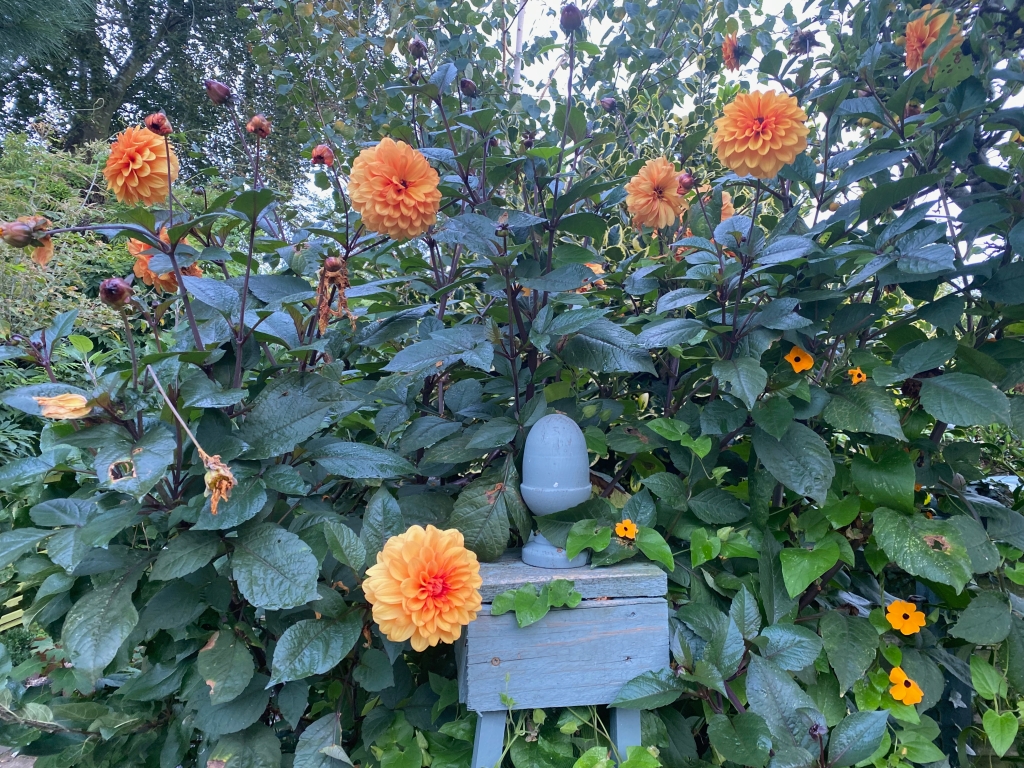
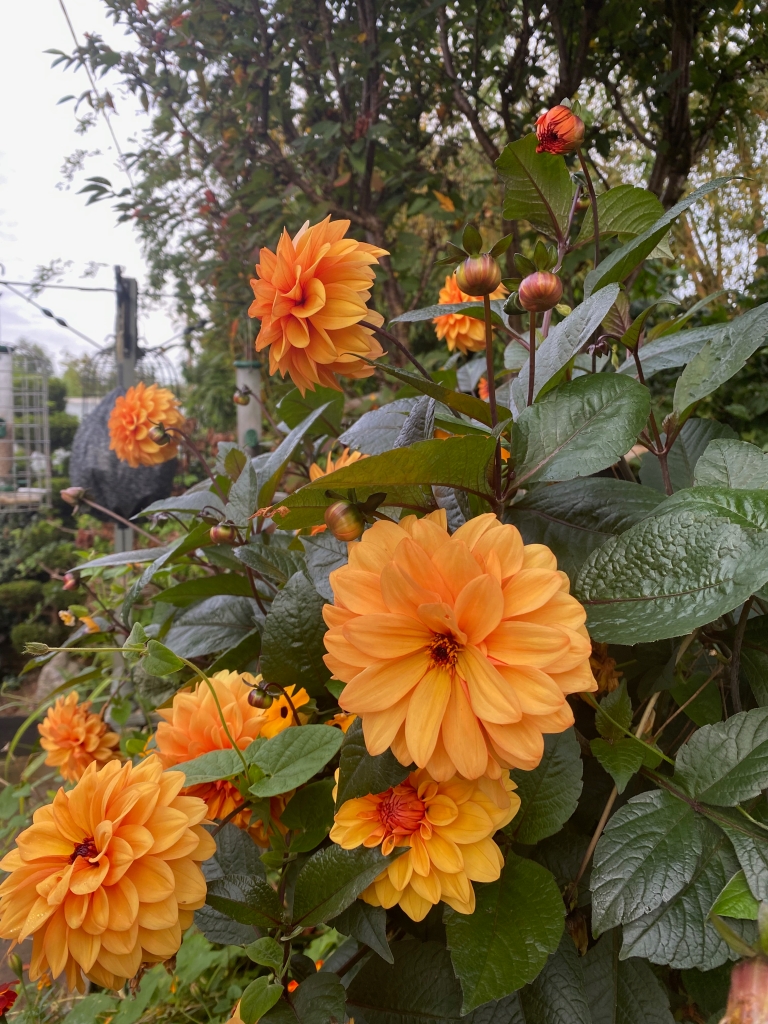
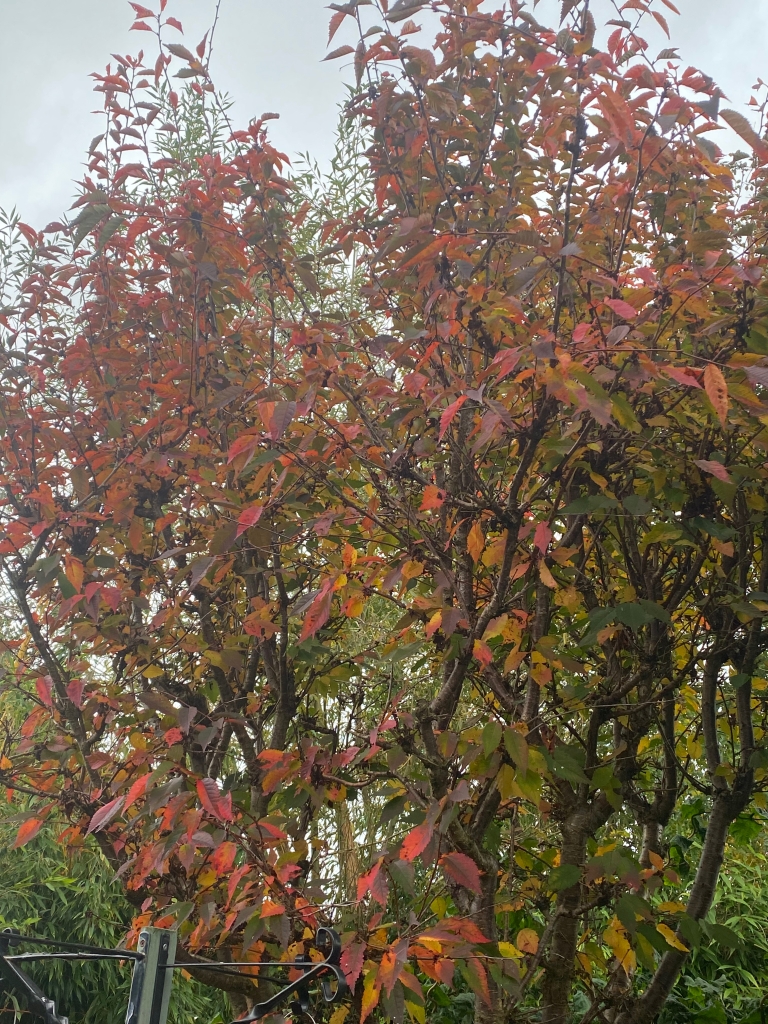

What was your garden highlights in 2023?
Happy New Gardening Year.
Our Garden@19. The Life of Brian.


































What was your garden highlights in 2023?
Happy New Gardening Year.
It has been said many times during the pandemic how important gardens and outdoor spaces have become to people from all walks of life.
Whether walking in the city parks or exploring the countryside everyone feels a benefit.
Those of us with gardens have also found them sanctuaries either to sit in enjoying a beverage of your choice or with your head down planting, weeding or sowing, when you soon forget everything else that has been going on.
When gardens have been able to open to the public there has been an increase in visitors, delighted to be able to visit gardens again.
Historically, gardens have always been considered sanctuaries, from the ancient Islamic gardens to the tranquillity of Japanese gardens.
Irene and I have, for some time, been attracted to Japanese style gardens, inspired by visits to Japanese gardens with the Japanese Garden Society. Most notable to Tatton Park where we meet Professor Fukuhara who helped with the restoration of their Japanese garden.
He took us inside the Japanese garden at Tatton and gave us a tour explaining the restoration of this famous garden.
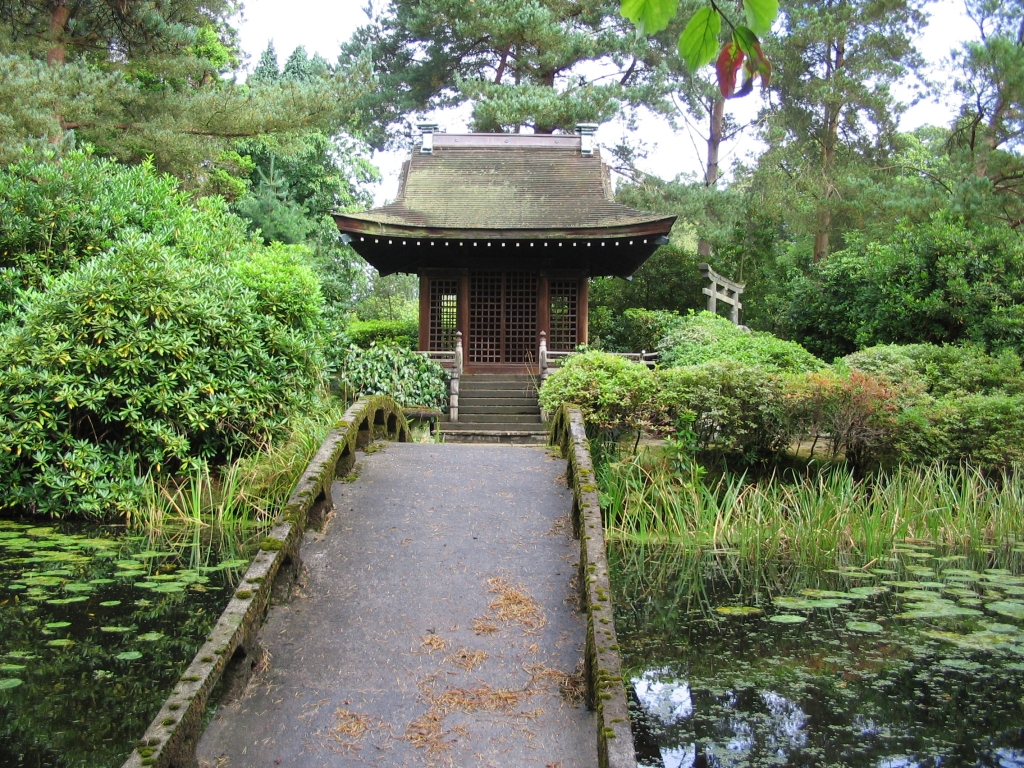
The professor lectures on Japanese garden design in Japan and designed the gold medal and best in show Japanese garden at Chelsea in 2001, now relocated to the National Botanical Gardens in Wales, which we have visited several times.

He also redesigned and supervised the construction of the rock garden at RHS Wisley for the bicentenary of the RHS.
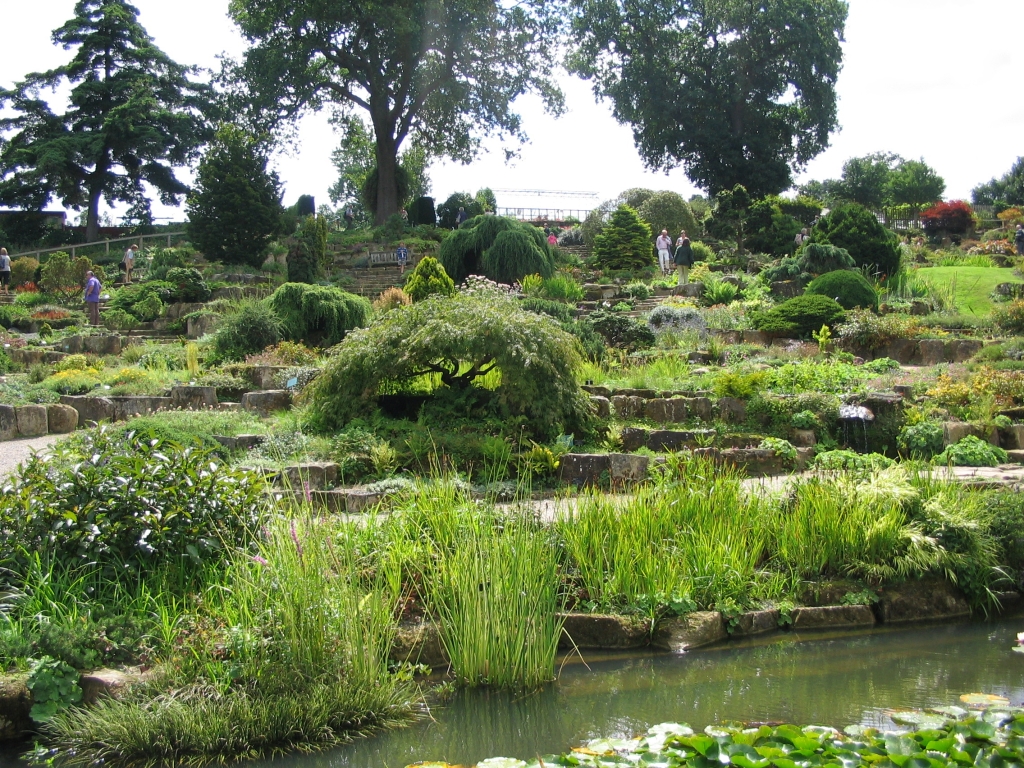
Those of you who have visited our garden will know we have a small enclosed area designed in the style of a Japanese stroll garden. Many visitors comment on the different atmosphere when they enter and sit in the shelter. With the three essential elements of a Japanese garden, rocks, water and plants, there is at the one entrance a Cherry tree.

Inside there are flowering spring trees, shrubs, bamboo and Acers, for their wonderful leaf colour, with rocks and a dry river bed leading to the Bamboo water spout.

The other gateway is covered with the stunning Japanese white Wisteria, floribunda ‘ Alba .‘
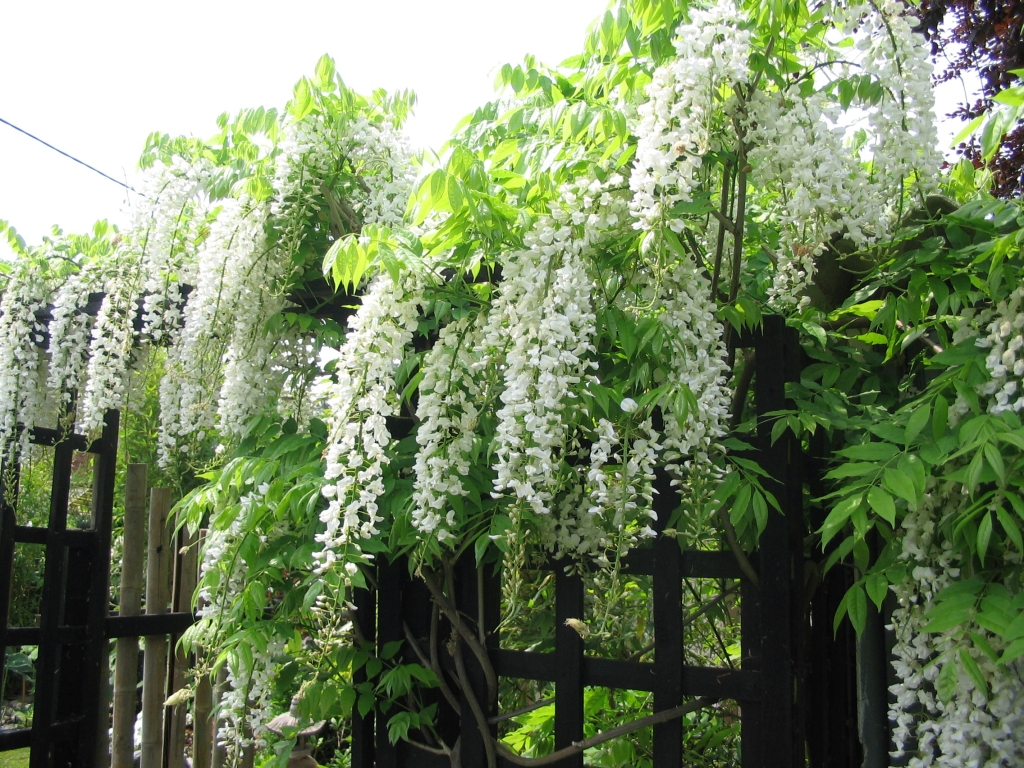
These elements can, I think, be easily incorporated into any garden or even just on a patio to help bring that sense of peace and tranquillity that many have searched for during these times.
Little did I realise when I booked this month’s speaker, for our garden club, on Japanese garden design history how important some of these elements in a garden would become to those of us who are fortunate to own a garden.

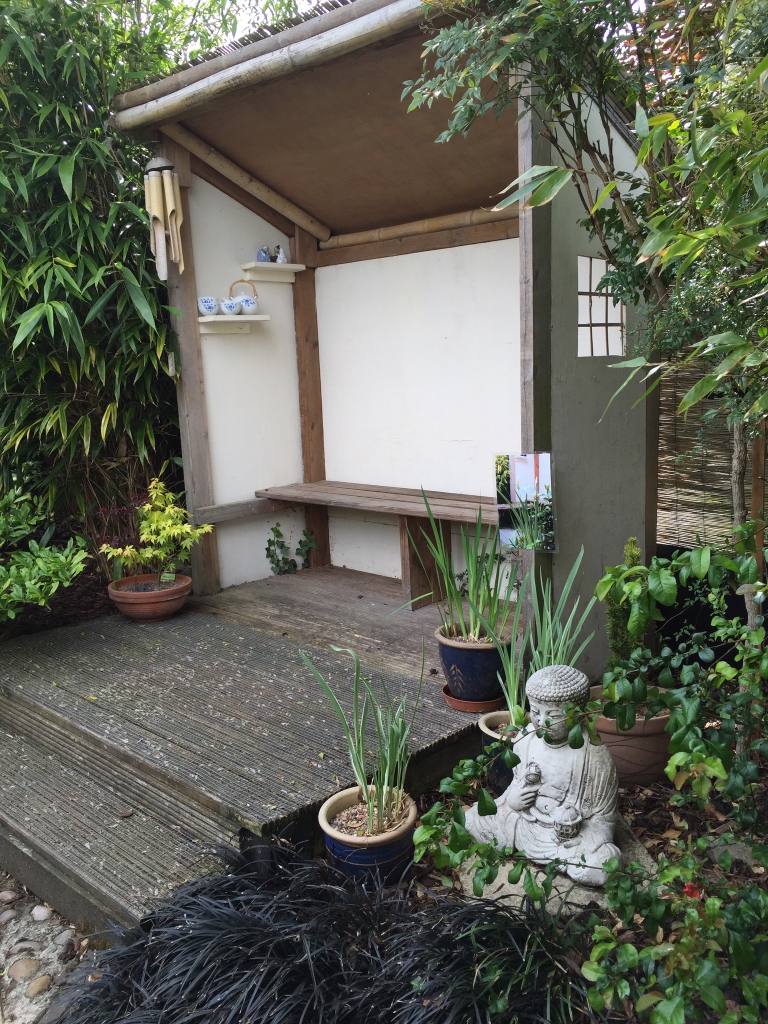
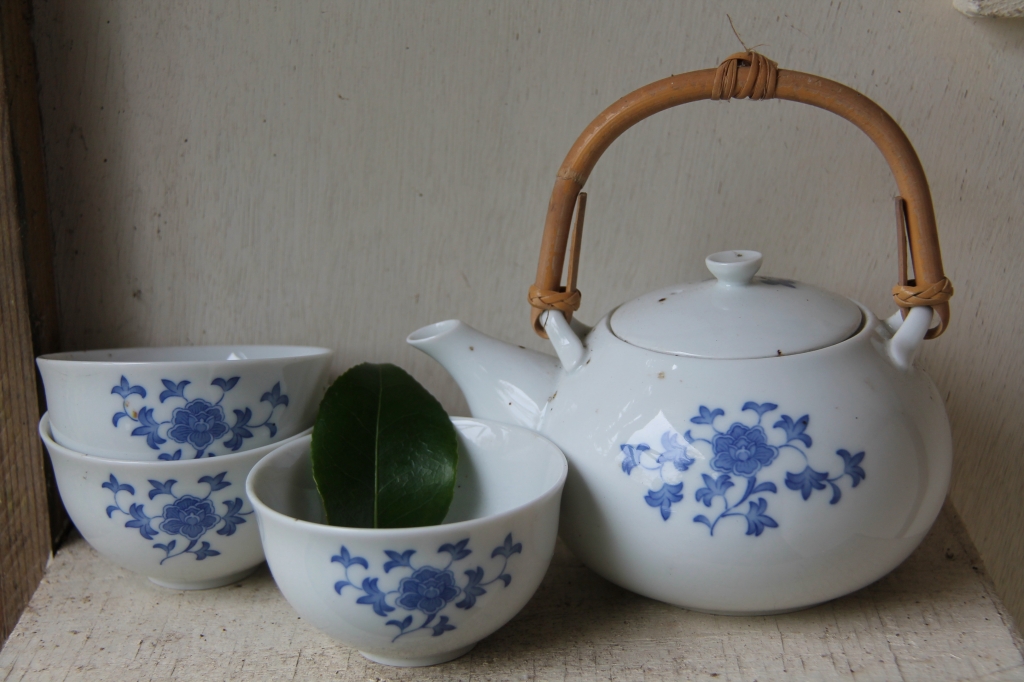
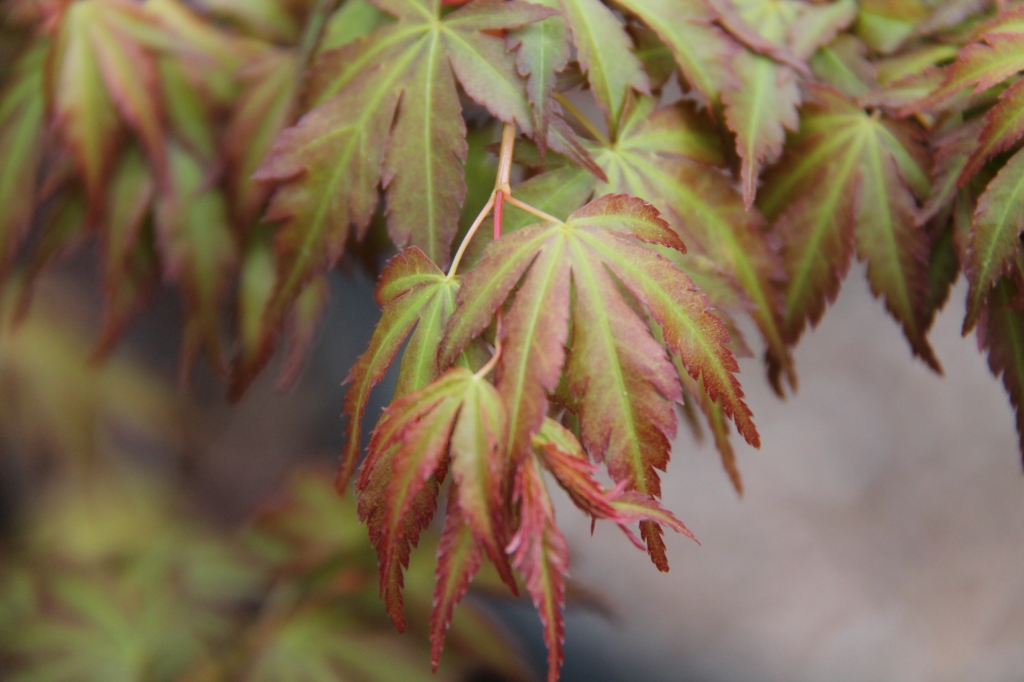
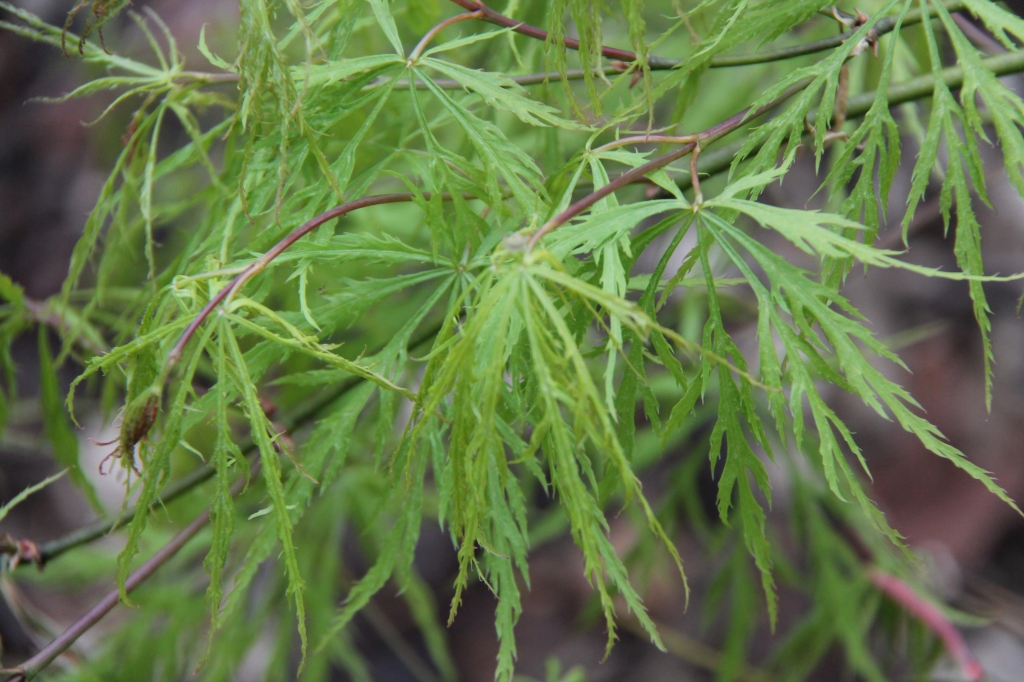
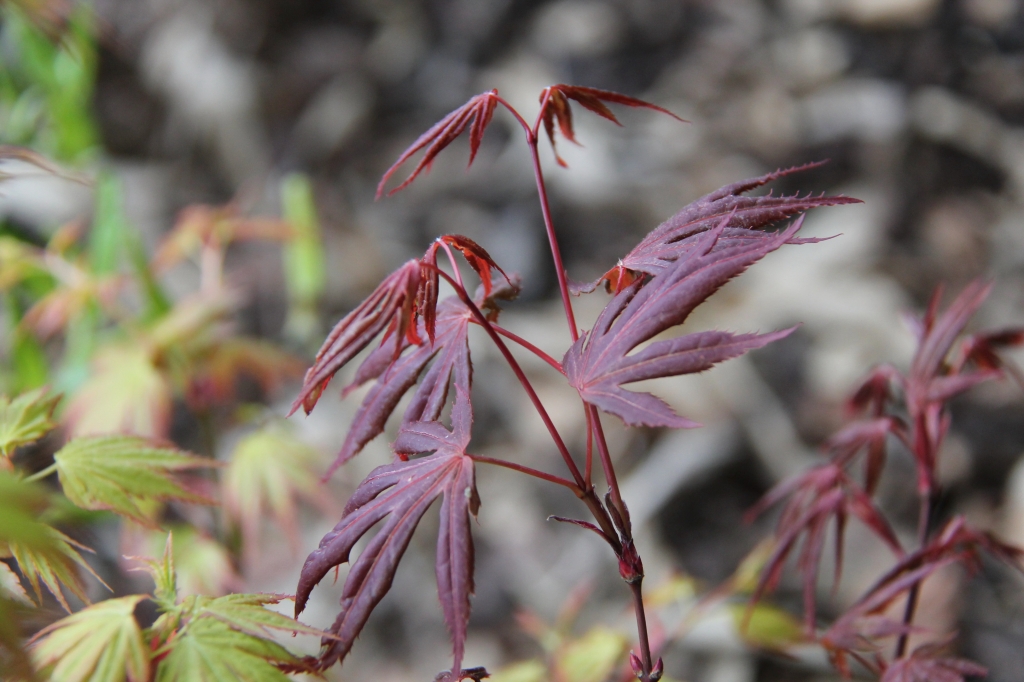

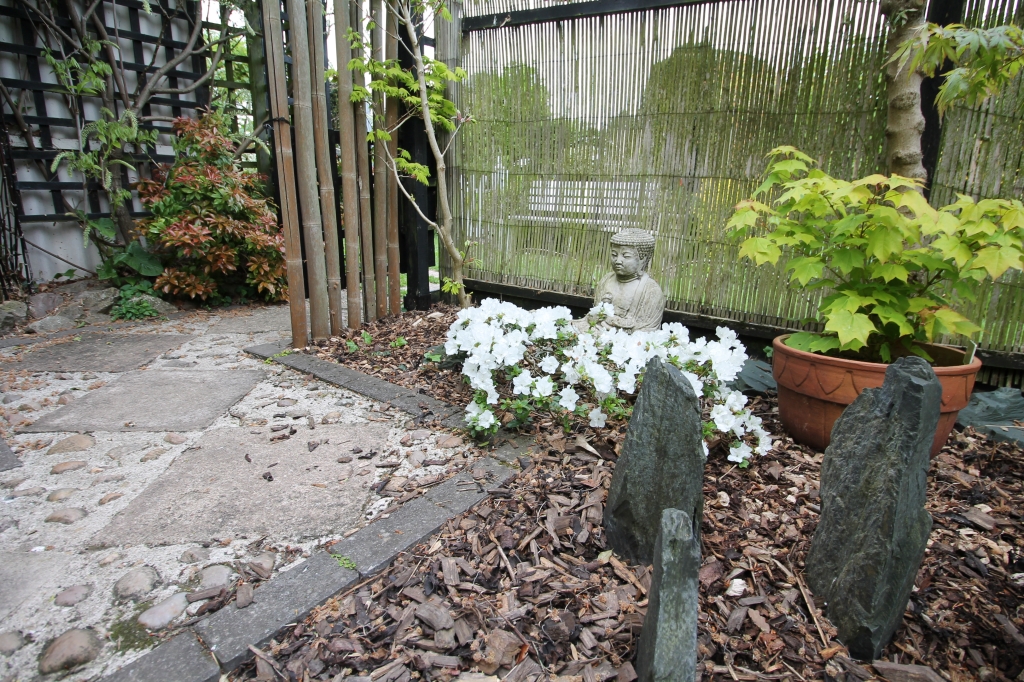
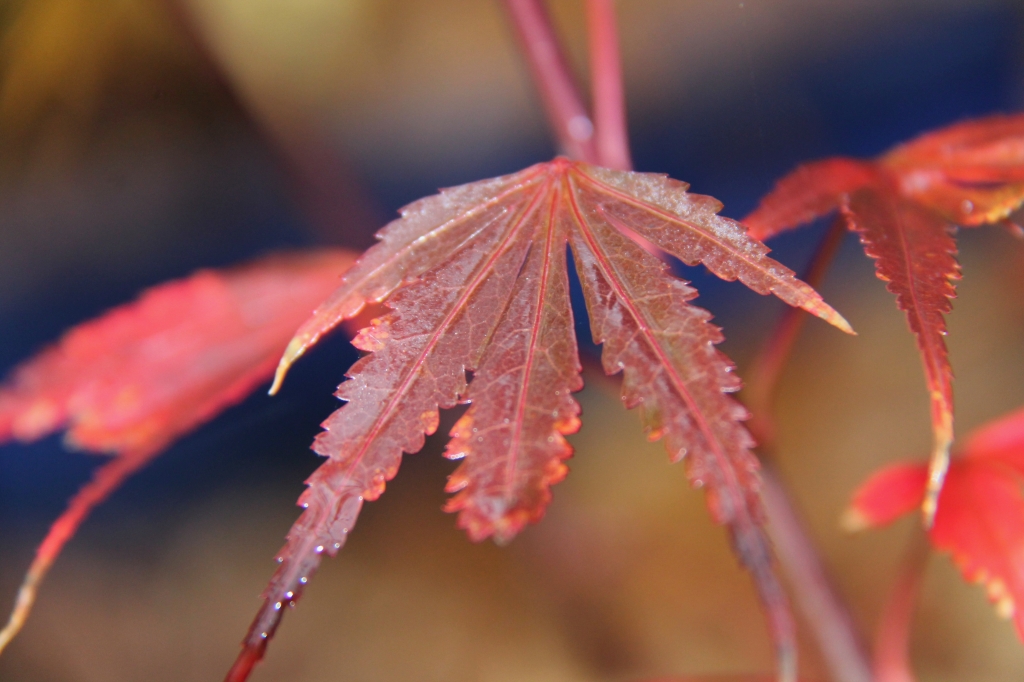
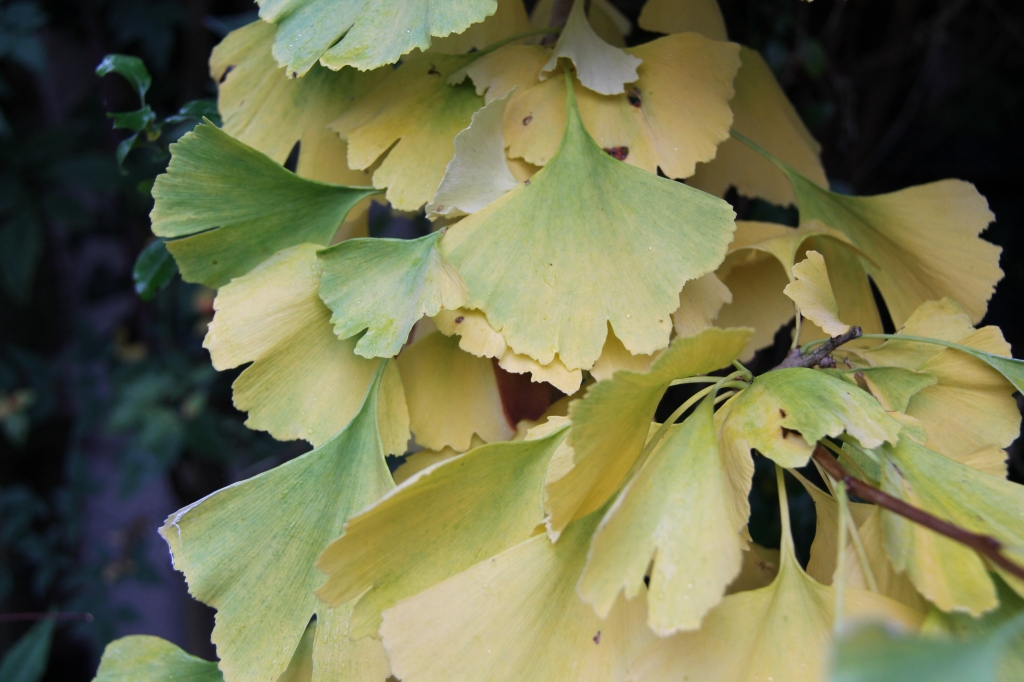
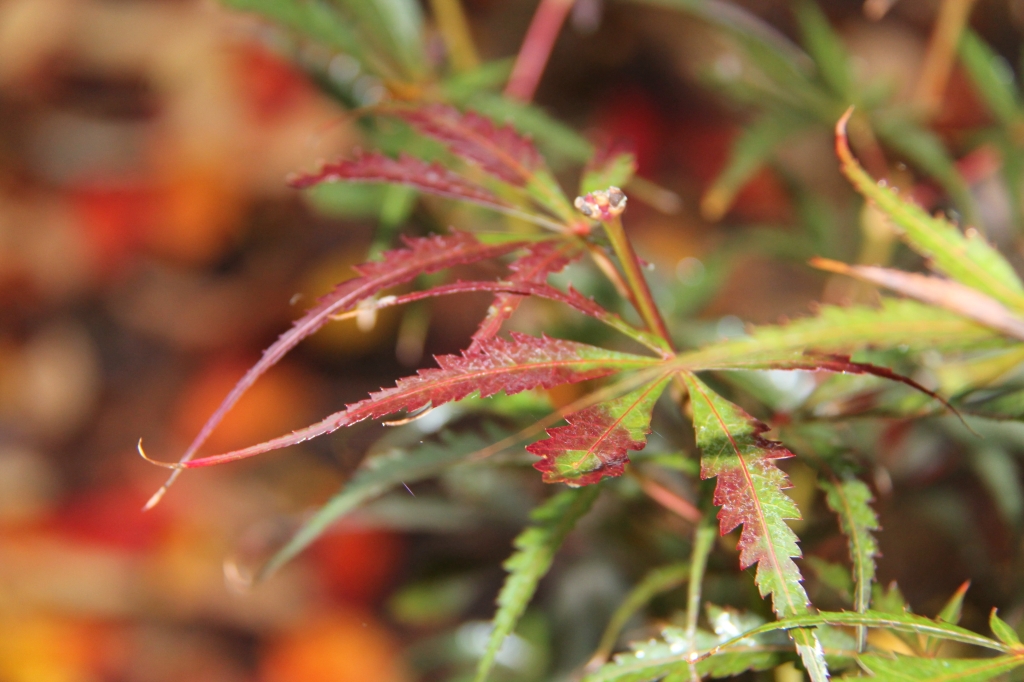

Wishing you peace and tranquility were ever you find it.
Along with many garden owners, we originally decided not to open our garden this year due to the pandemic. However, with the improving situation, we have now held popup openings in June and September supporting the charity National garden Scheme. ngs.org.uk
During these days we have also sold plants for St Richards Hospice and at the village of Pirton church fair.
These events have raised just over £1000.
We have to say a big thank you to all our visitors who purchased tickets, refreshments and plants. To the volunteers who manned the stalls and the staff at the National Garden Scheme for their support.
The pictures are from the garden just before the September opening.
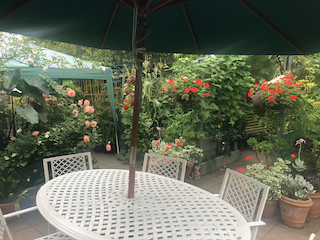
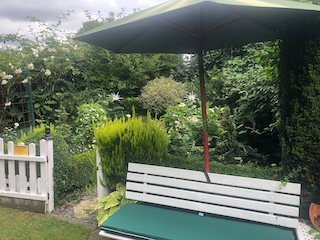
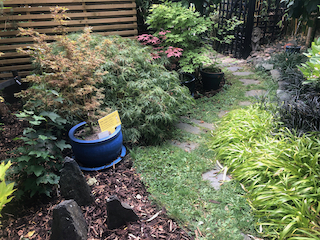
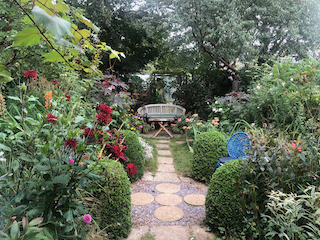


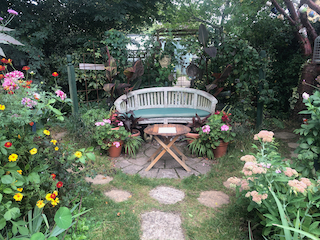
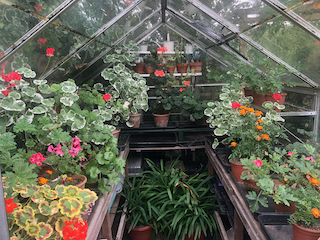
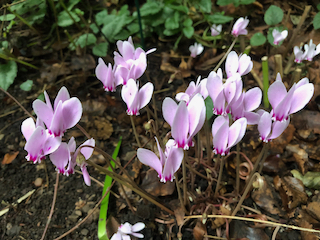

We are going forward with more confidence with five other gardens in the village joining us next year on the 4th and 5th June for the National Garden Scheme.

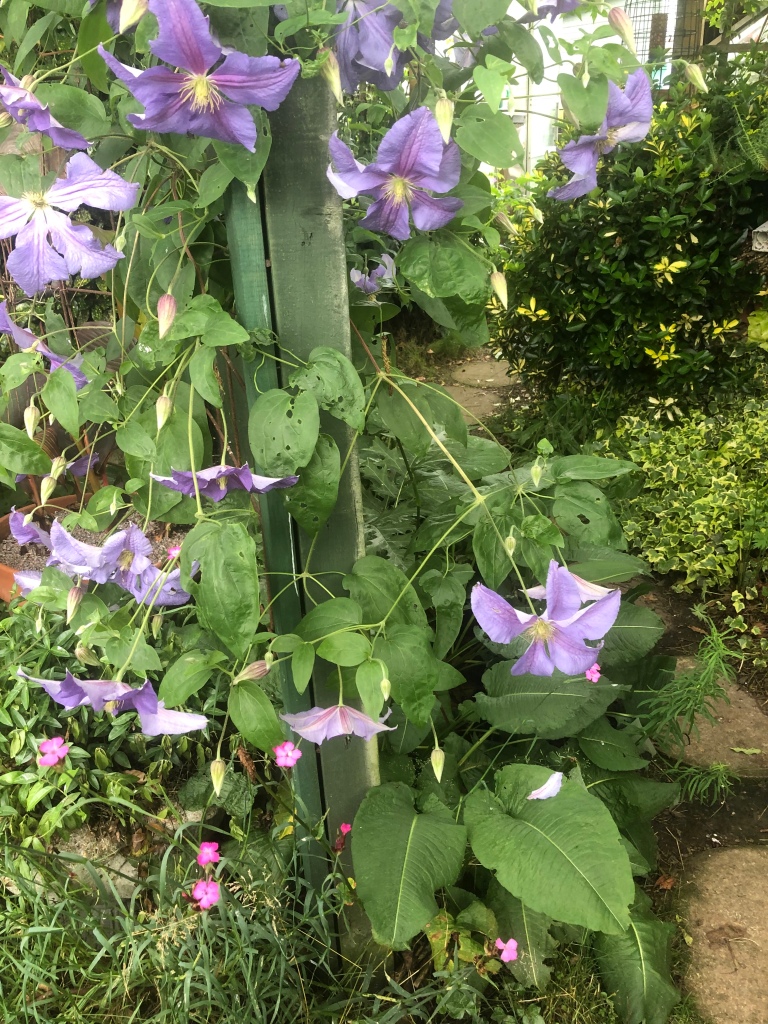
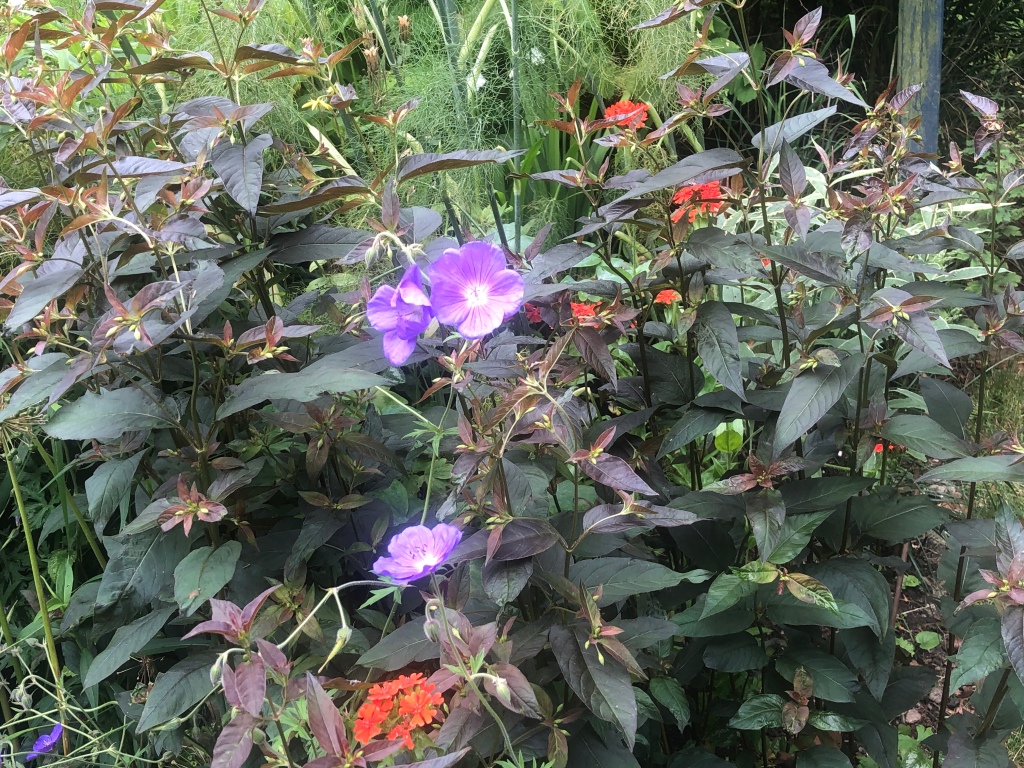
Who would have thought a runner bean flower could be so beautiful?
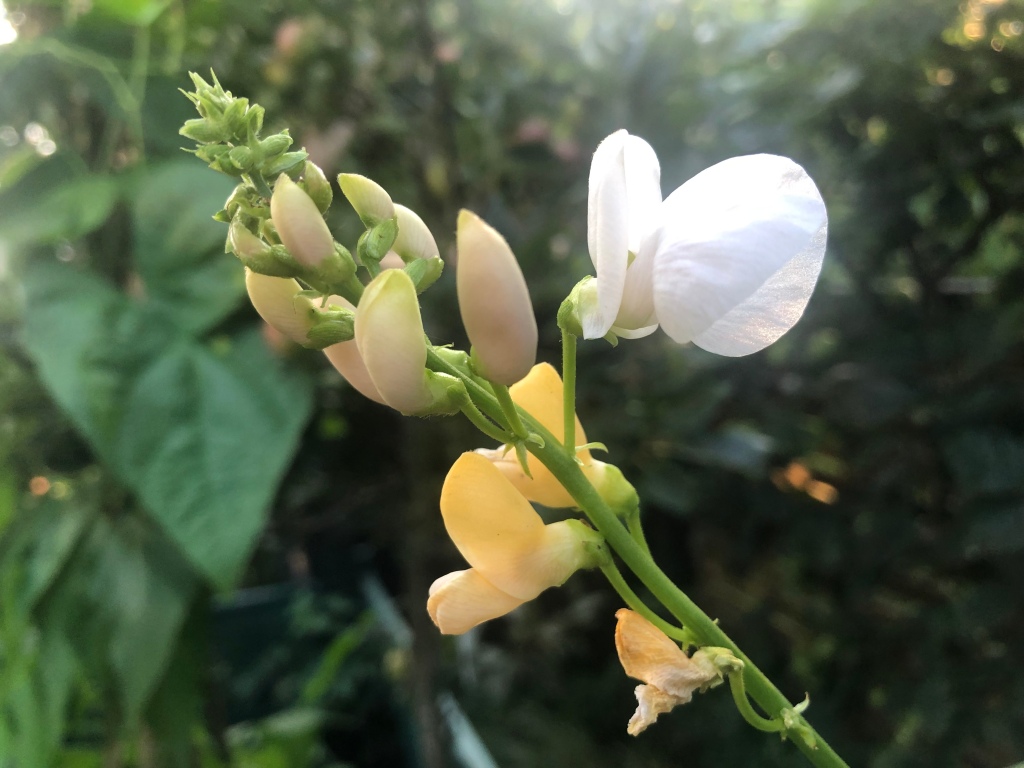
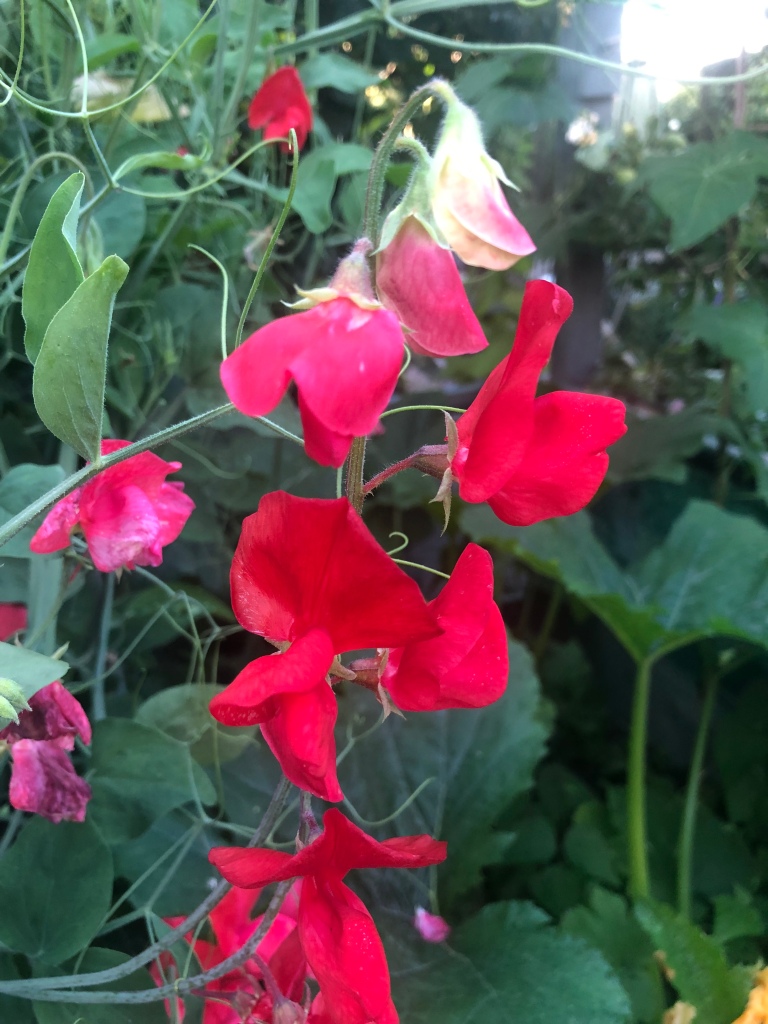
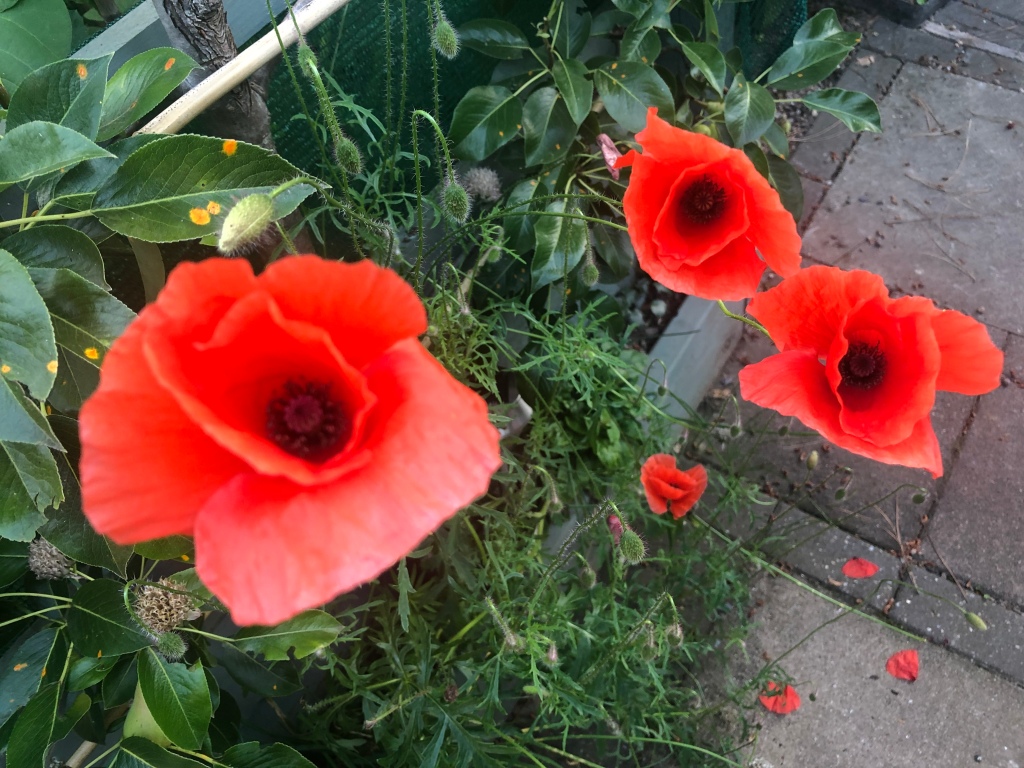

Do you have some July Specials in your garden?

Clematis fusca
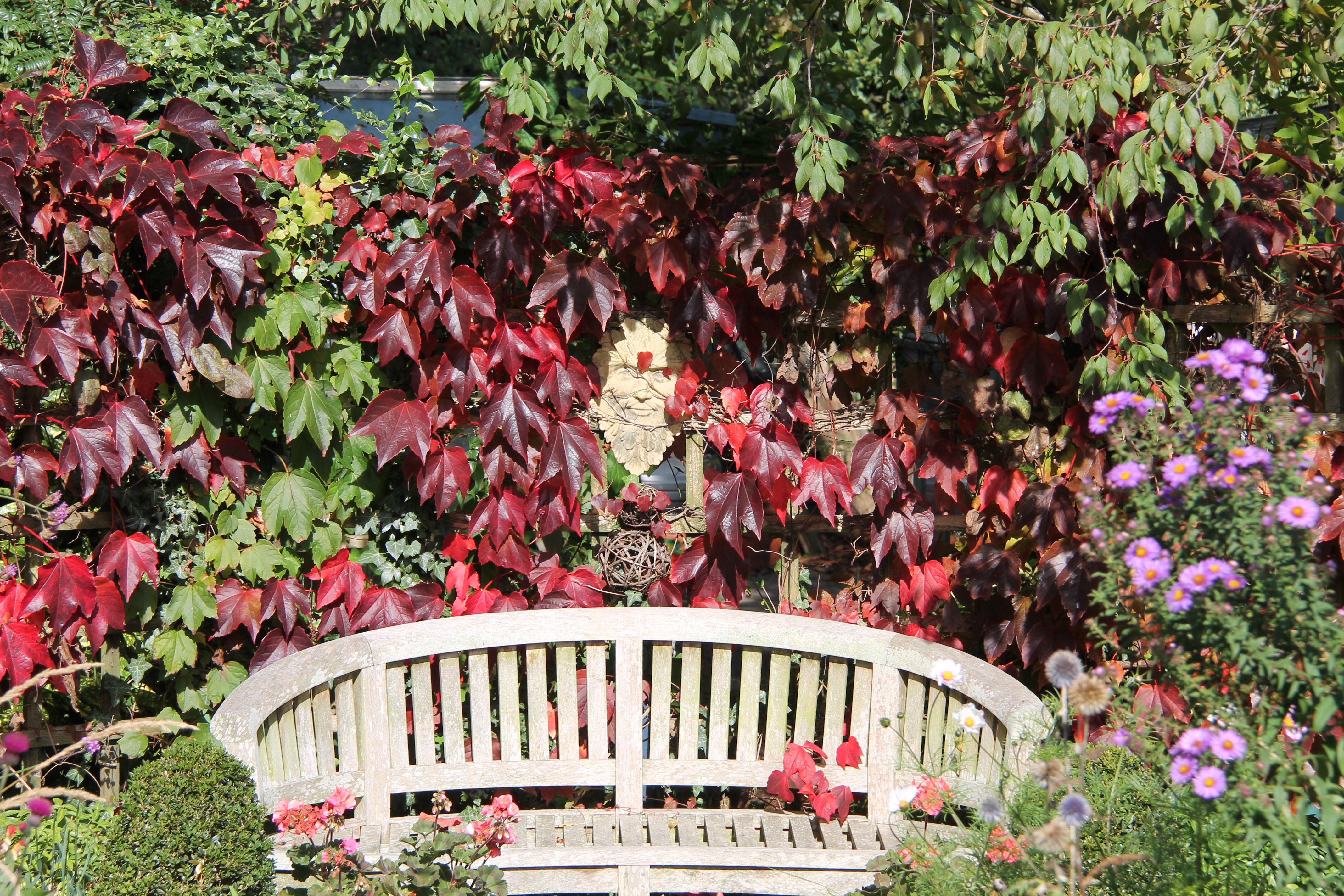
This year I noticed that the Parthenocissus Tri. Veitch, Boston Ivy, behind the banana bench, had been almost completely replaced with wild Ivy. Now while I like Ivy in the garden for its benefit to wildlife, here I would prefer to see a more colourful plant. I decided that it was necessary to remove the ivy.
This revealed that the Ivy was holding up the trellis, with most of it rotten along with two of the posts at ground level. I was left with no other option than to replace it all.
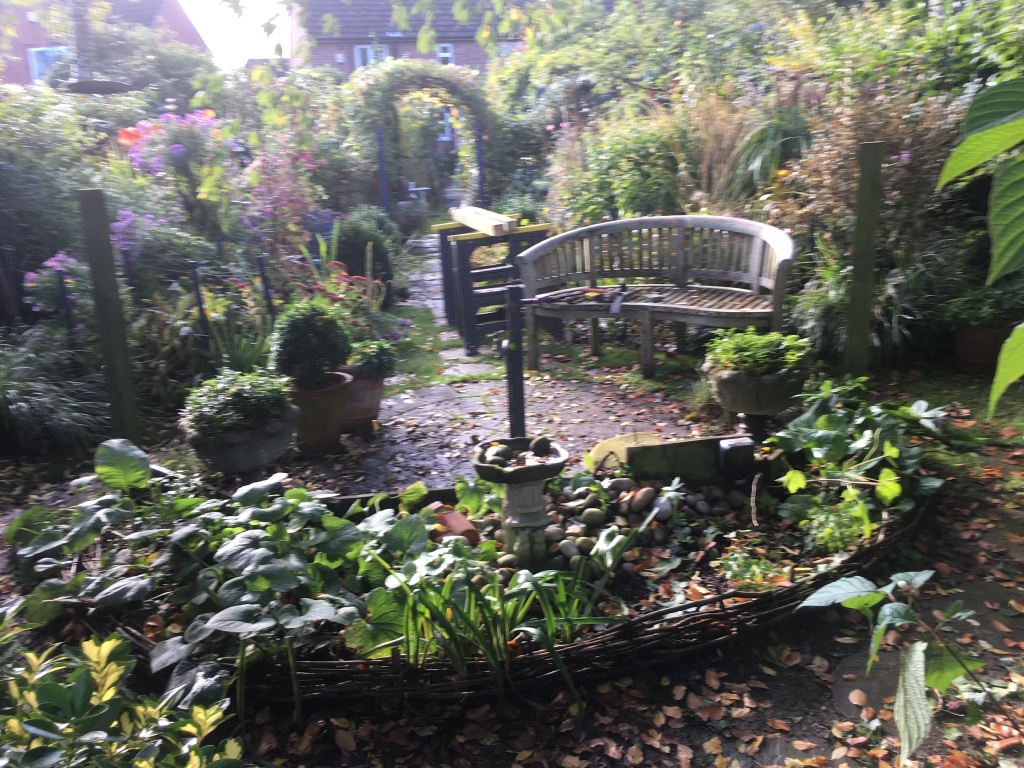
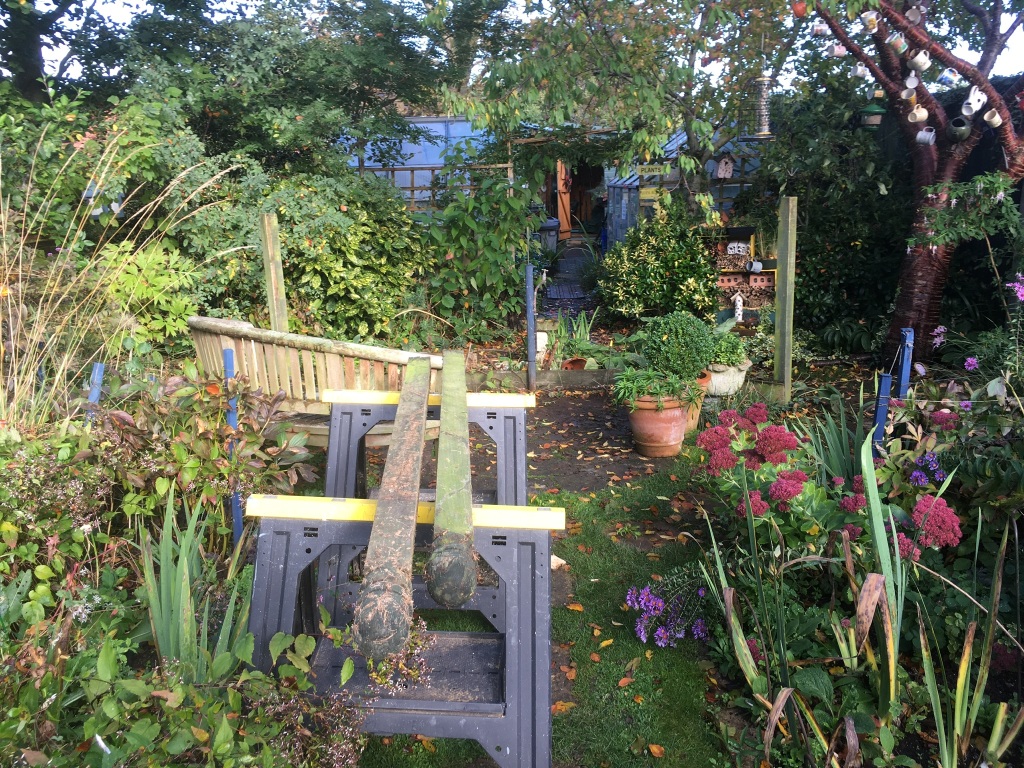
I have, in previous blogs mentioned my inclination to watch TV gardening programmes for inspiration. On several occasions concrete reinforcing steel grid has been used to support climbing plants instead of wood trellis. With the advantages of not going rotten, not requiring painting (the rust look is on trend, so I’m told) and at 3.6m x 2m for just under £20 is cheaper than trellis. Two repair spikes were required with some rapid set postcrete to repair the two rotten posts, then a coat of wood preservative applied. Next grid was cut to size with a steel cutting angle grinder. The grid was fixed to the posts with 2×1” treated and stained timber screwed through to the posts.

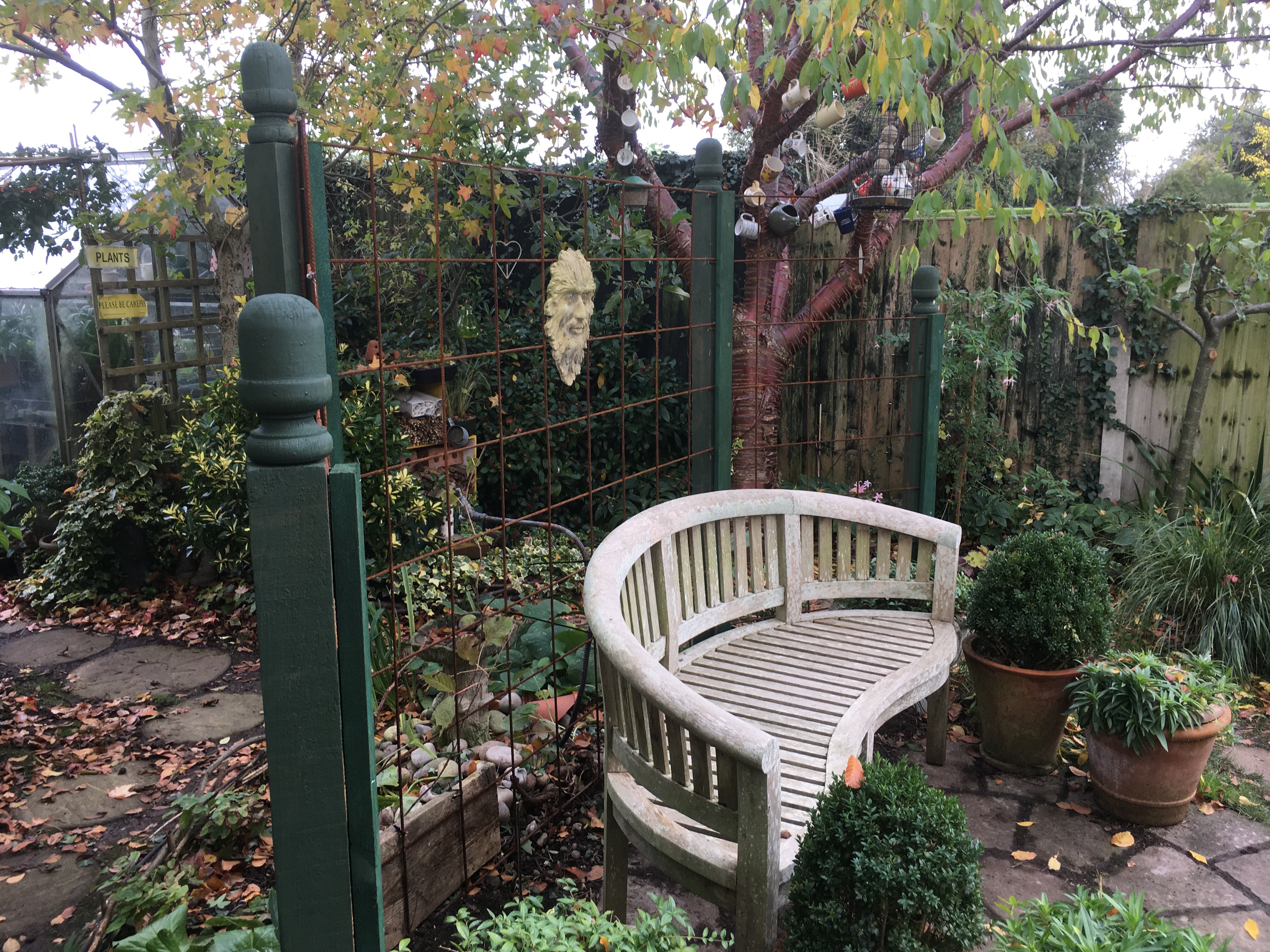
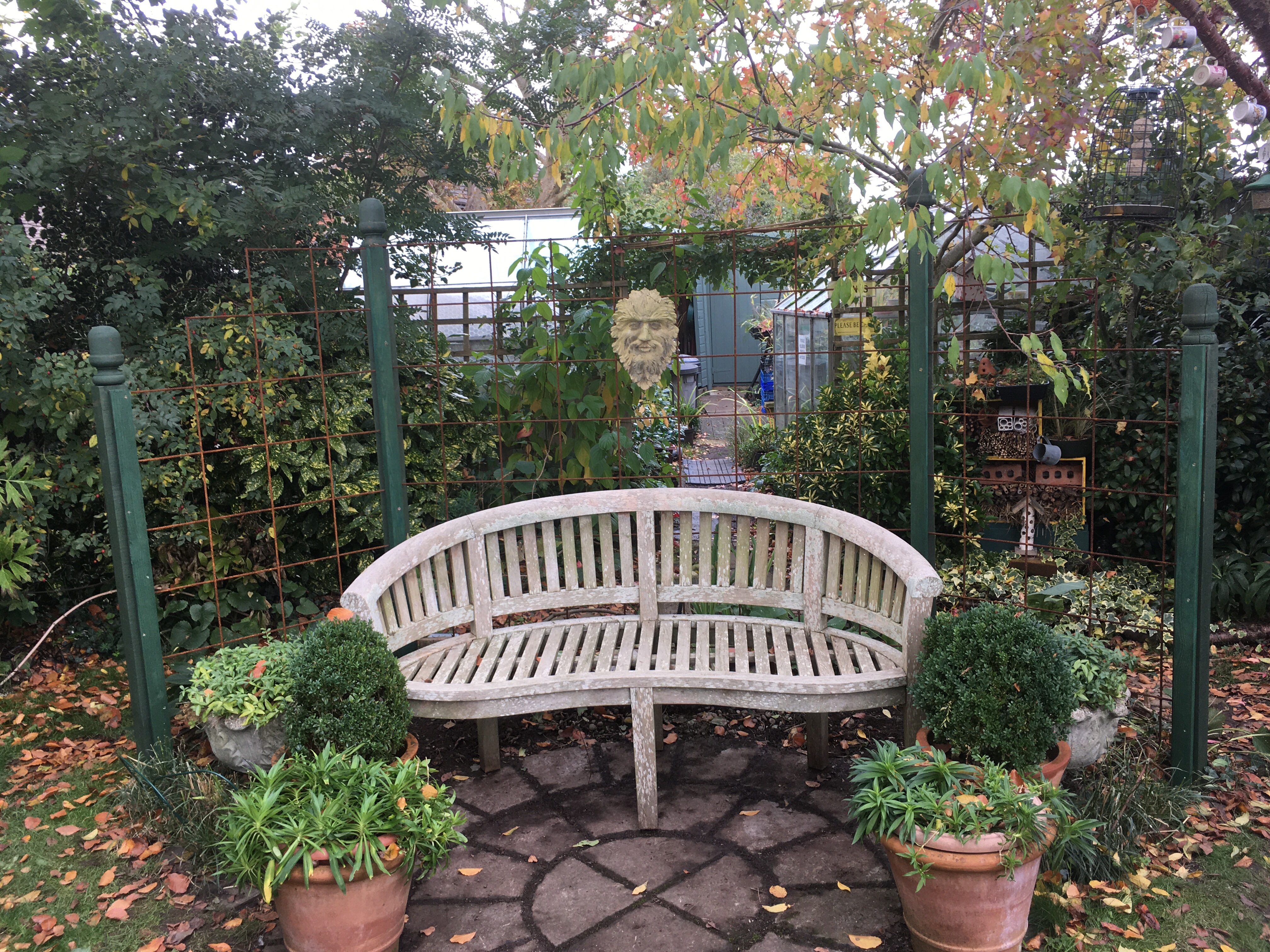
Have you had any unexpected autumn Projects?
I have long held the view that autumn is the beginning of the gardening year, preparing the garden and the plants for their winter rest before the explosion of spring and summer glory.
The main autumn project, this year, has been to move plants into their correct positions!
I am sure many of you can relate to the gardener’s curse of initially positioning plants in the wrong place.
Two of the first candidates for moving were the Cytisus, ‘Golden Cascade’ and Albus. While they produced wonderful spring colours and scent, they had become far too tall, even with some pruning.

I did not want to completely lose them, following a hard prune, I have moved them to the rear of the borders and hope with generous watering they will successfully establish. This has freed an area, which has been planted with Lupins and Foxgloves to flower in June for the open gardens. The lupins will be treated as annuals, in the Great Dixter way. Colourful exotics such as Dahlias and Cannas will follow.
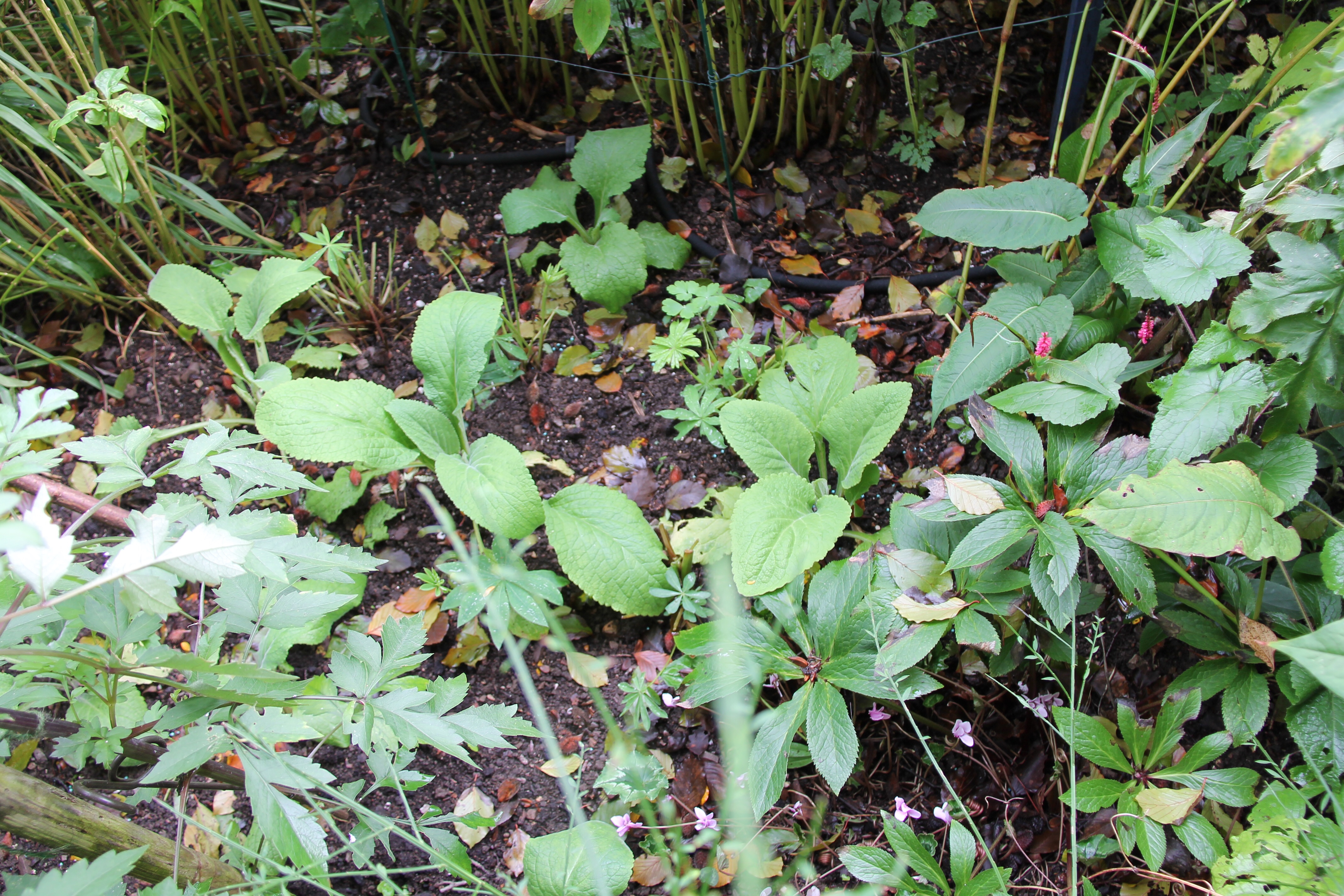

I have for some time had a yearning for a Cornus Kousa ‘Miss Satomi’. After ordering one two years ago, I planted it in the garden. Sadly it died during the winter. The nursery that supplied it kept promising to replace it. When visiting Pershore College plant centre, they had some very reasonably priced Cornus Kousa ‘China Girl’. One was purchased, then planted in ‘Miss Satomi’s allocated position. Soon afterwards the nursery rang to say they had a replacement for me, although they could only obtain ‘Milky Way’. I decided this would have to live in a large pot, on the patio by the entrance to the oriental garden, while I decided where it was going to live permanently.
This turned out to be an ideal position, we could see it from the dining room windows. Three slabs were consequently lifted from the edge of the patio to provide a permanent home. Ironically the flower colours are more like ‘Miss Satomi’ than ‘Milky Way’, The nursery has not returned my email asking if there could have been an identification error!

Several years ago I was given a Rhus hirta Staghorn sumac. Because of its reputation for suckering, it has been residing in a pot on the patio where we could enjoy its beautiful autumn colour.
Last year we inexplicably lost a five year old Snake-bark Acer from the middle of the blue border. This completely unbalanced the border, there is an Acer griseum on the opposite side. Not wishing to risk another reasonably sized, quite expensive tree, I decided to plant the Rhus there, after seeing one looking stunning with it’s autumn colours, in a Piet Oldoulf garden.

I may pot up any suckers to sell on our open days. I think it looks very colourful in its new home among the Asters and grasses.
Moving the plant theatre in project one, freed up an area. This provided a space to plant a Greengage tree that I had purchased as a young bare root tree two years ago. It had been growing on in a pot, now it is planted along with the rhubarb, emptying more large pots.
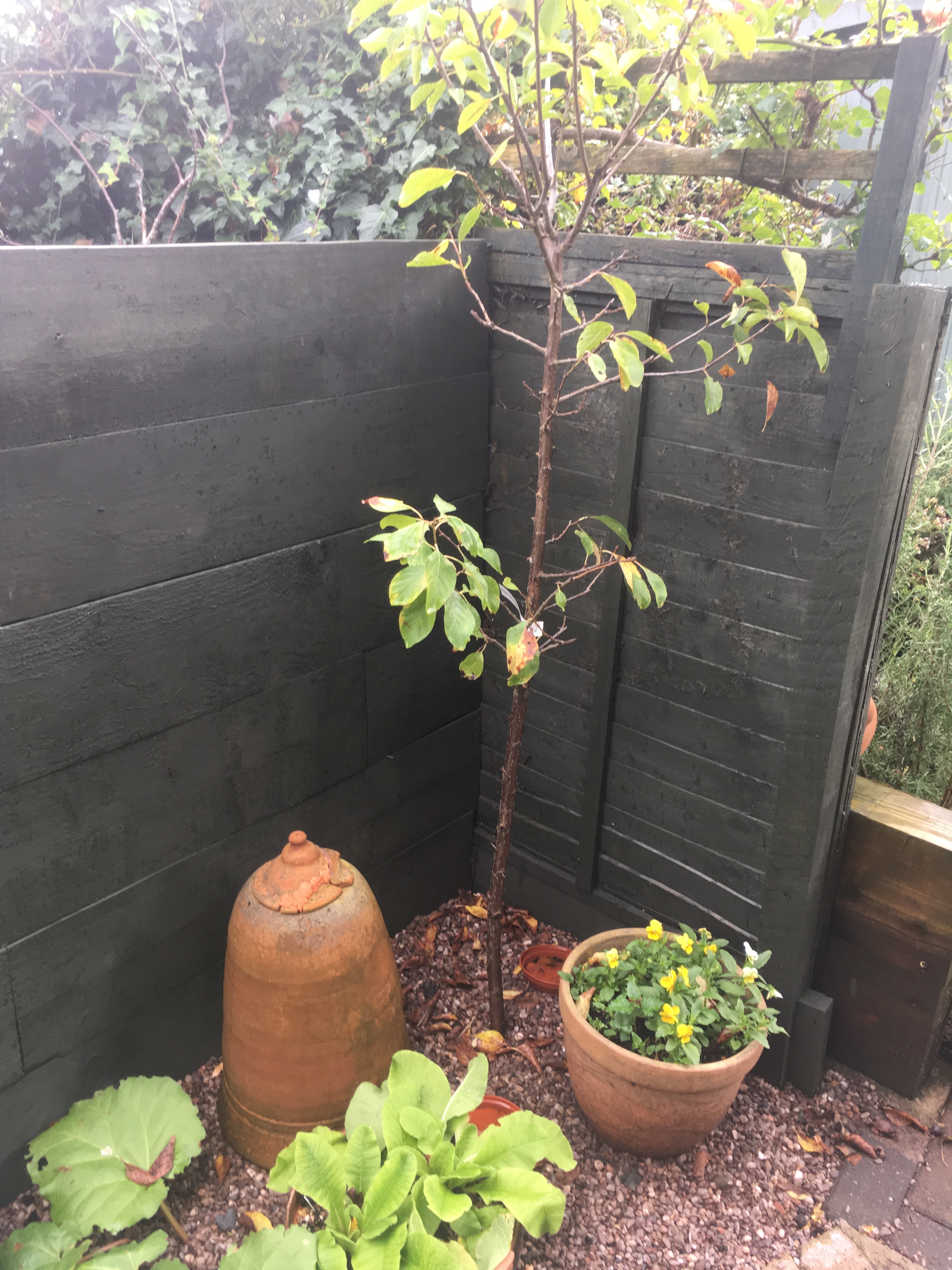
Having admired large pots packed full of colourful exotics and annuals in other gardens, all these freed up pots will provide an opportunity to do the same.

Now to plan filling these!
I have to confess to watching many of the gardening programs on television along with reading gardening magazines, books and of course blogs, for inspiration in planting and design.
One programme featured, what I thought was a good structural design for supporting climbing plants.
When I had finished building my version, I thought it looked too much like railway signals. The original one had used wider timber.
My design consultant (Irene) convinced me it was okay and would soon be covered by the Rose.
I have either been brave or stupid (you will, I am sure, have your own opinion) planted a Rosa banksiae ‘Lutea’, which I have grown from a cutting, to help screen one side of a shed. This is the one I have built the support for.

This is the rose the cutting came from! It has never been pruned.
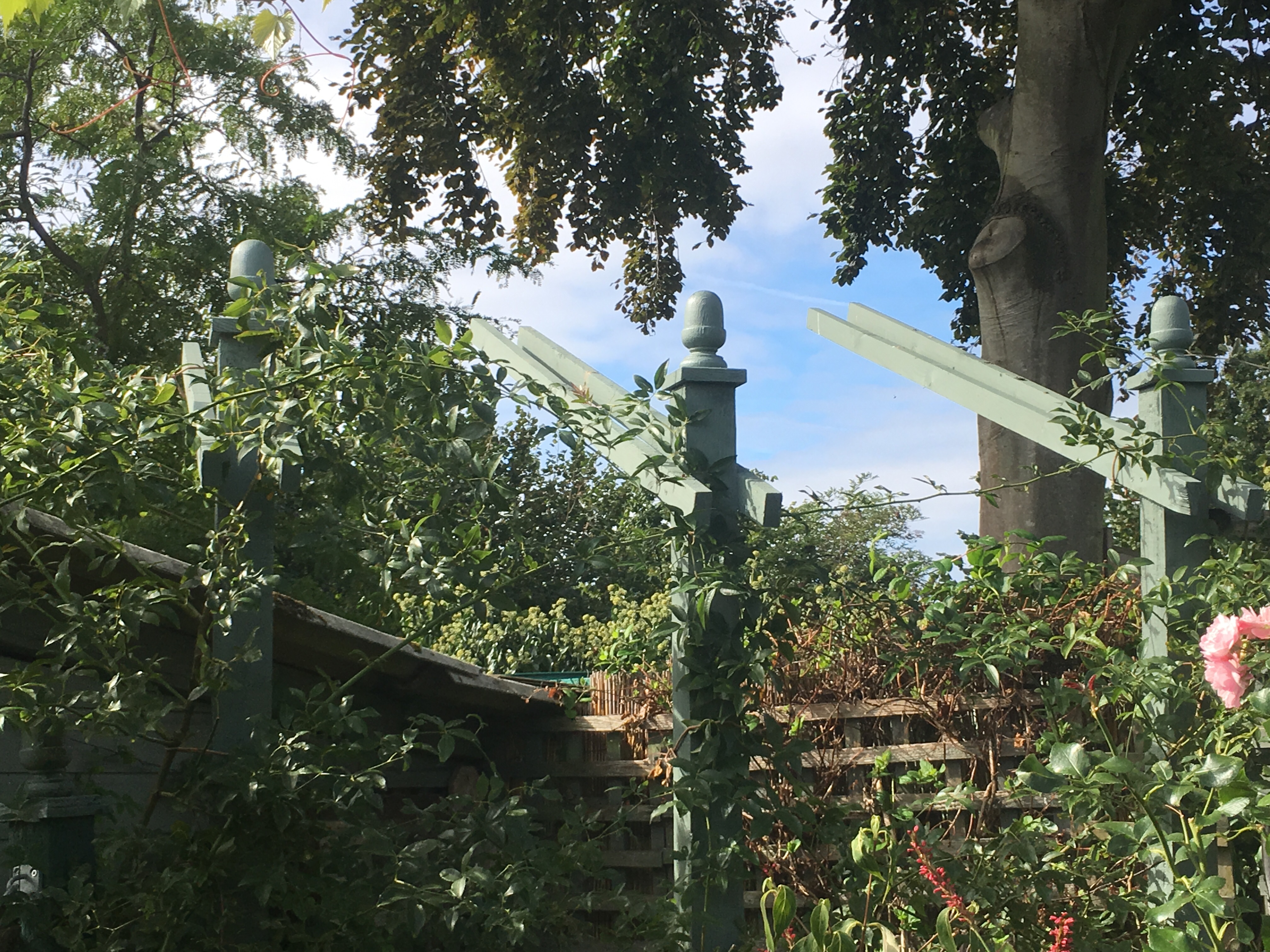
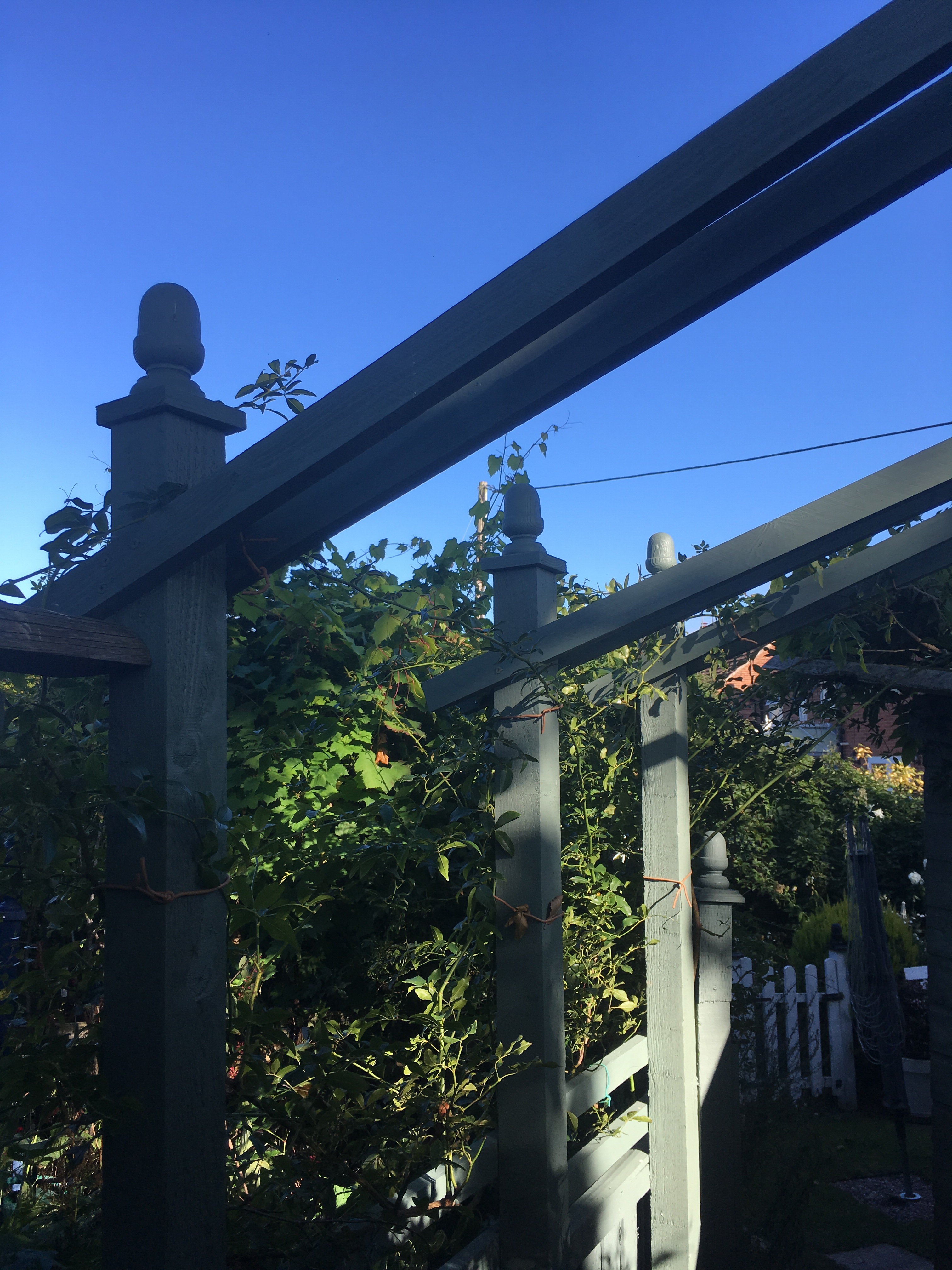
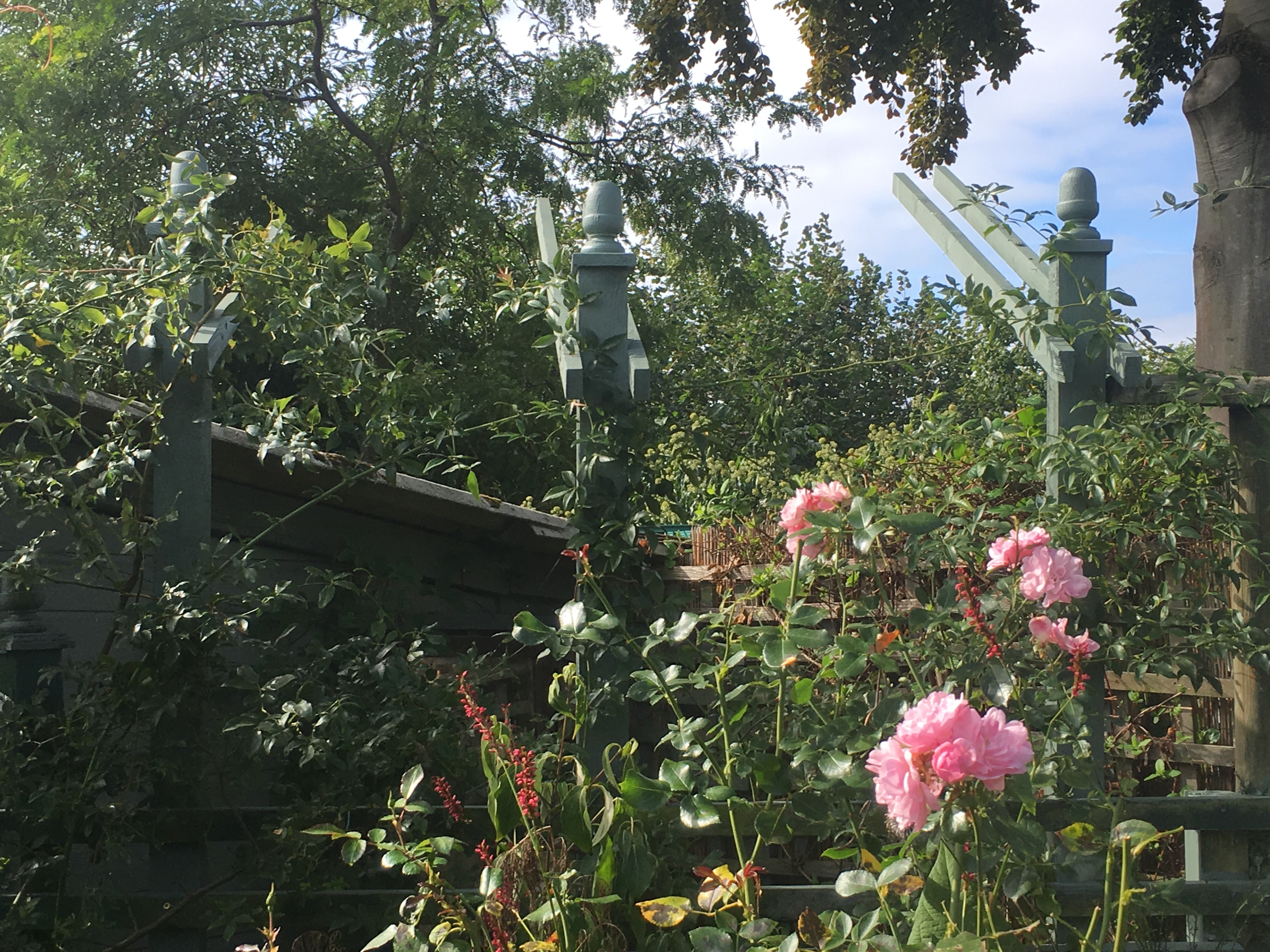
Will it be ideal to ‘train’ a Rose over?
It will certainly need to be pruned.
Visiting RHS Chatsworth Show in June this year, one of the bulb stands had Zantedeschia Contor on display, and in flower. Talking to the owner he reassured me the tubers would flower this summer.
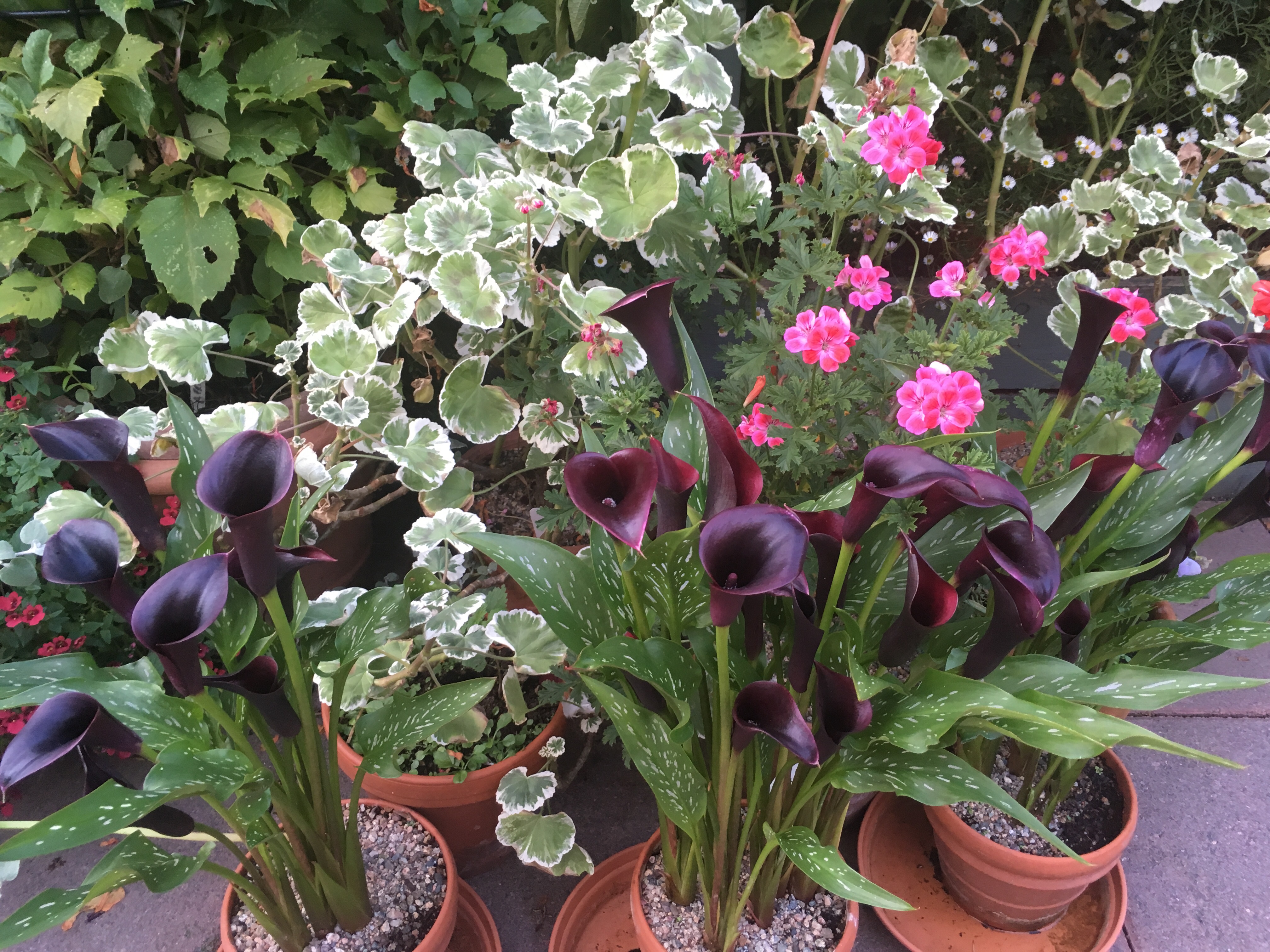
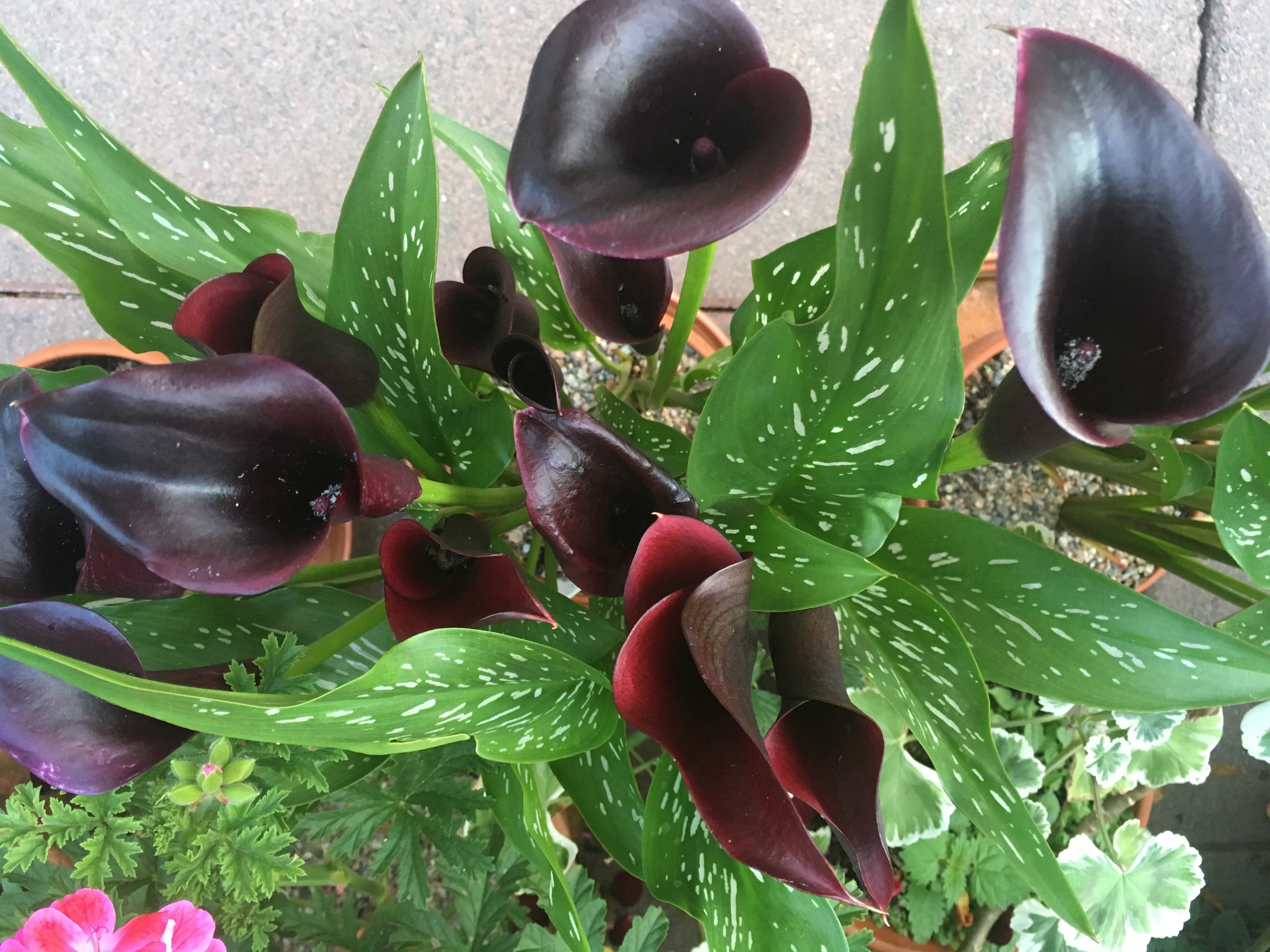
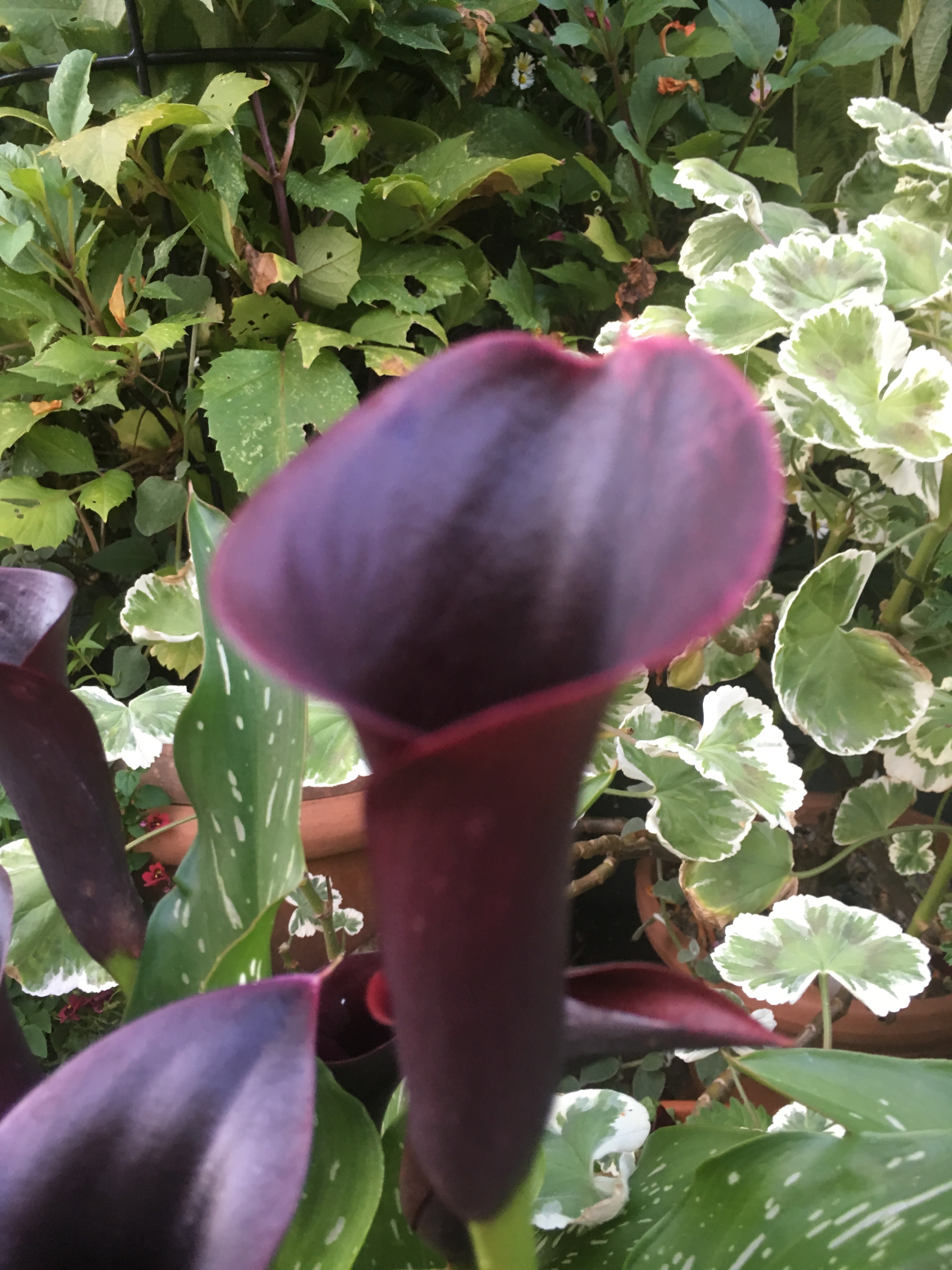


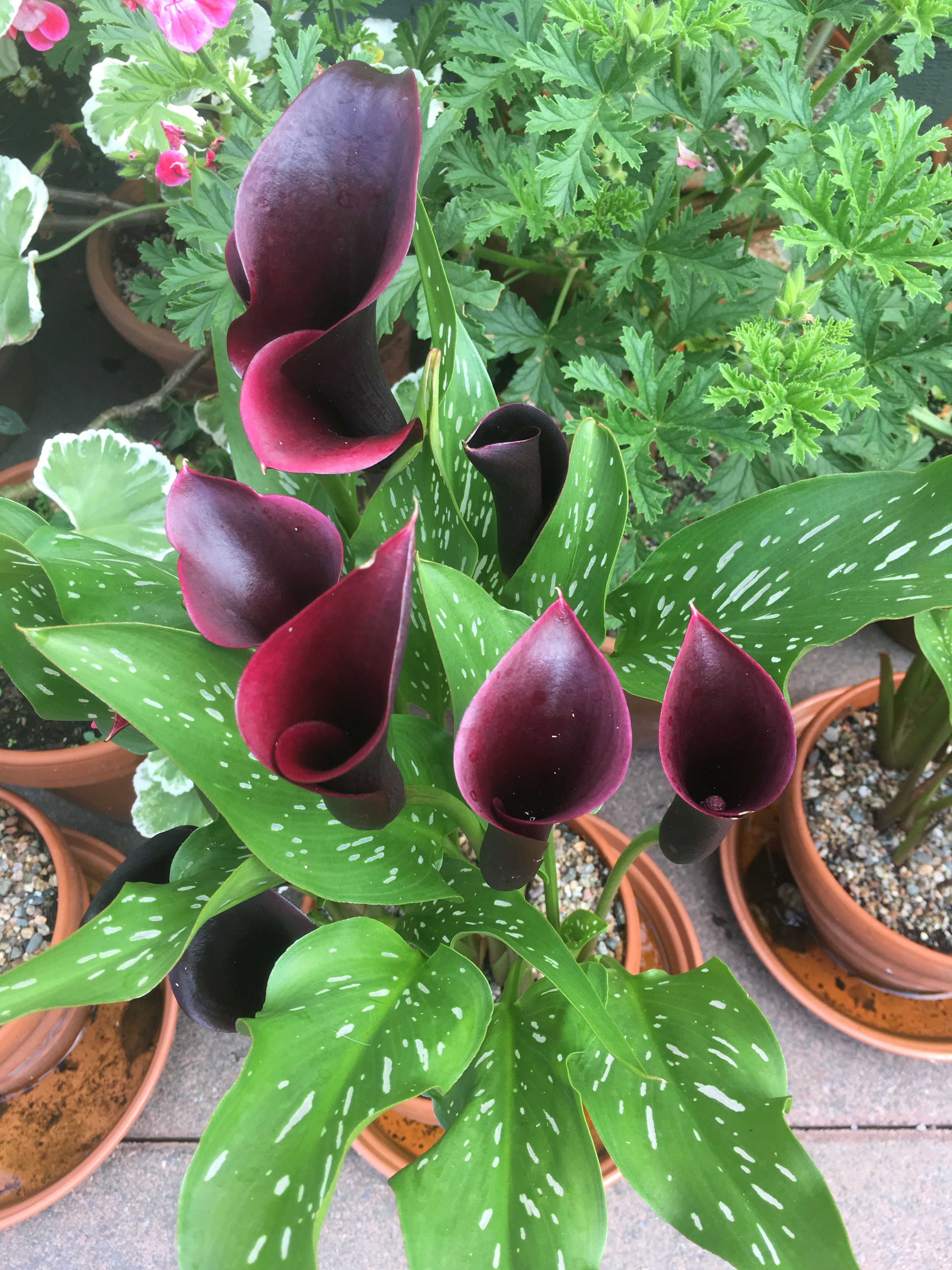 He was right!
He was right!
I am linking with Noelle who has posted her plant of the month.
Do you have one?
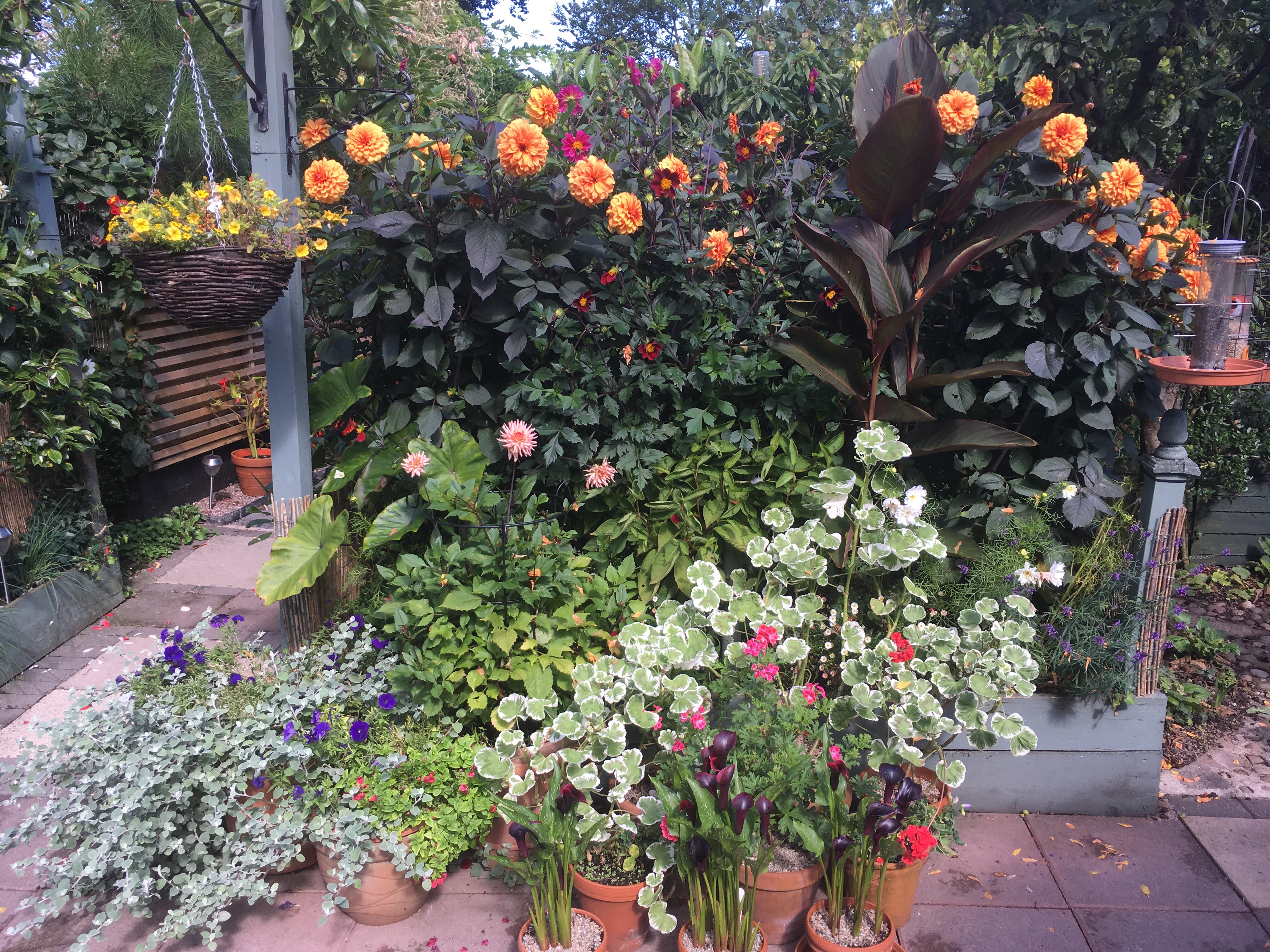
Fig leaf Holly Hocks are my choice, in August, for plant of the month in our garden@19.
I love the delicate colours of this one. The seed was sent to me probably two years ago by Gill Heavens after admiring pictures of them on her blog. This is their first flowering.
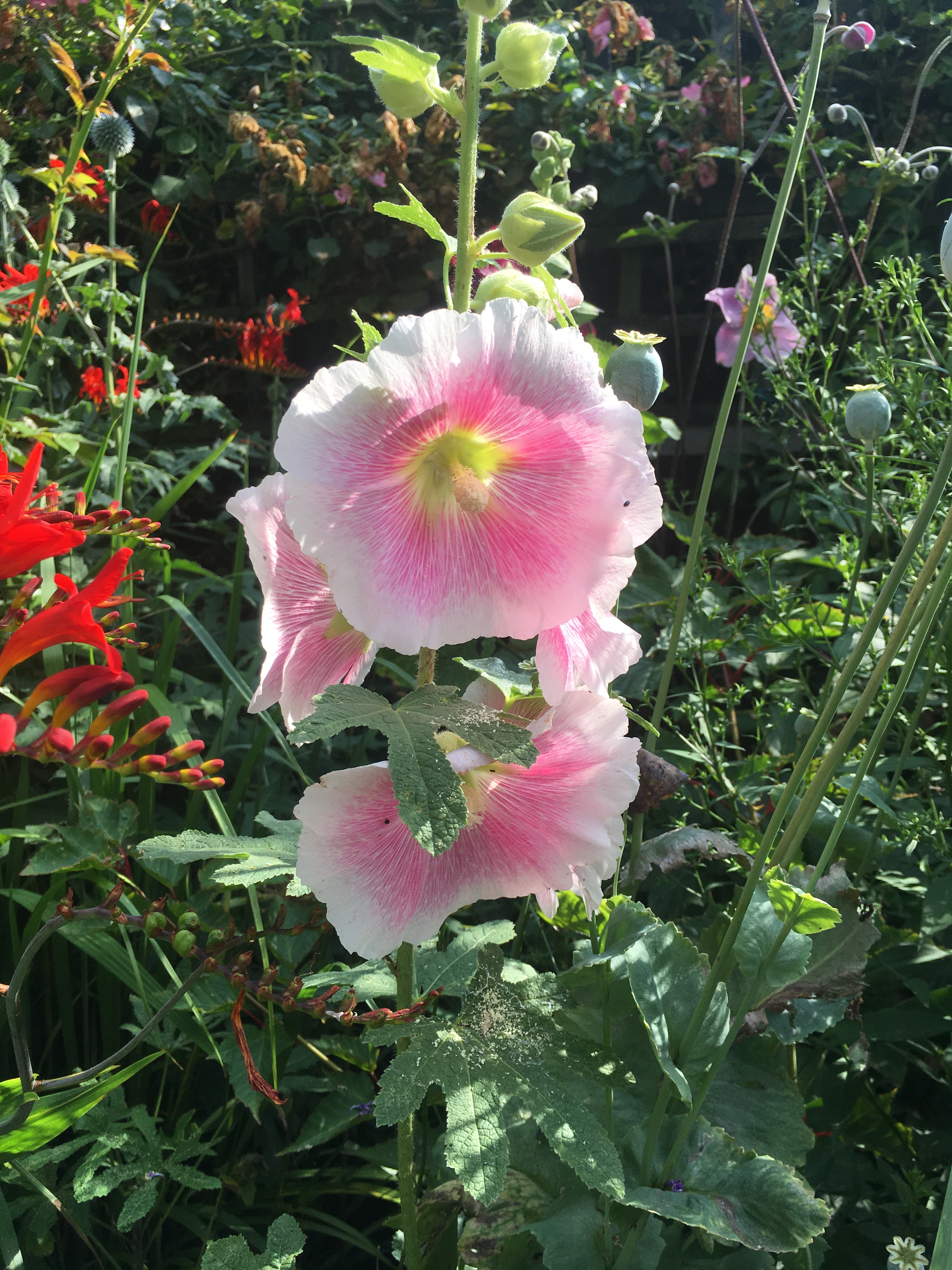
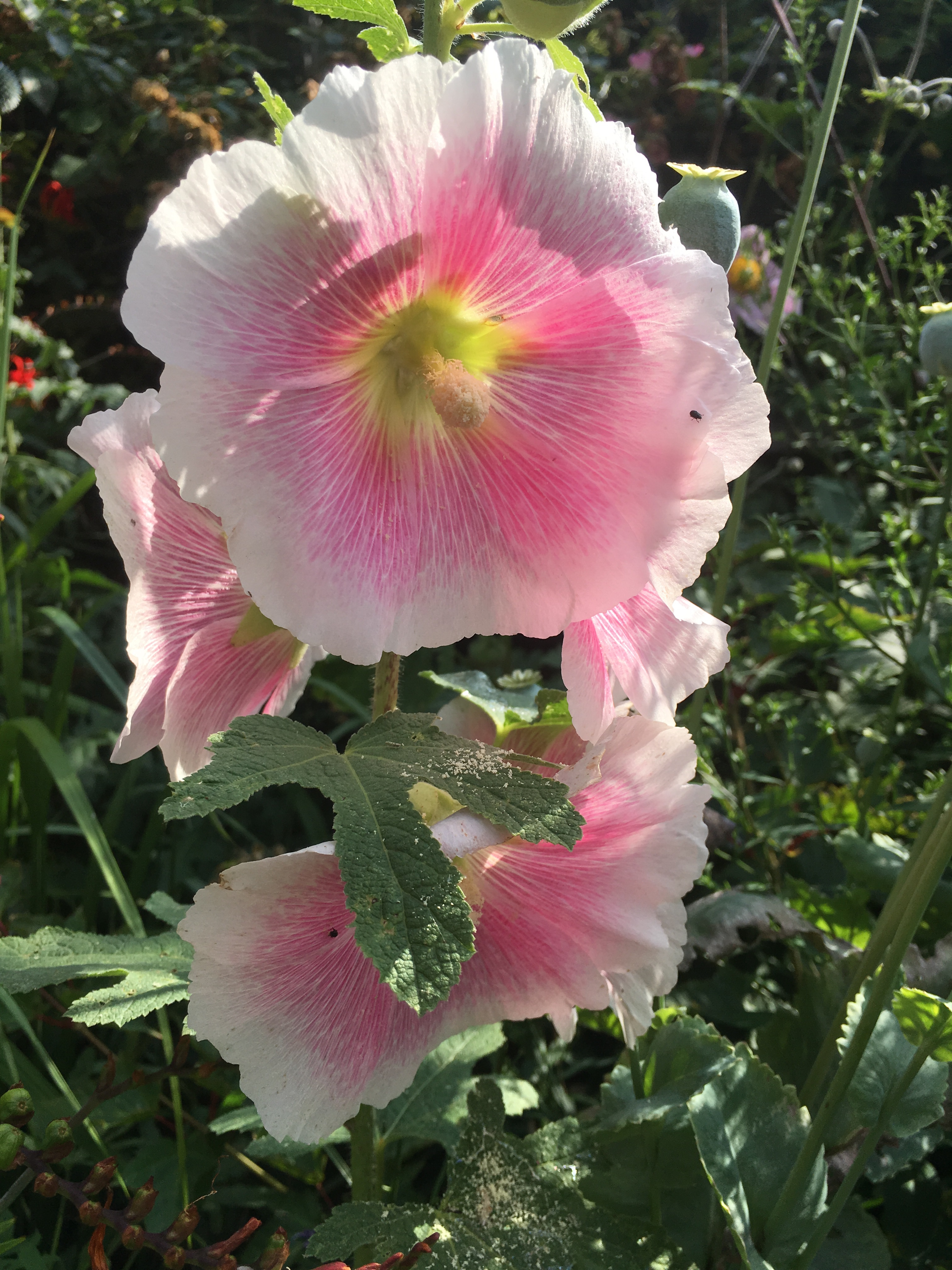
Do you have an August favourite?
Choosing a plant of the month at this time of year is a little like choosing your favourite child. Daucus carota, the wild annual carrot, flowering in the blue border mainly from self sown plants is my choice. I grew it two years ago from seed, there was none in the garden last year, now this year…
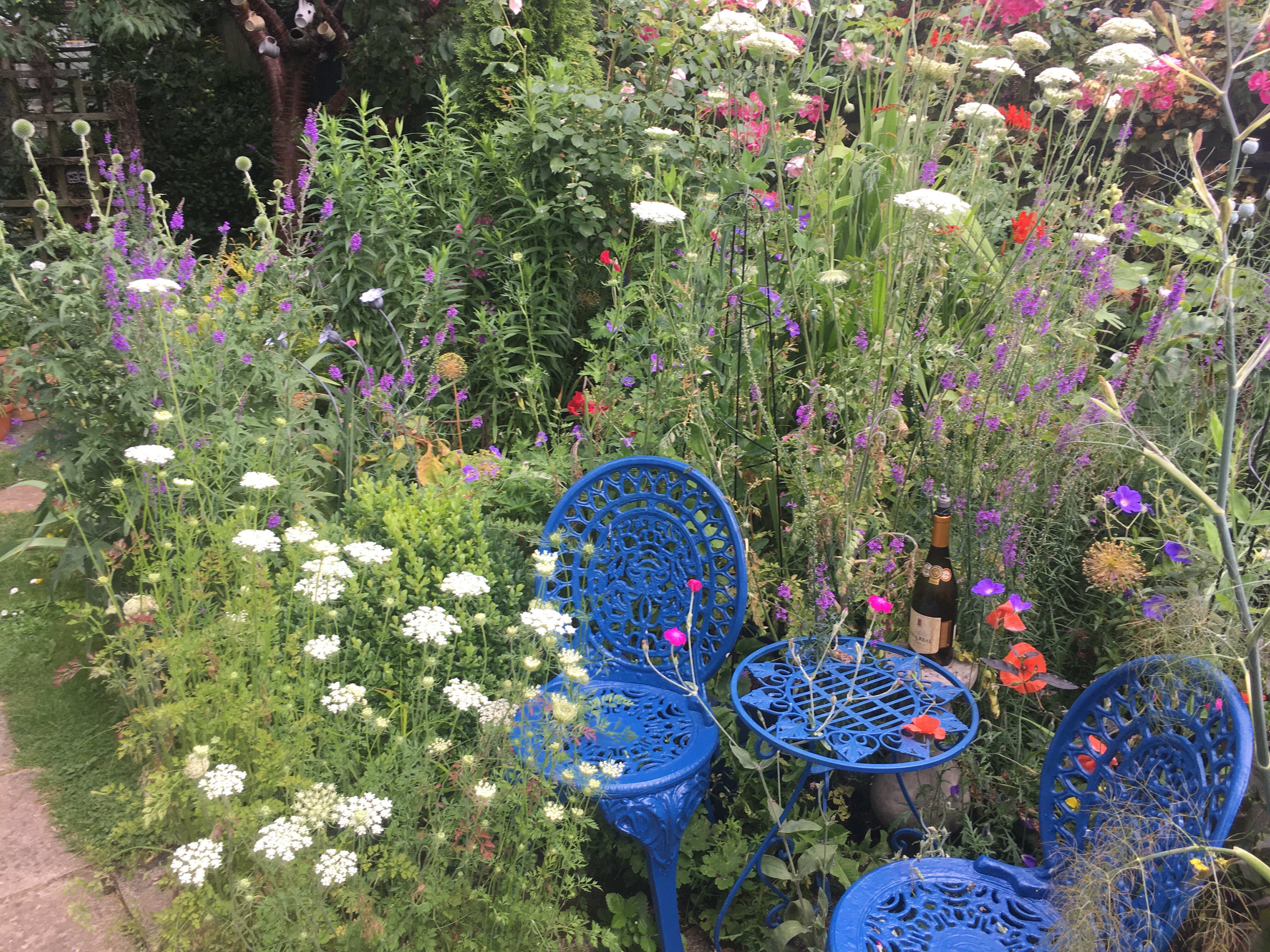
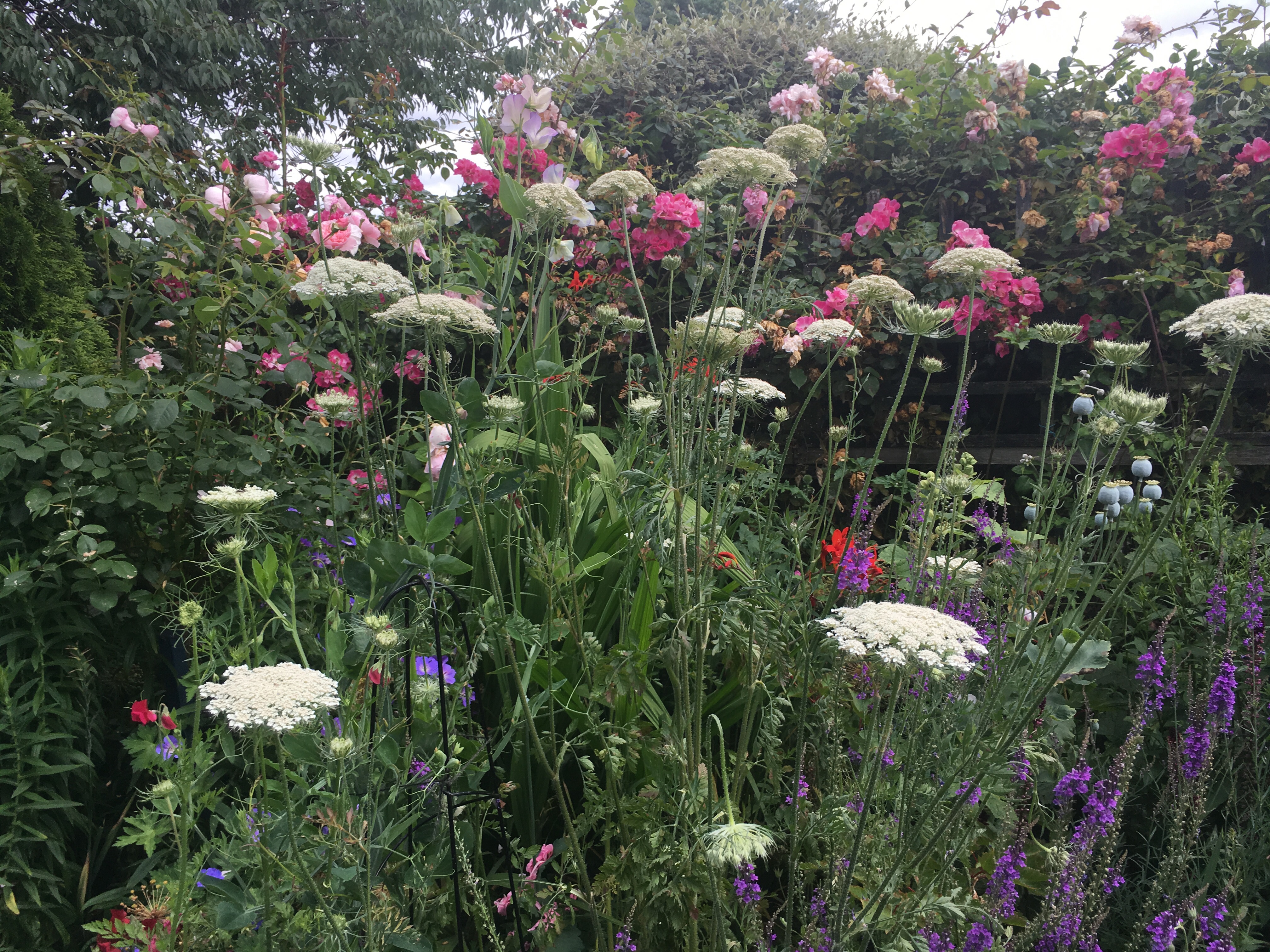
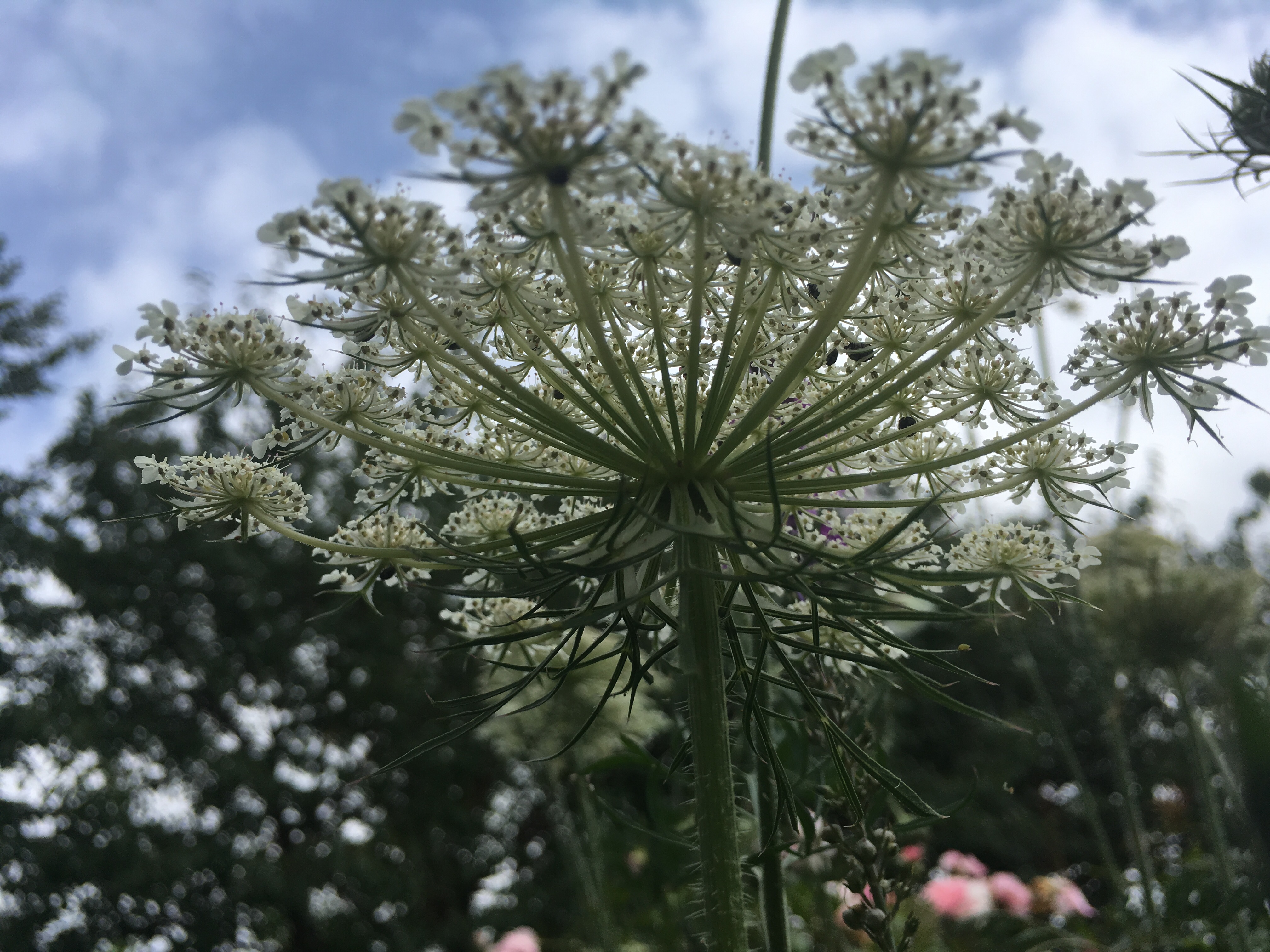
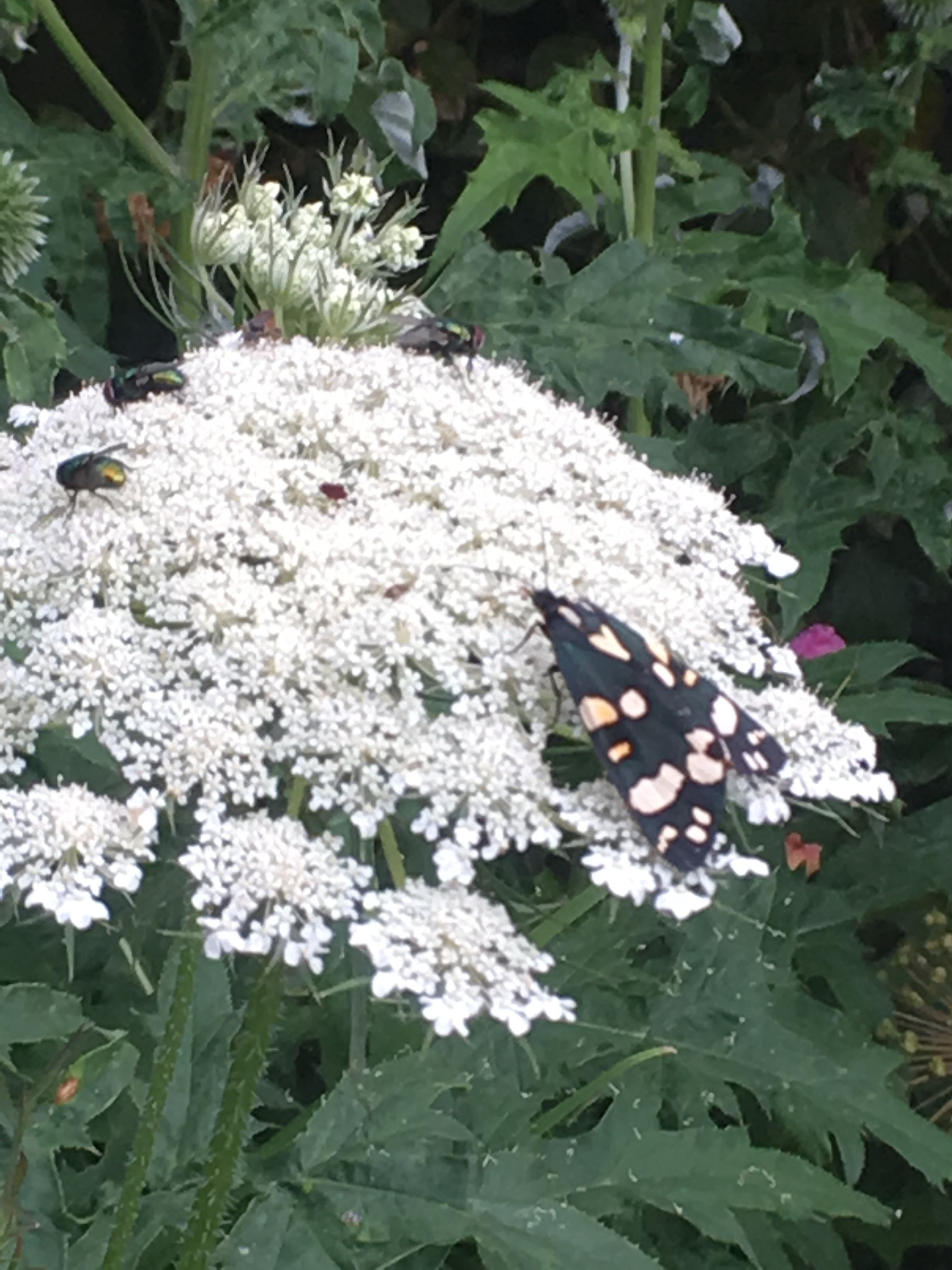
A simple drought tolerant plant, easy and cheap to grow, used by herbalists, loved by the pollinators and ideal for wildlife friendly gardening.
Do you currently have a favourite flower?

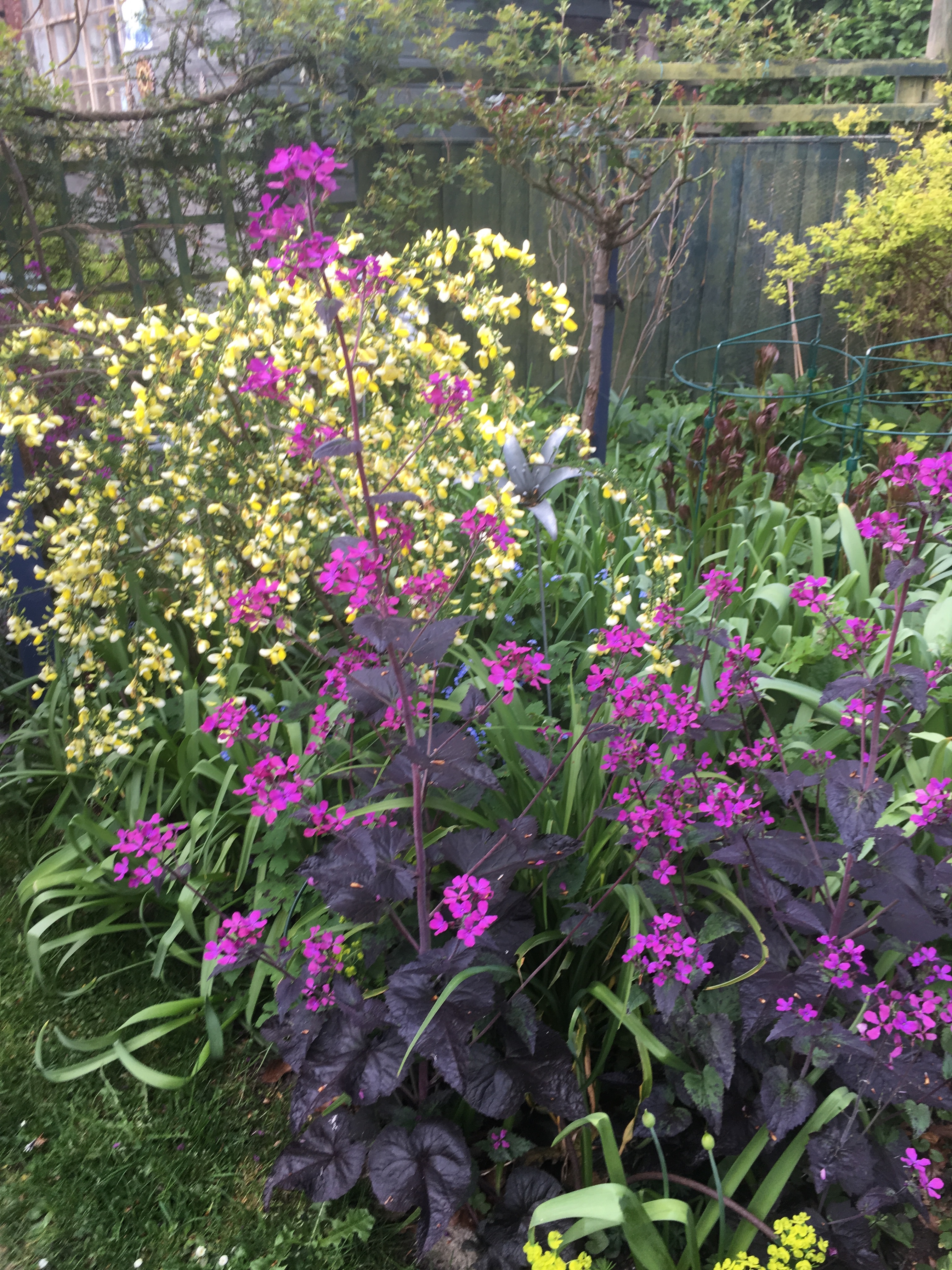
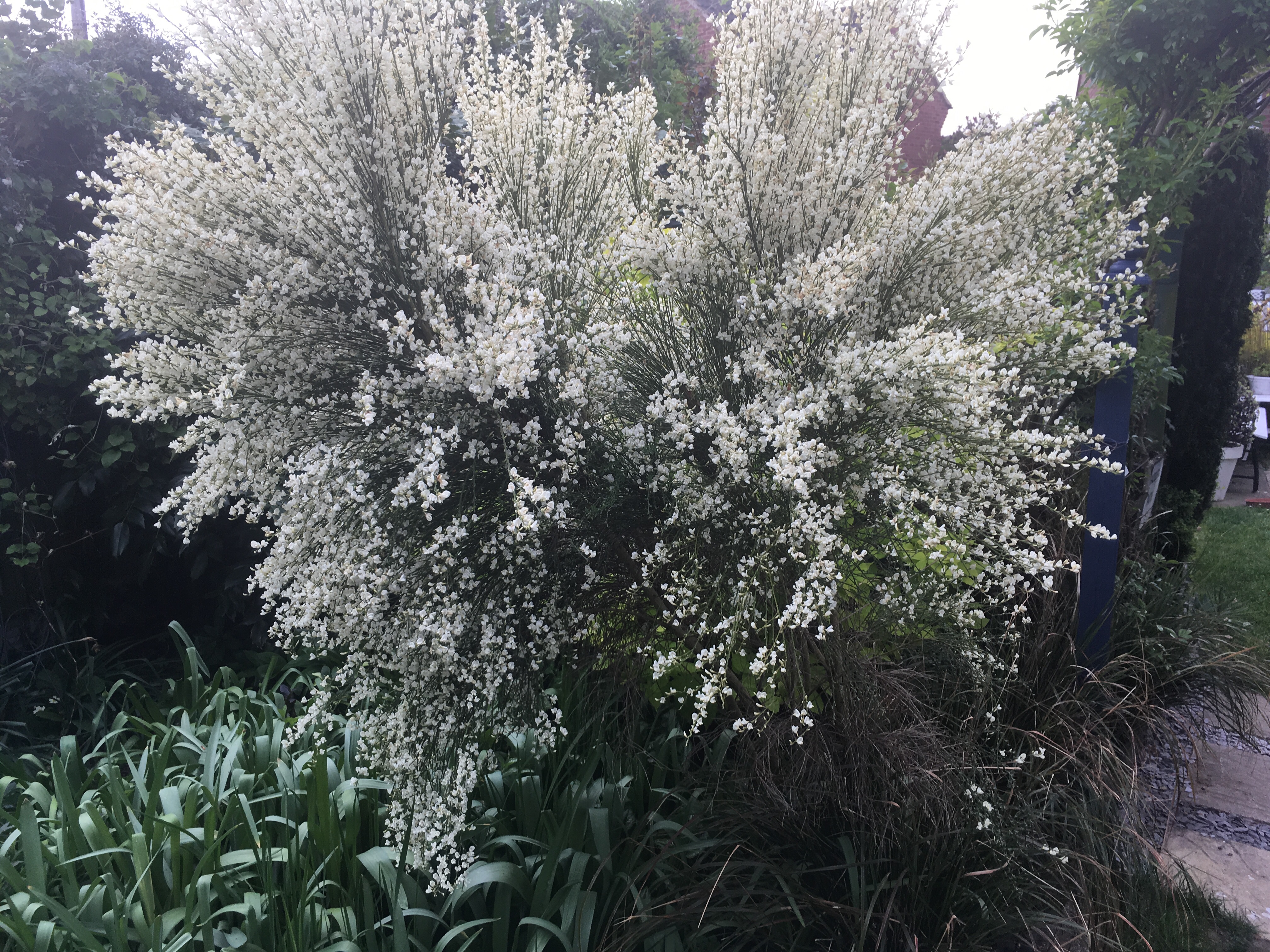

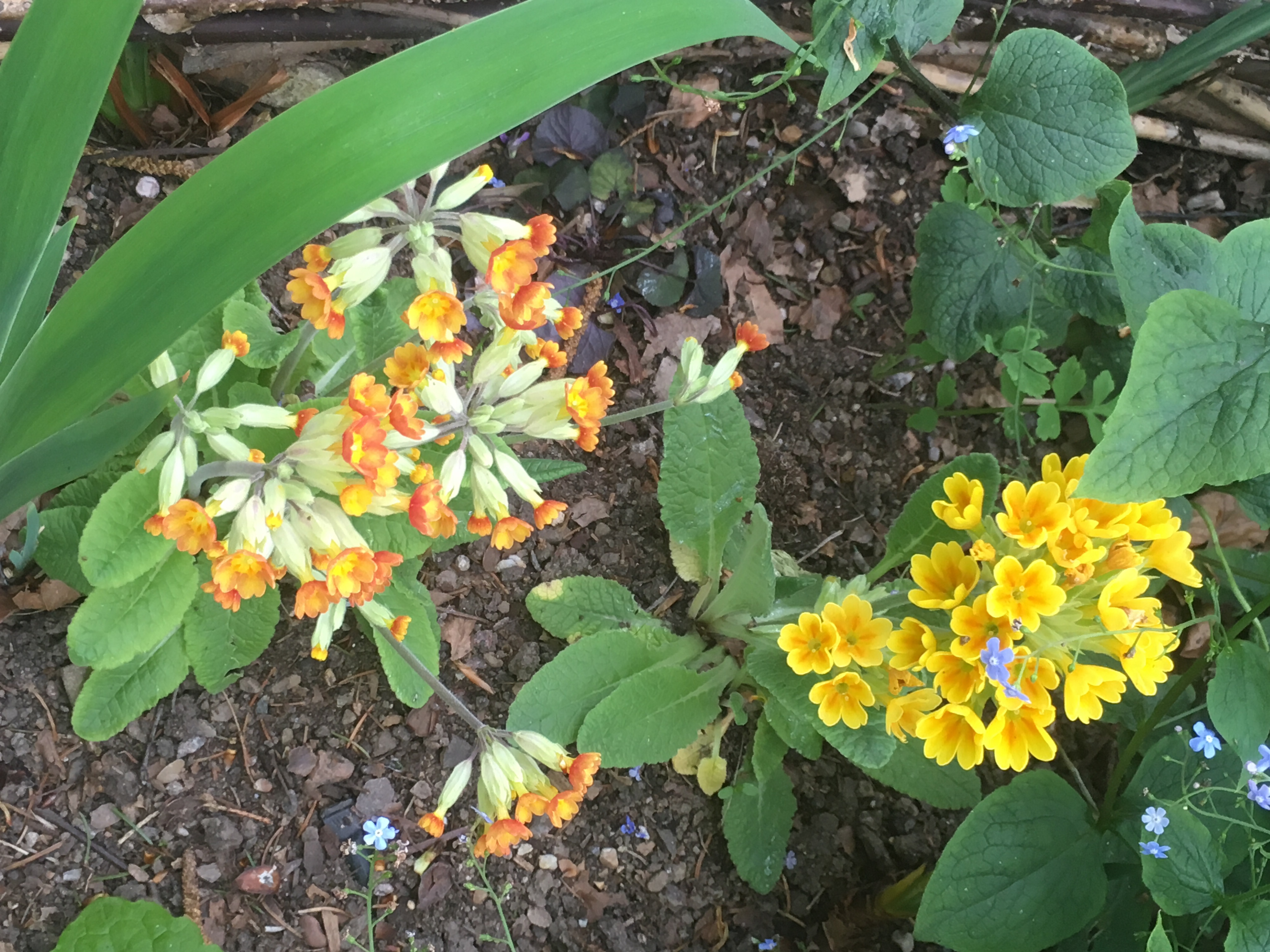


You can see more April Top Ten by visiting The Blooming Garden
Do you have a favourite or a top ten of your own?
Vinca have a bad reputation with gardeners as being very invasive. This is more true of ‘major’, the smaller ‘minor’, known as the Lesser Periwinkle is, I think, an excellent plant for dry, shady areas. It is not often considered for planters, although it can look particularly good in urns or large pots, trailing over the sides like a green waterfall.
Available in colours other than blue, it can be a garden worthy plant.
The double blue, grows in ourgarden@19 in urns either side of the banana bench.
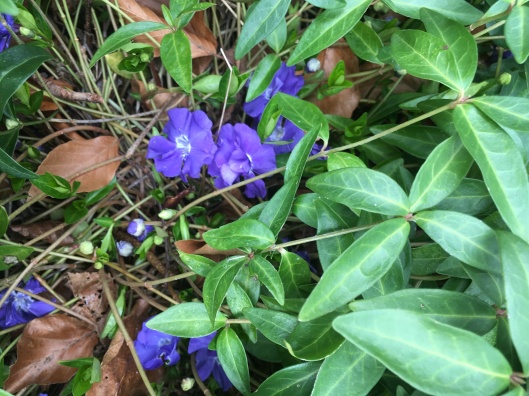
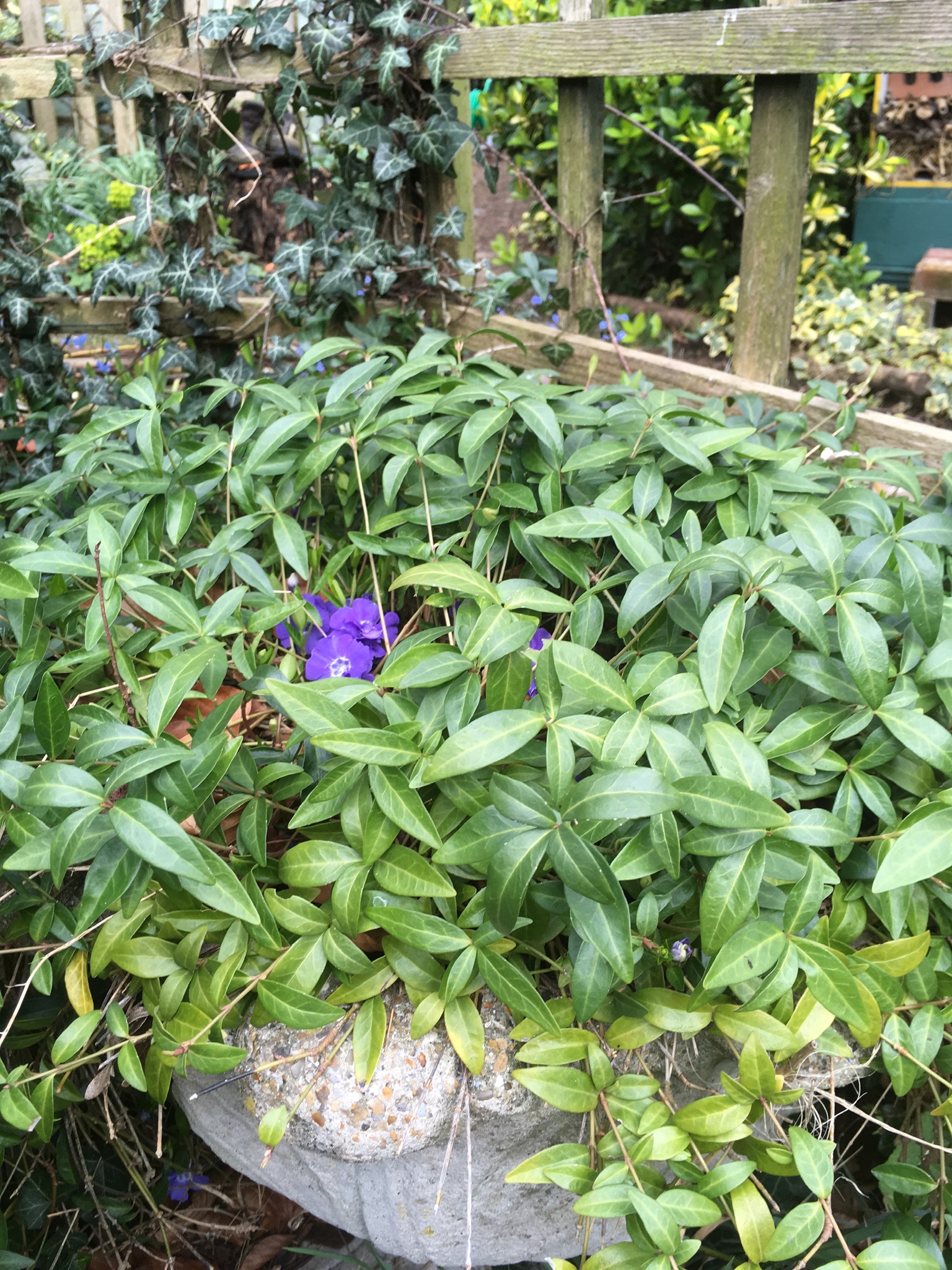
An attractive alternative is the purple form, here in a large terracotta pot.


A white one lives happily in a small Cotswold Stone pot in the White and Green garden.
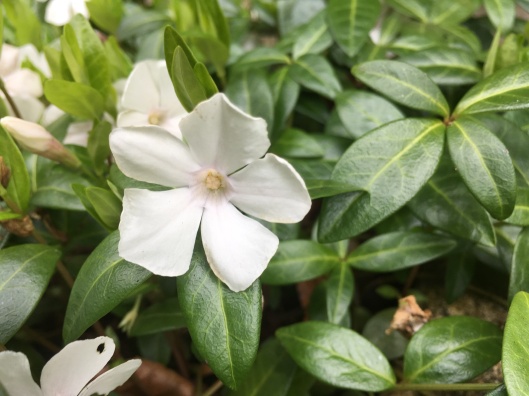
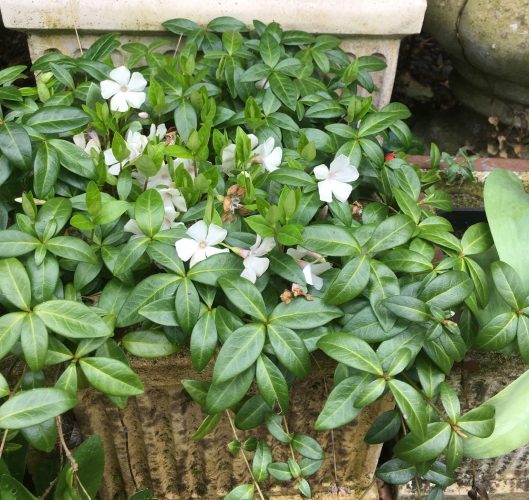
The star of our Vinca family is ‘Jenny Pym’ with its delicate pink and white colours…

…scrambling through our Spring Bed…
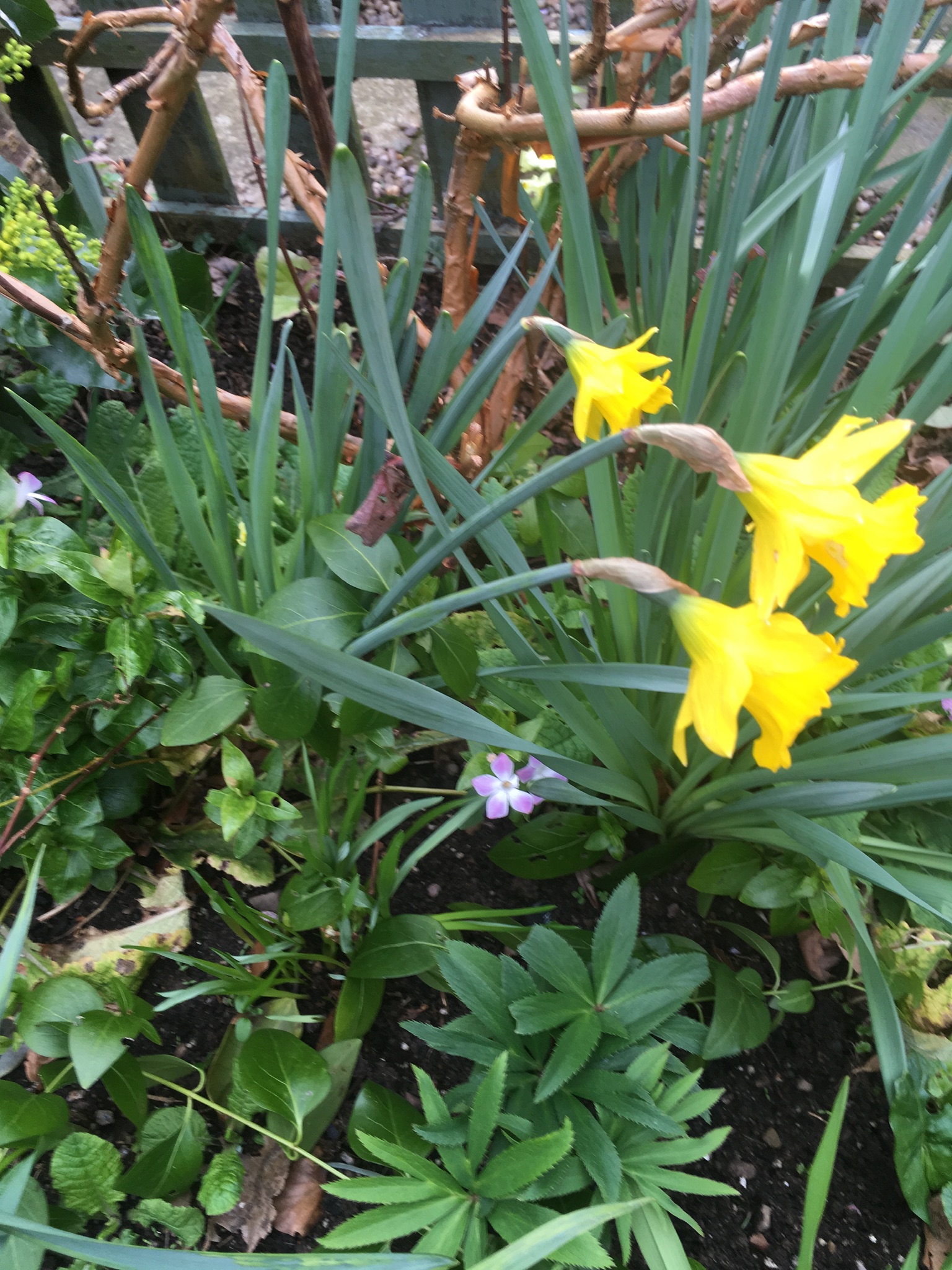
…does pink and yellow go together?
The plant family, Ranunculus, includes buttercups and lesser celandine, plants that most gardeners would not welcome into their garden. However with these looks and the name of ‘Brazen Hussy’, I have made an exception.
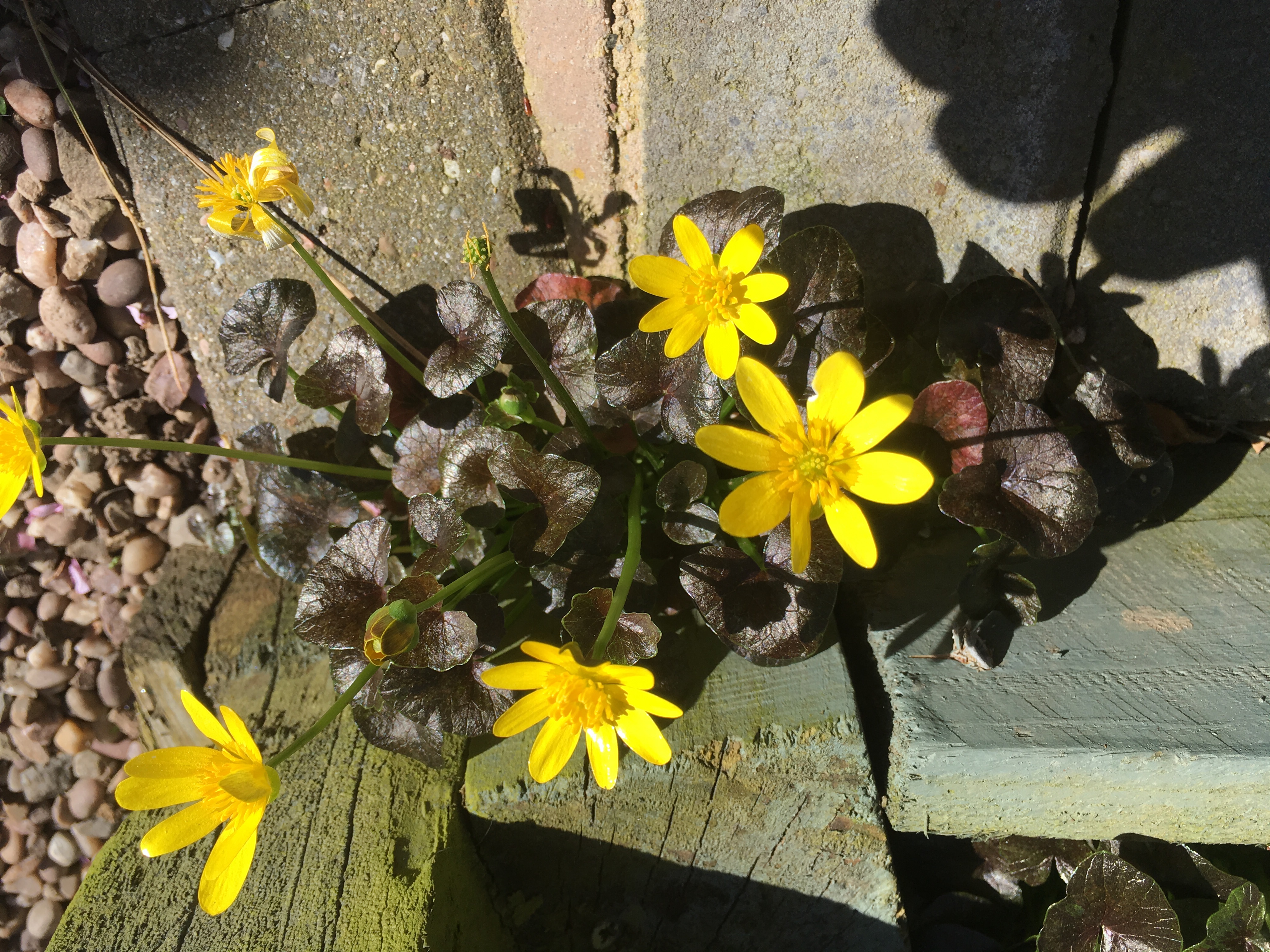
It was discovered and named by Christopher Lloyd growing in the woods at Great Dixter.
Here, enjoying the sunshine, it has brazenly self seeded into some cracks in the path. What is being ‘Brazen’ in your garden?
A Christmas gift of Hippeastrum first flowered with six blooms, now on its second flourish with five blooms.
Plants can provide not only pleasure, also optimism with a feeling of wellbeing, very welcome during the dark days of January.
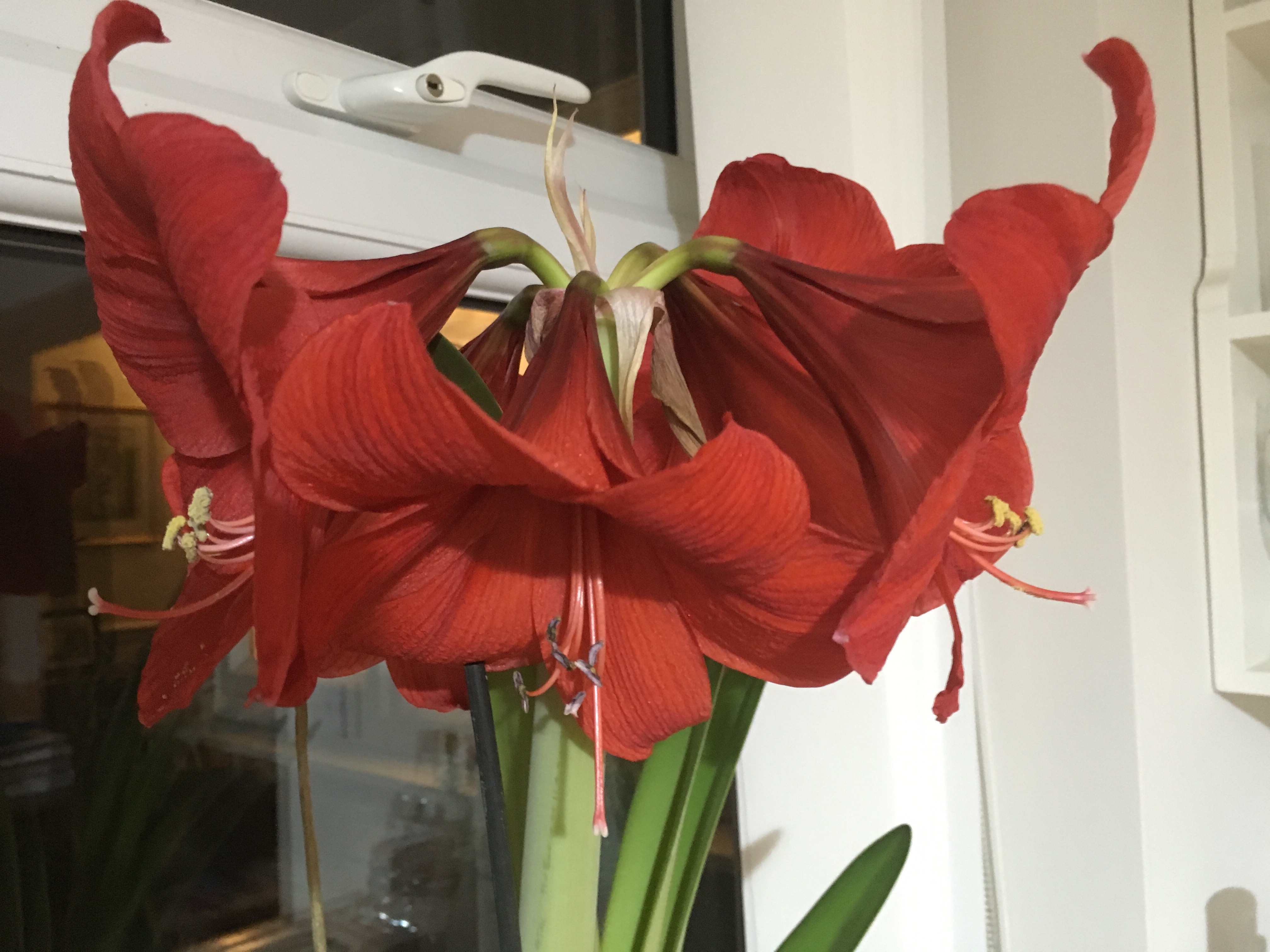
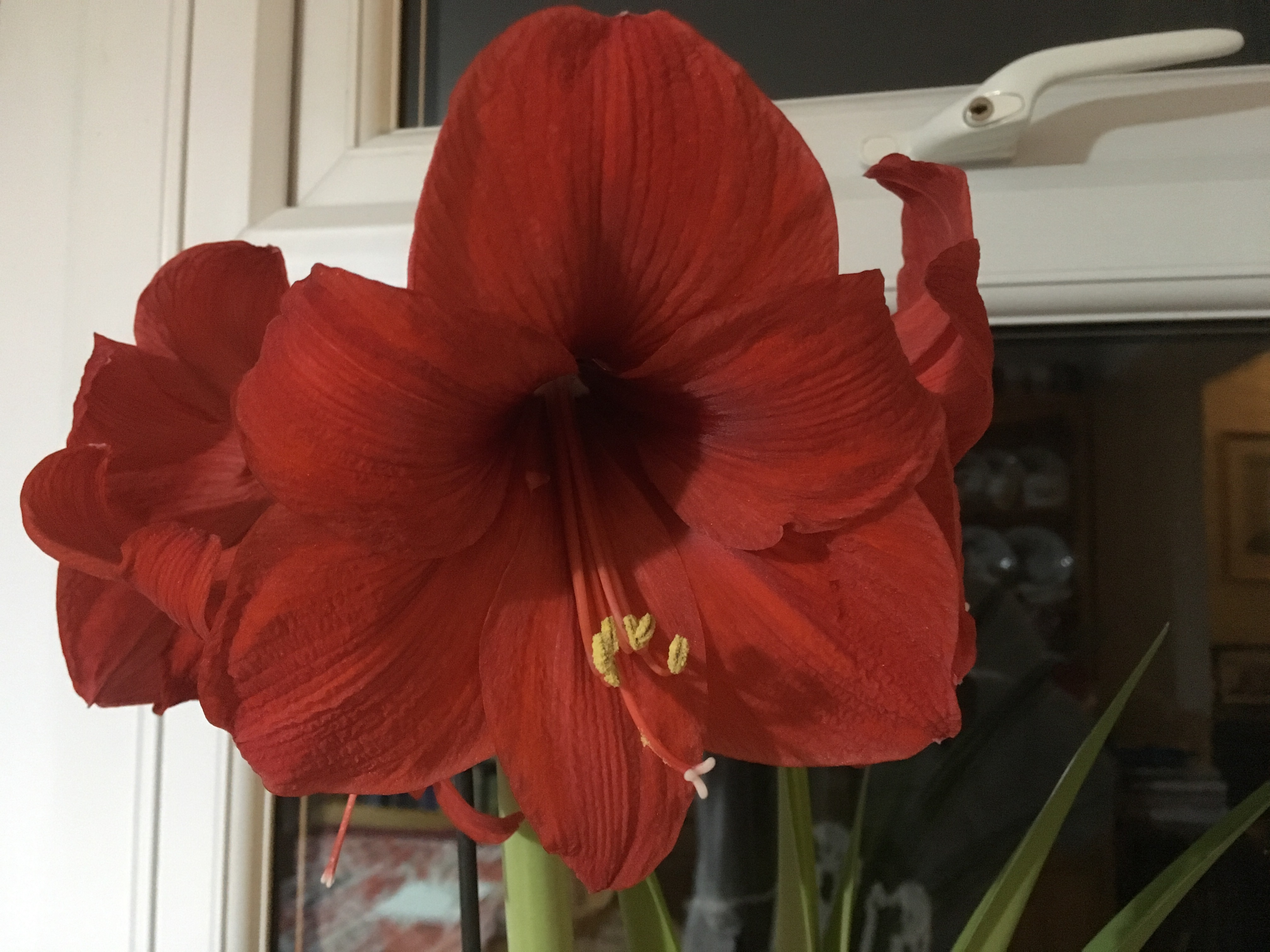
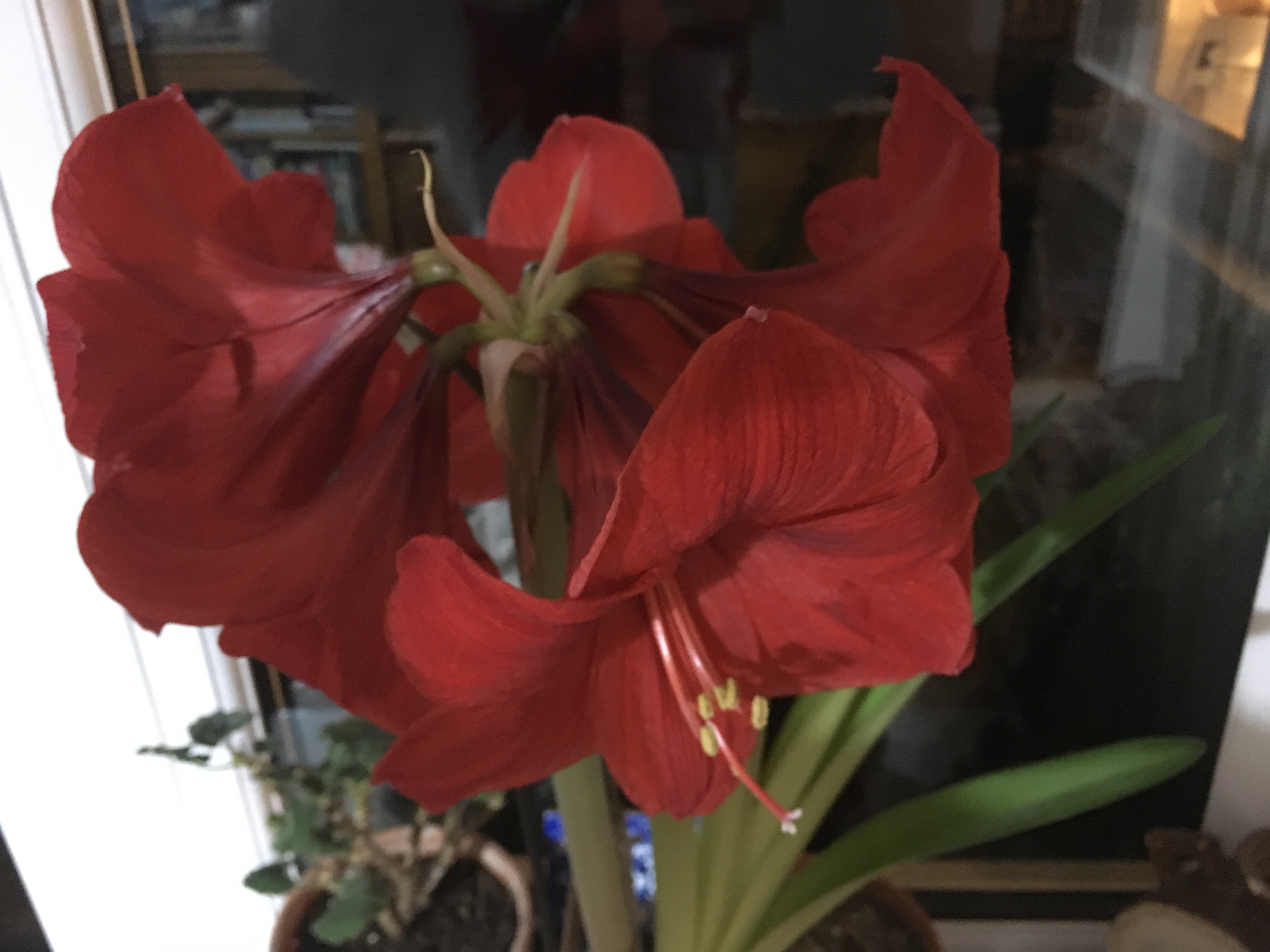
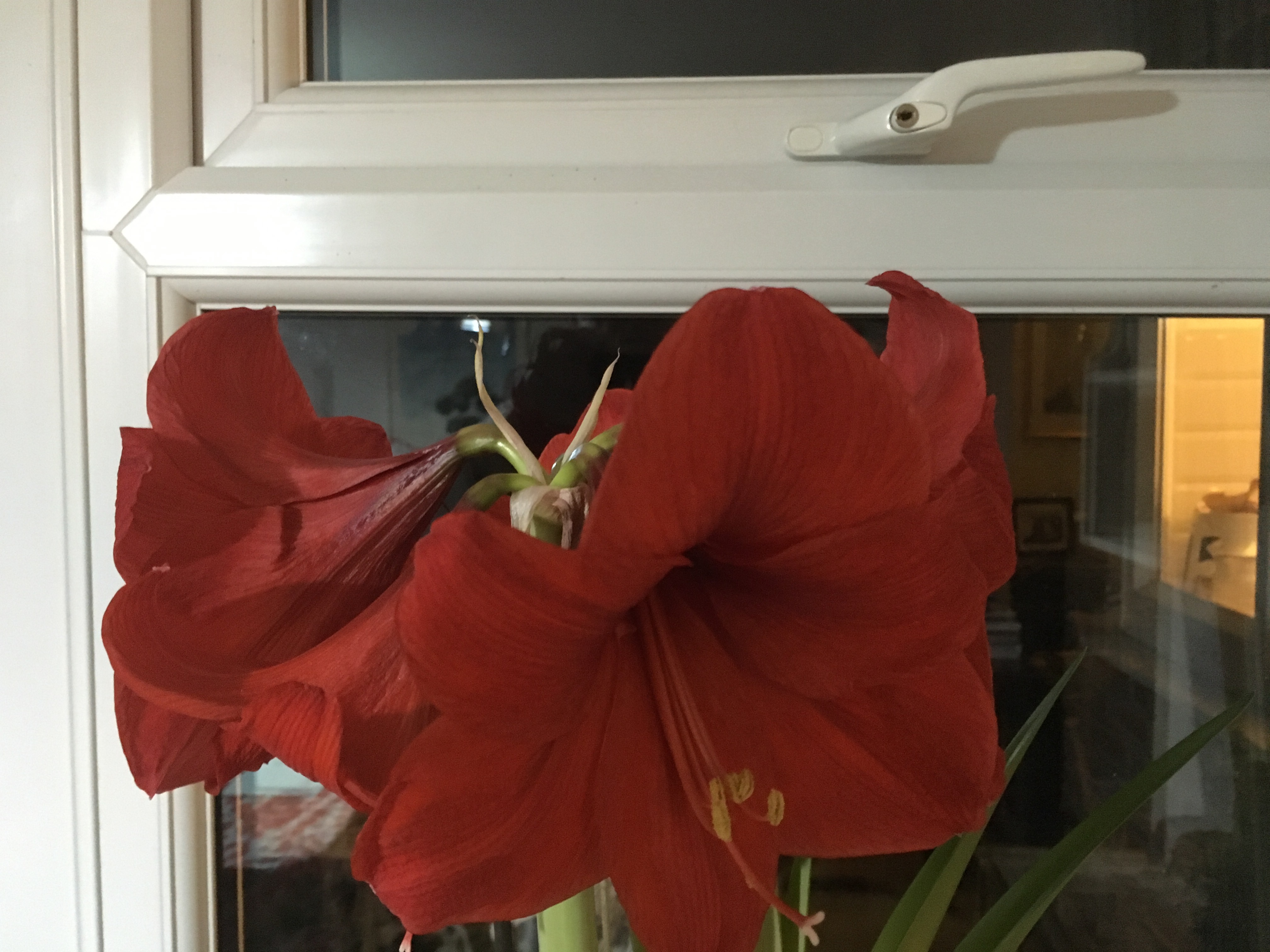 What is giving you joy in your gardening world?
What is giving you joy in your gardening world?
Now that its raining I thought I would post pictures of the ‘Hot’ plants in Our Garden@19.
Which plants have been matching the summer weather in your garden?
Those of you living and gardening in the UK do not need me to tell you that we are ‘enjoying’ one of the hottest June/July periods for some time, with day time temperatures reaching 30c. Whilst for many of you reading this in other parts of the world this may not be unusual, but here it is , testing both the gardener and their plants.
These plants featured are the drought busters in Our Garden@19. Interestingly I originally grew them all from seed, except for the allium, also some of them have since self seeded around the garden.
The wild chicory towers above almost every thing in the garden, here in the herb bed, growing through the standard gooseberry. It is a beautiful shade of light blue.
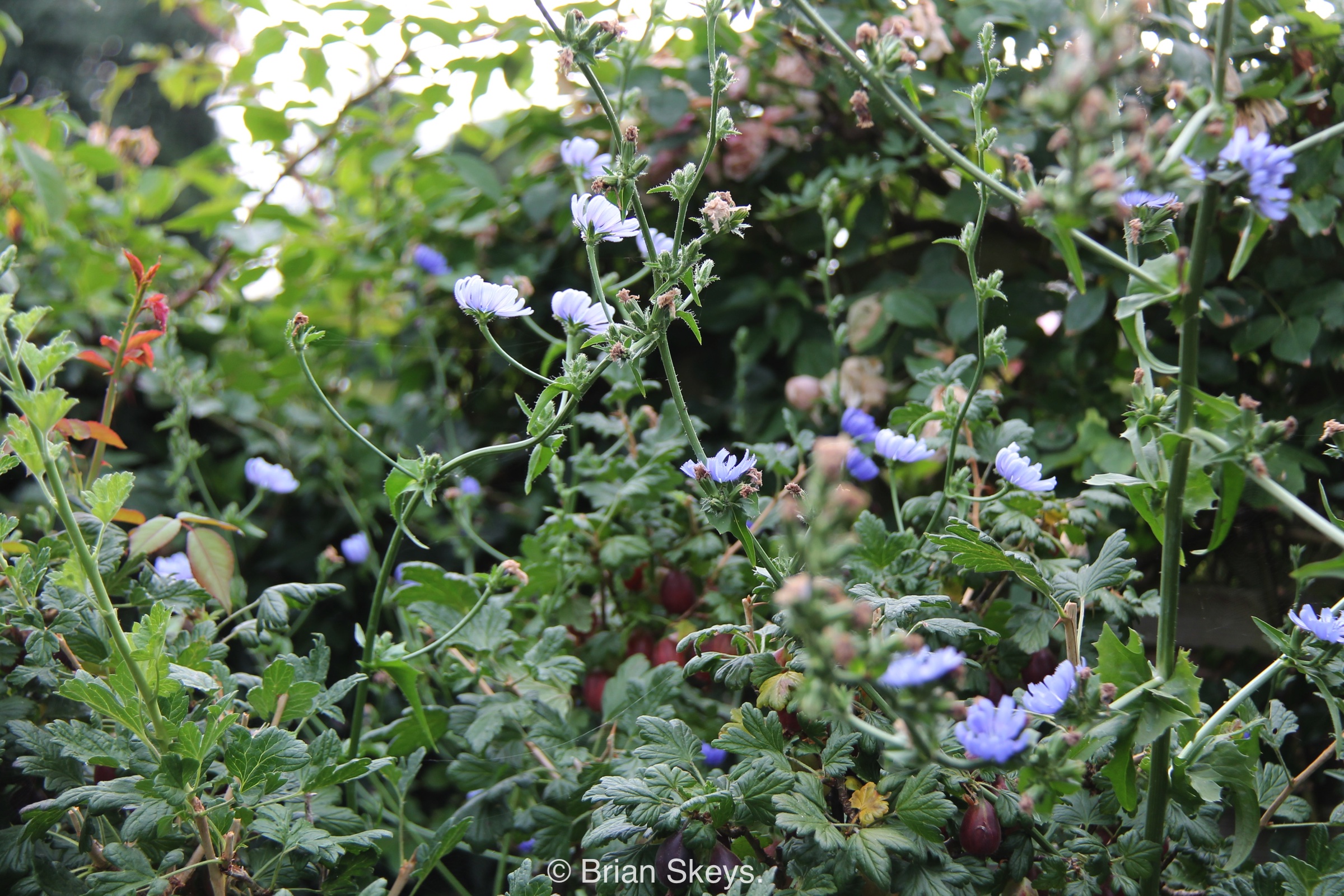

Also towering above everything else are the teasels, this is the first year I have grown them. Listening to a talk by Fergus Garrett inspired me to plant them and they allow them to self seed around Great Dixter. They are good for wild life especially the pollinators and the seeds are said to be loved by Goldfinches in winter. I have only planted two in the garden, they can dominate if left to their own devices.
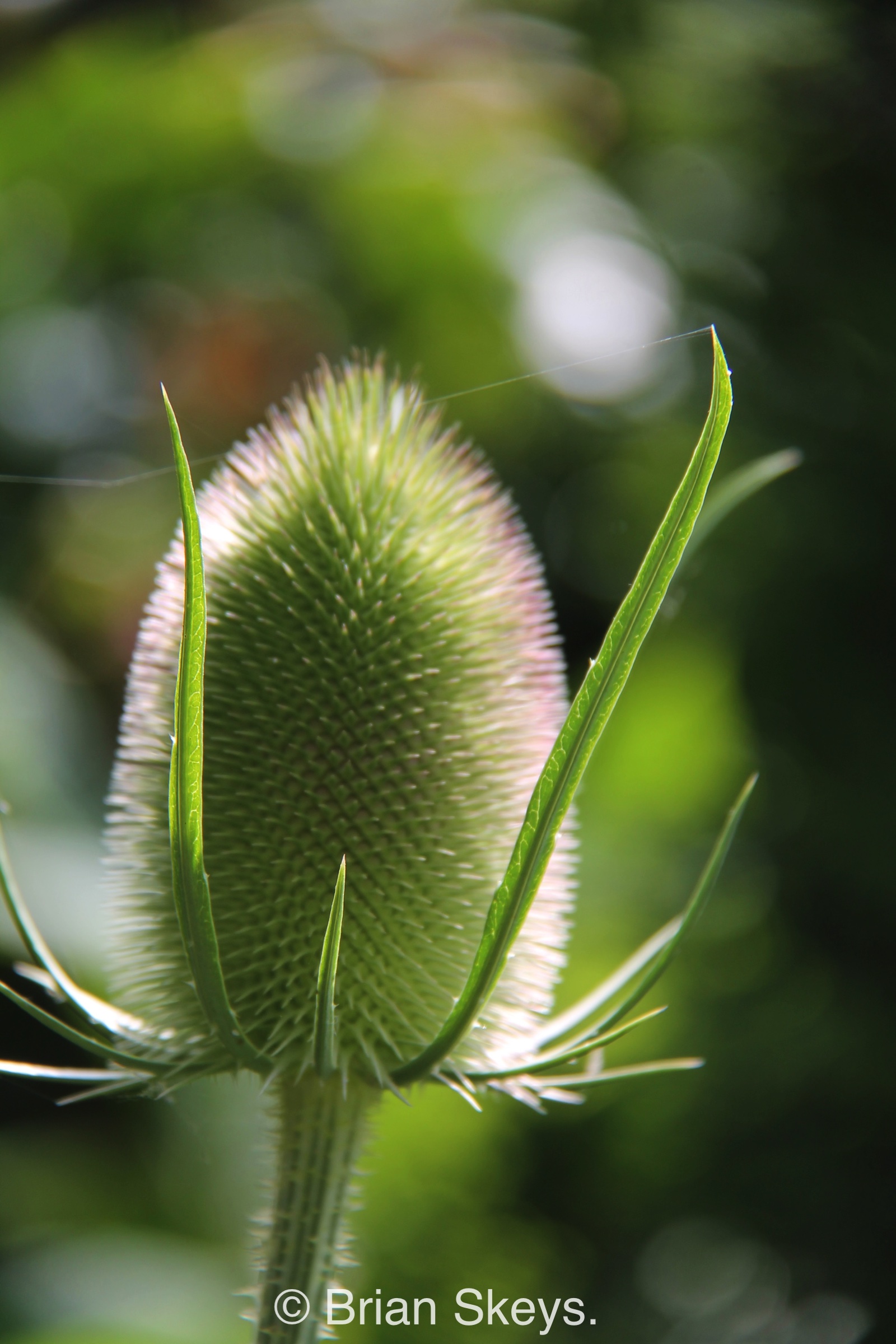
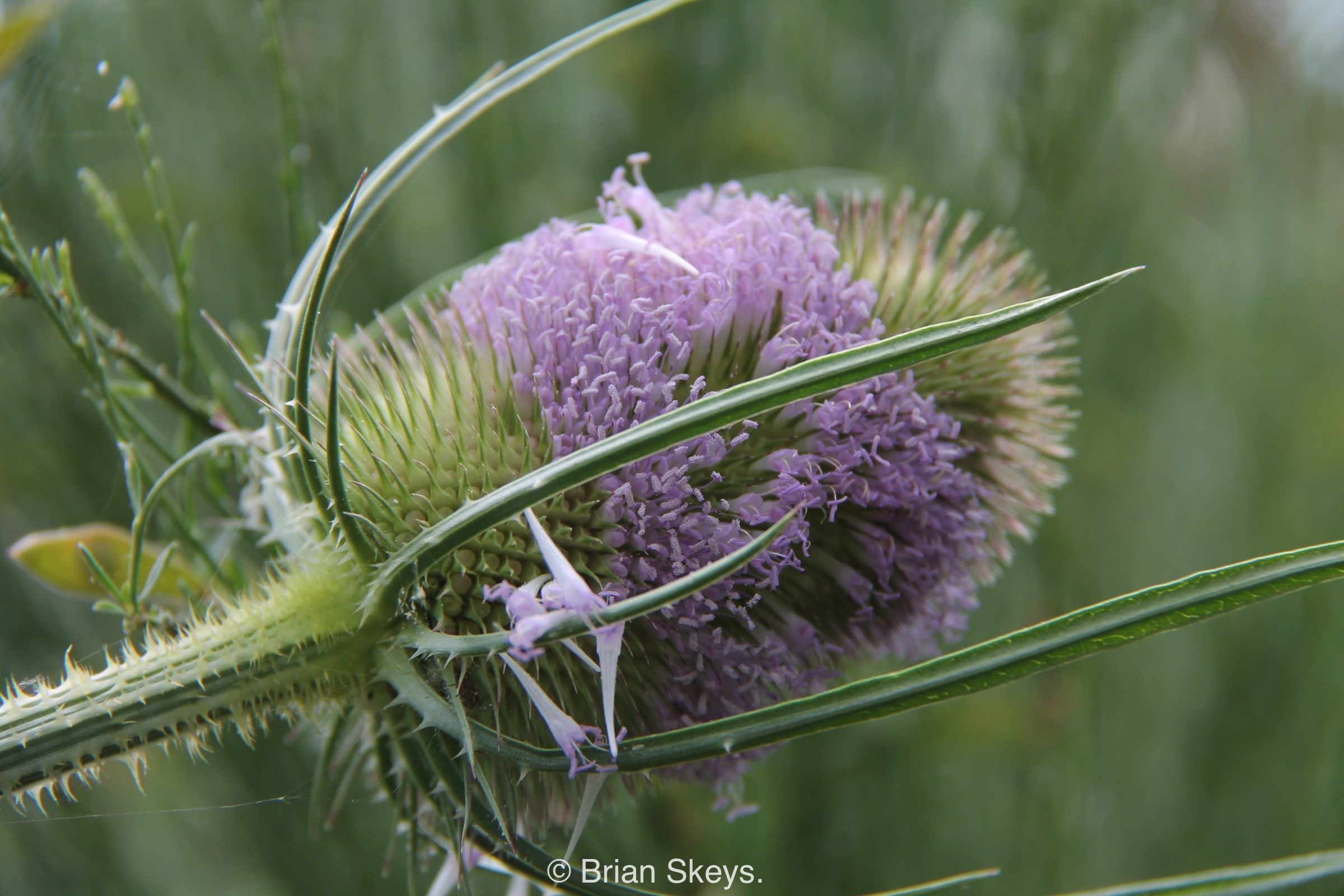
Common Teasel.
The ‘thistle-like’ plants always do well in dry conditions, here Echinops ritro, is yet to bloom…
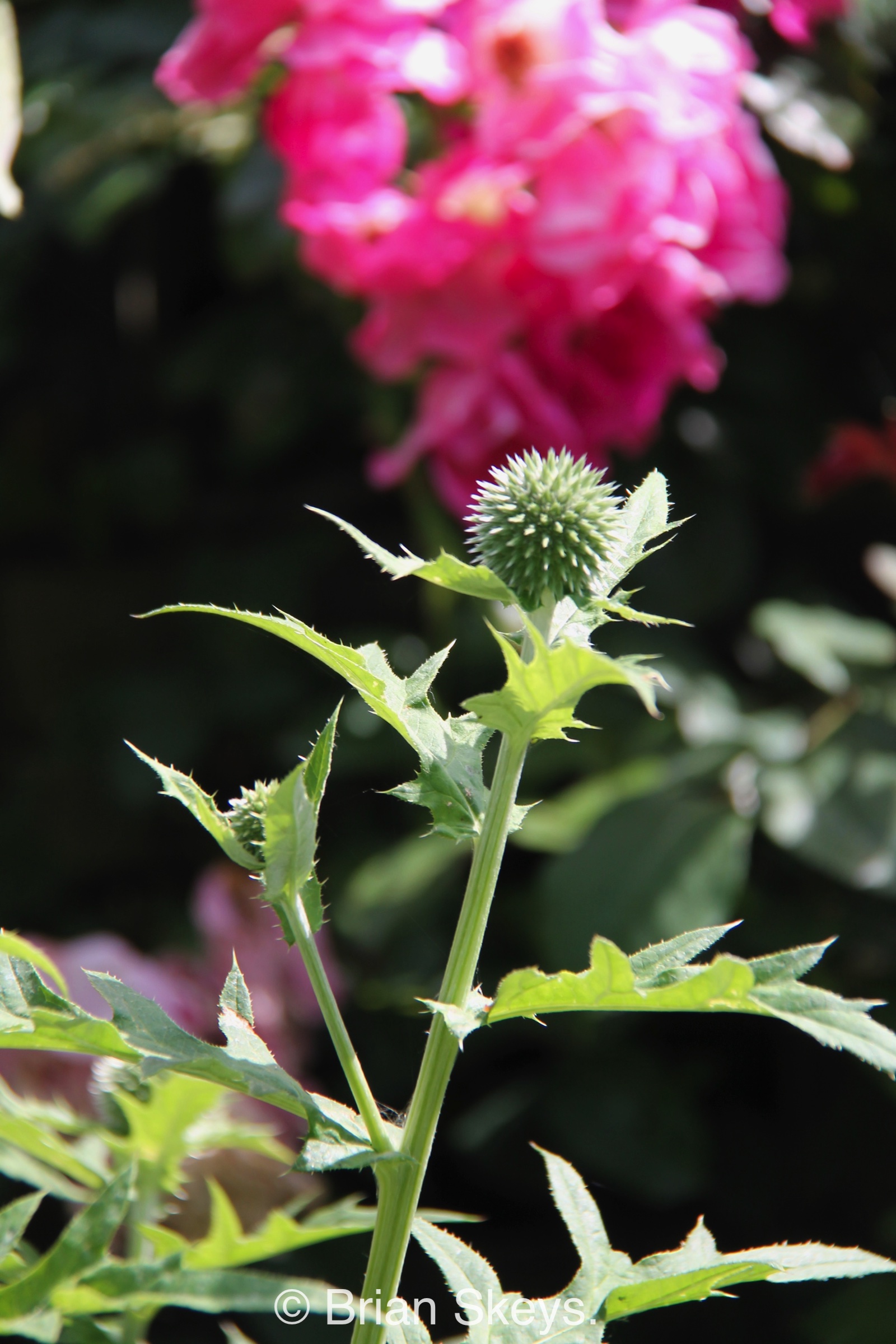
…also ‘Miss Willmotts Ghost’, I do like this spiky plant. It is I think, a little like the lady it was named after. Especially if you worked for her.


The wild carrot has seeded itself around the garden including here between two paving slabs, thus preventing anyone from sitting on this chair!
Similarly the Lychnis of both colours have seeded in the gravel…
…and the Linaria seeds around everywhere!
In a sunny spot by the banana bench and in the alpine boxes on the south side of the house, is Dianthus carthusianorum, with its clusters of diminutive deep pink flowers.
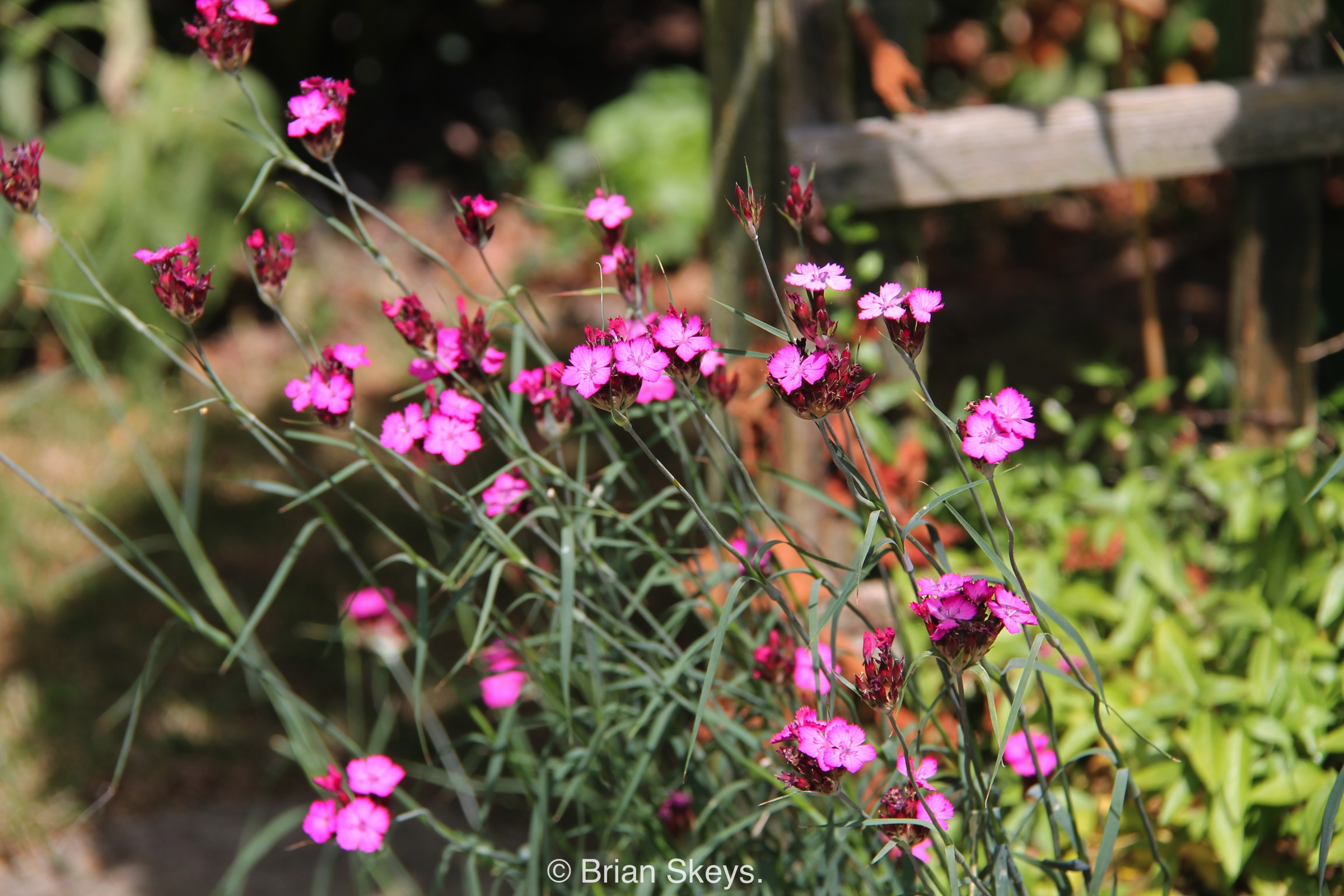
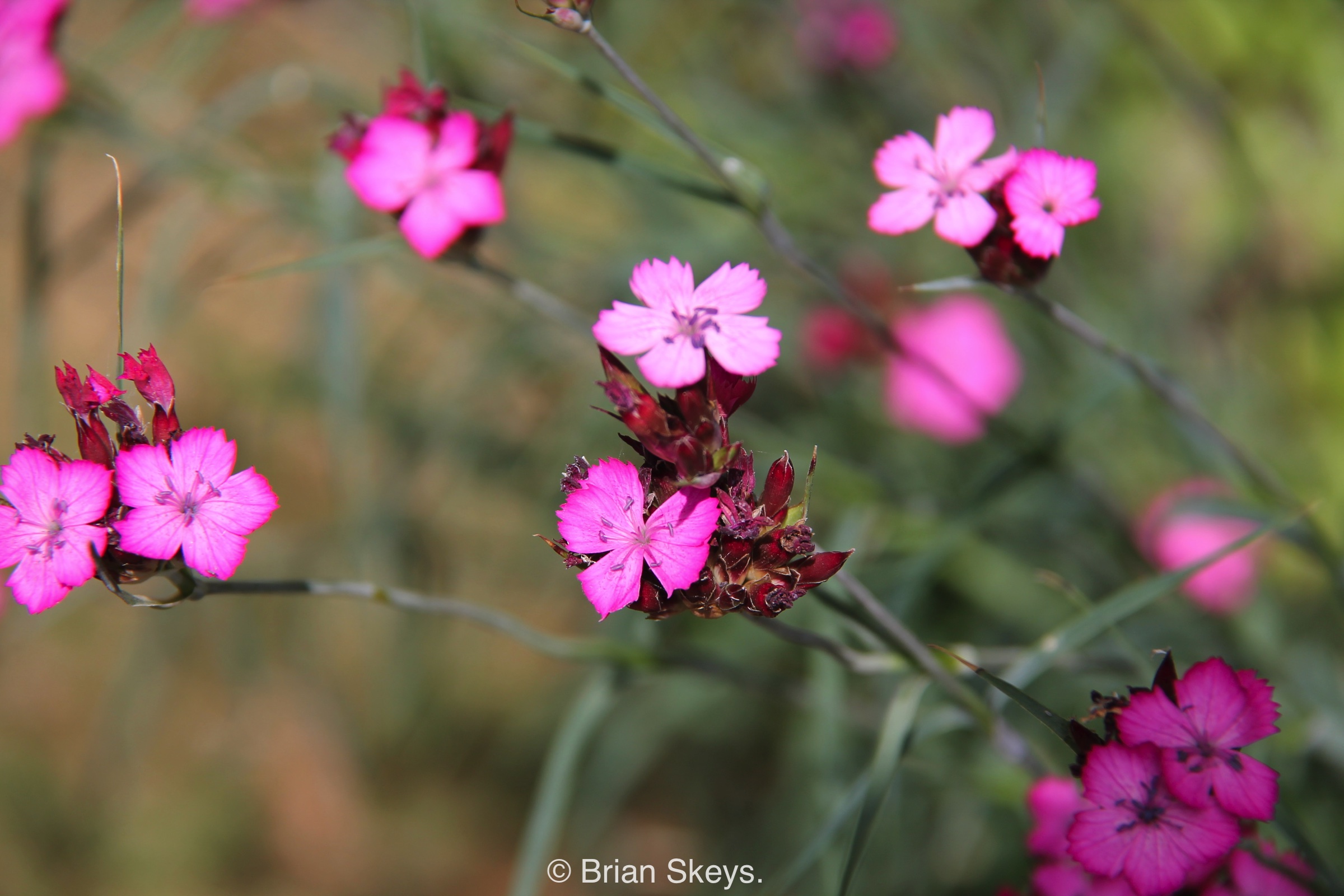
I am ending with this single Allium ‘Red Mohican’. I wish I had more!
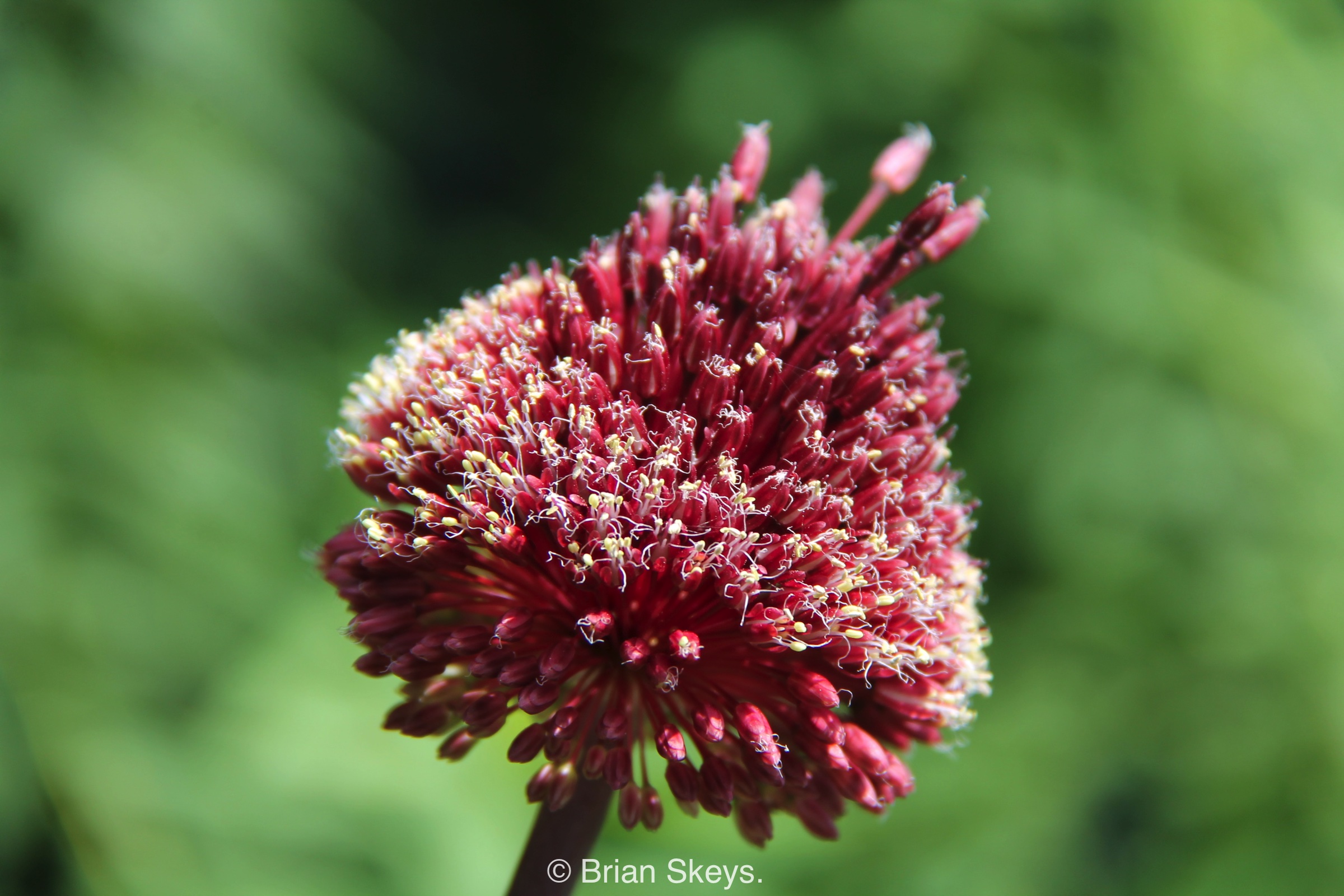
An interesting fact about these plants is that several of them were for sale during our open weekend and very few of them sold, because, I guess, they were not in flower at that time.
I wonder if they would sell now?
Do you have any ‘Drought Busters’ in your garden?
The National Botanic Garden of Wales is one of our favourite places to visit in Wales.
“It is a charity dedicated to the research and conservation of biodiversity, to sustainability, lifelong learning and the enjoyment of the visitor.”

The National Botanic Garden of Wales was opened to the public on the 24th May 2000. We first visited in 2005.
The double walled vegetable garden was not open then, you could however view it from a platform. It has now been rebuilt from a ruin.

Our next visit was in 2013.

The 220m long avenue which divides the Garden is known as the Broad-walk.
One of the longest herbaceous borders in Britain, from spring to winter, this Garden provides a colourful welcome.
It begins at the Gatehouse, passing this water sculpture called Scaladaqua Tonda.

I particularly love this rill, it runs the full length of the Broad Walk, vanishing into pools along the way, starting at this dragon topped mirror pool.

This feeds water down into The Rill,
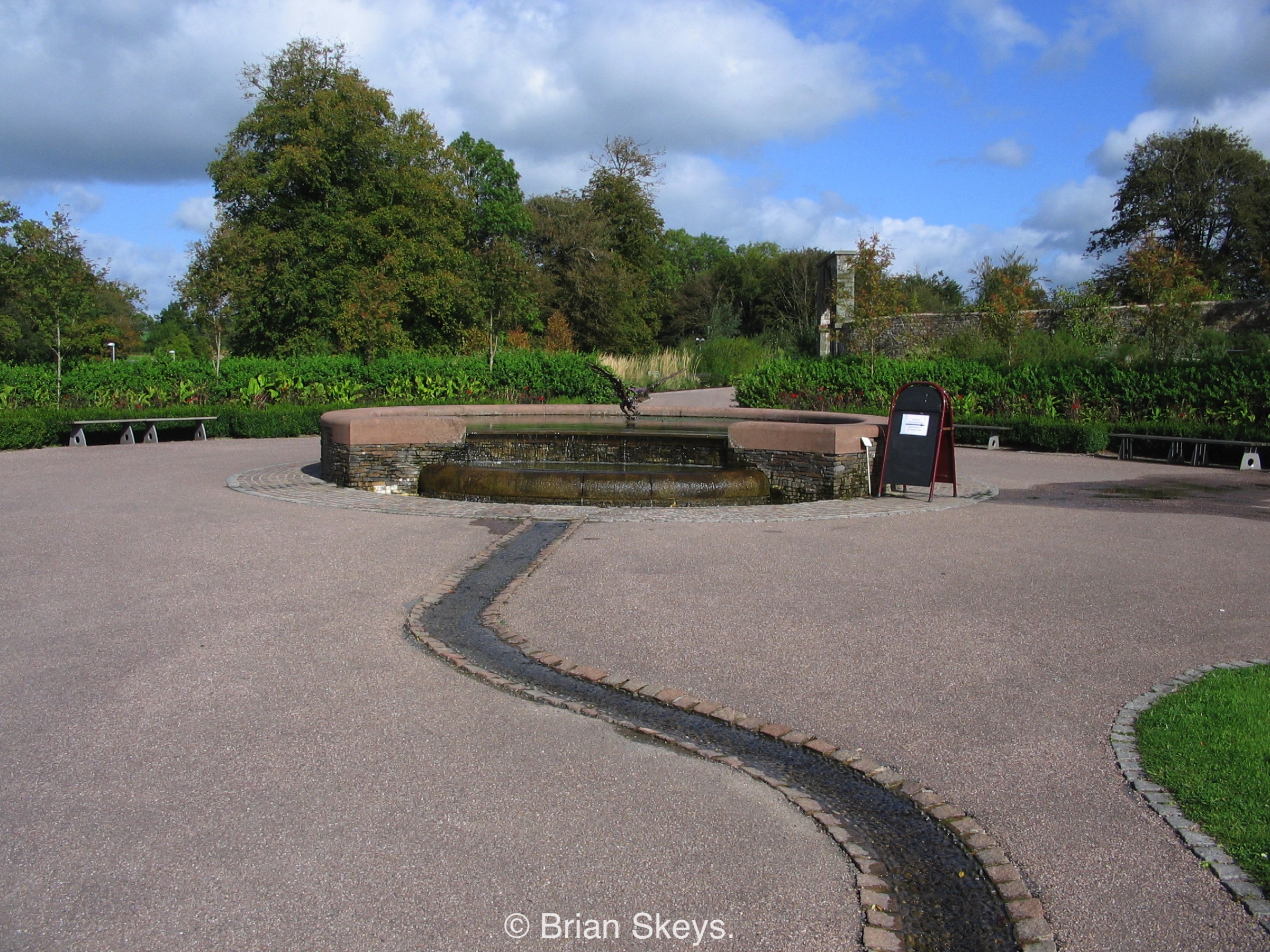
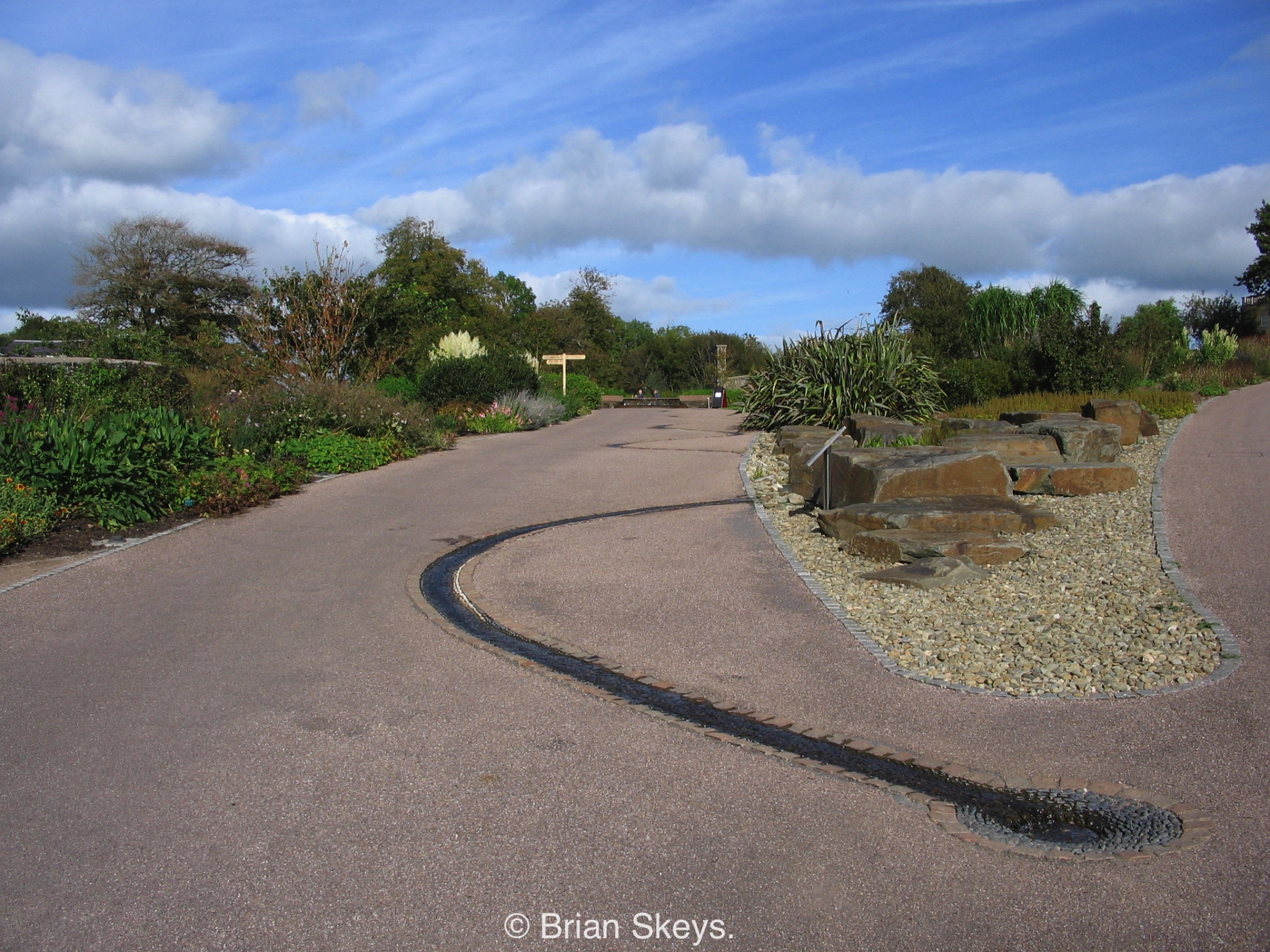
a meandering stream that flows down the Broadwalk with a shape and course that is inspired by Carmarthenshire’s Towy Valley river.
It then disappears into the Circle of Decision, a fountain shaped like the cross section of an ammonite,

Designed by Foster and Partners, is the largest structure of its kind in the world. The structure is (312 ft) long and (180 ft) wide, with a roof containing 785 panes of glass.

The plants are divided into sections from Chile, Western Australia, South Africa, California, the Canary Islands and the Mediterranean.
Designed by professor Fukuhara for the 2001 Chelsea flower show, it won a gold medal and best in show, after which it was recreated here.
“It is named Sui Ou Tei, a reflection of the national flowers of Japan and Wales – the cherry tree and daffodil. It consists of three traditional Japanese gardens – the Stream and Lake Garden, the Gravel Garden and the Tea Garden. Filled with symbolism and guided by Zen philosophy, this is a lovely place to sit and contemplate.”

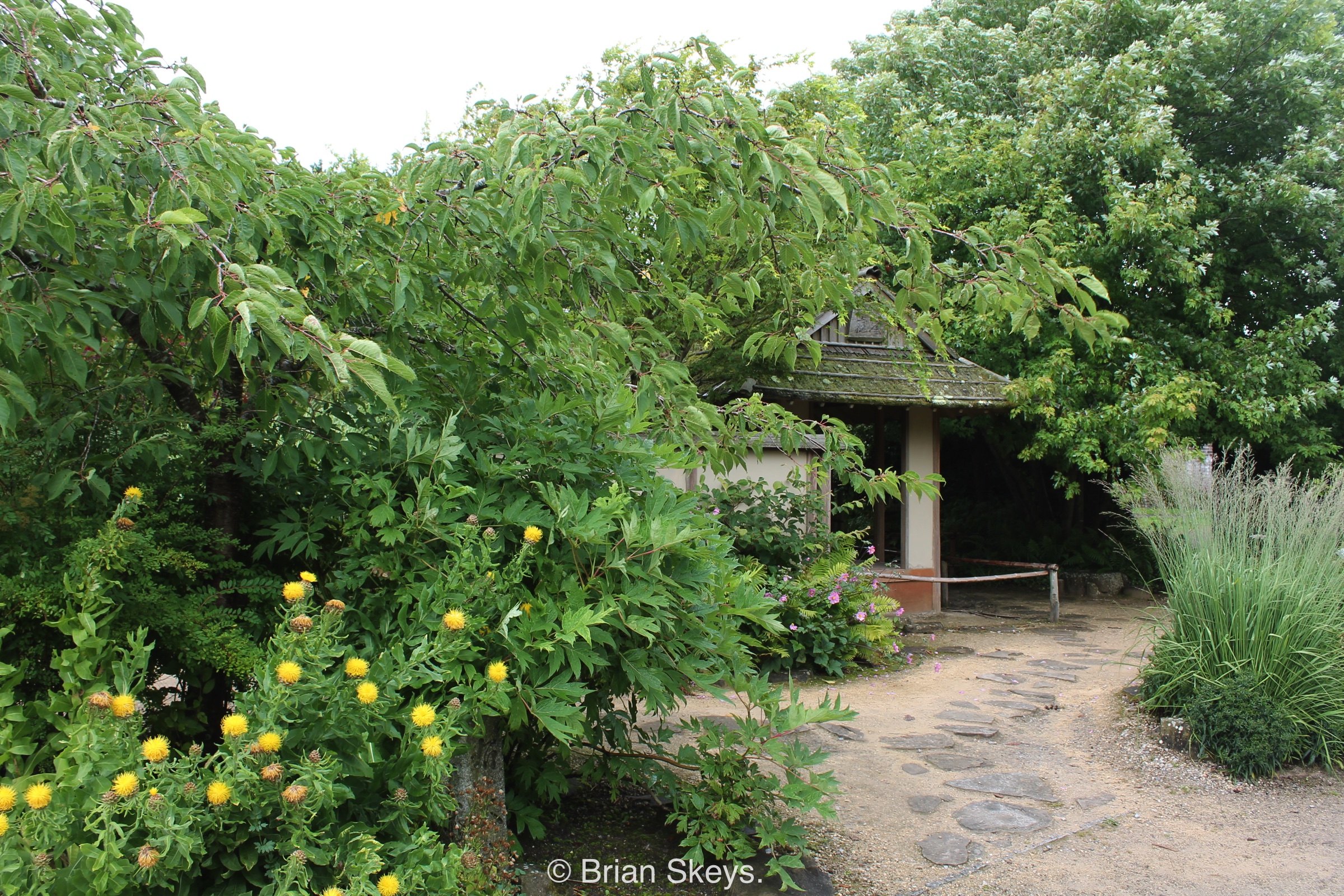
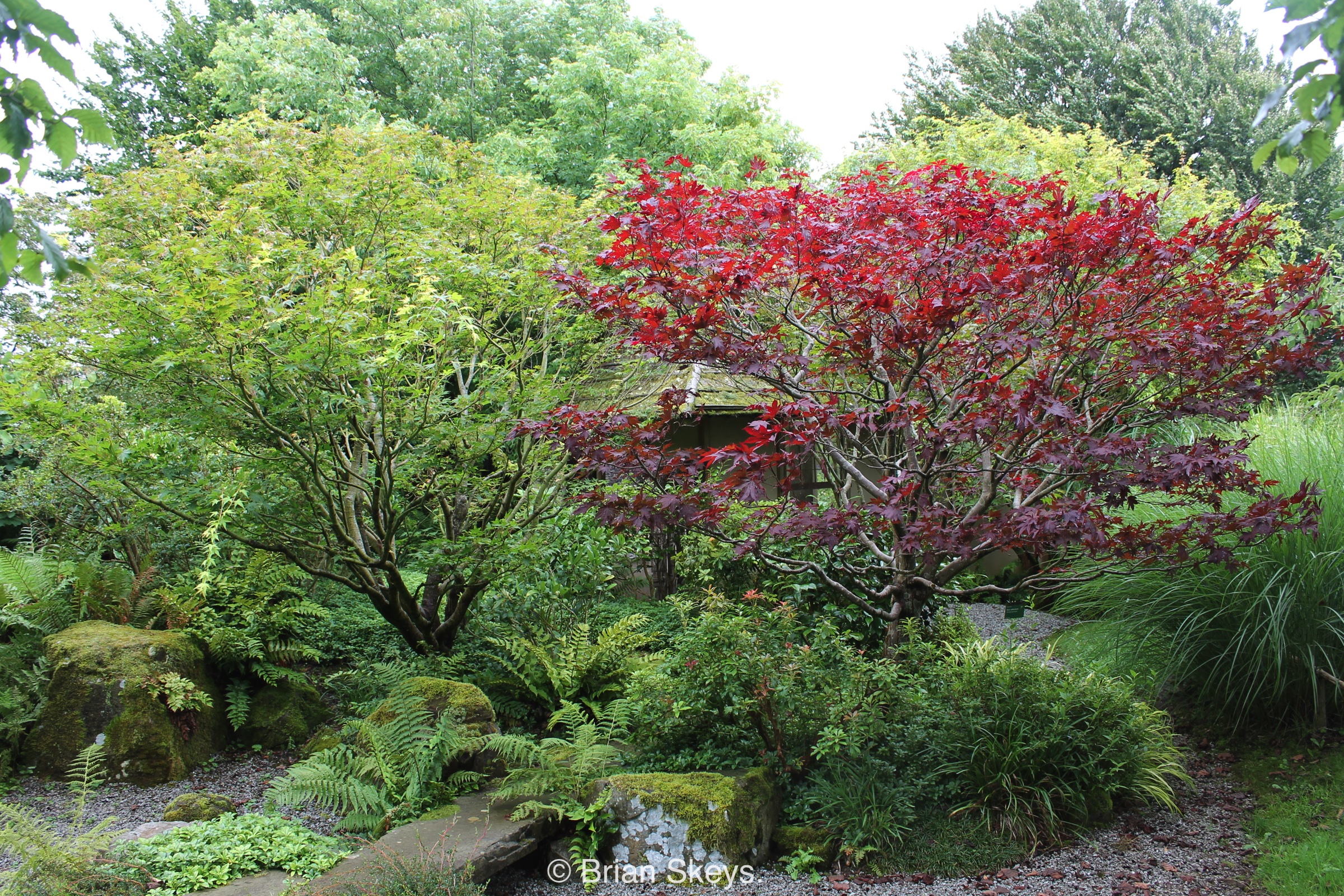
This is a place of learning, perched upon stilts this wooden building is full of microscopes and study aids, here schoolchildren can get the opportunity to explore the wonders of nature.
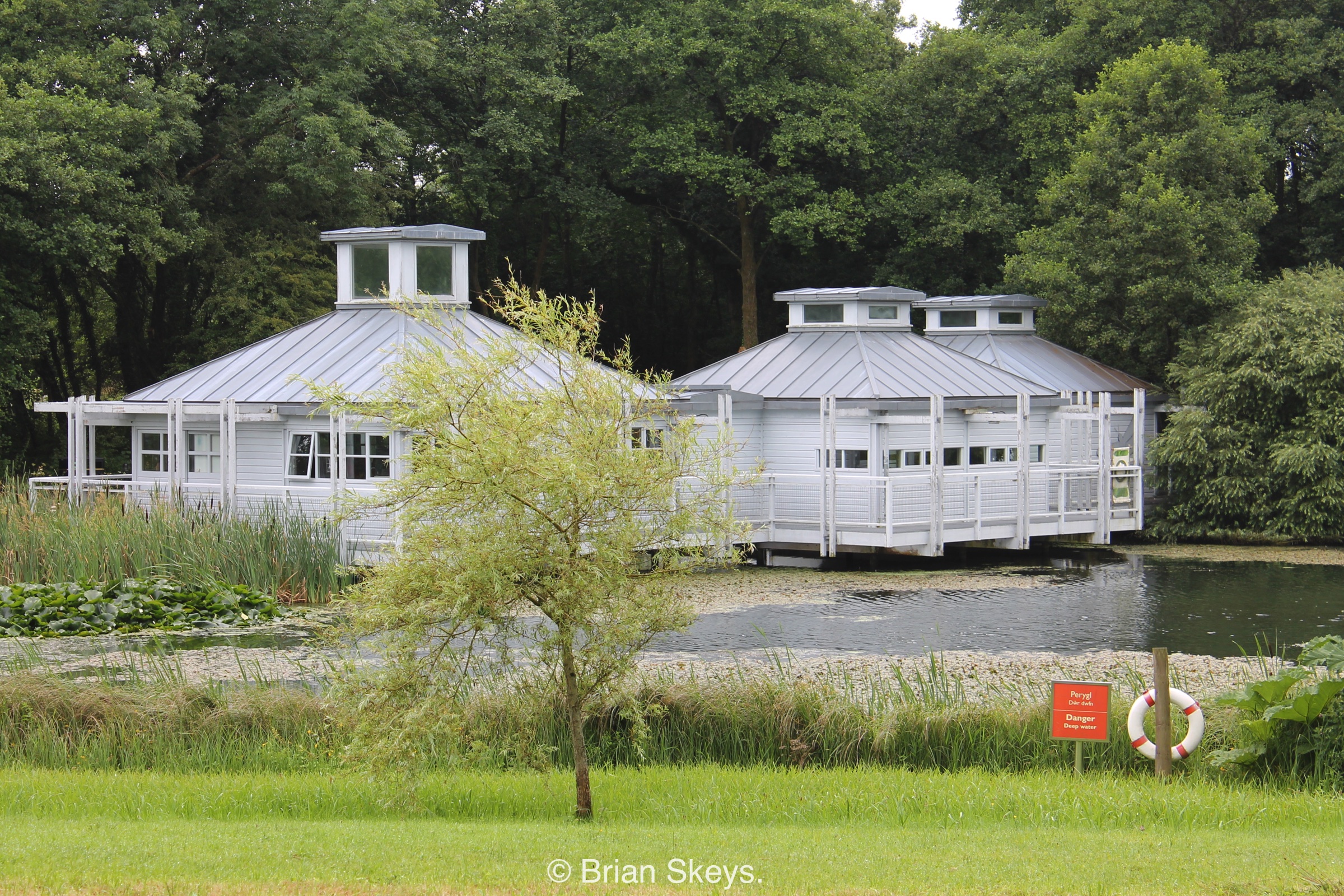
Situated in the Walled garden.

It was designed by the world-renowned Welsh architect John Belle, celebrated for his restoration of some of the most famous landmarks in the USA. It is home to tropical plants and a butterfly house.
When it was built 200 years ago, the Double Walled Garden, at over three acres, could provide enough fresh fruit and vegetables for a household of 30 people, and employed 12 full- time gardeners.
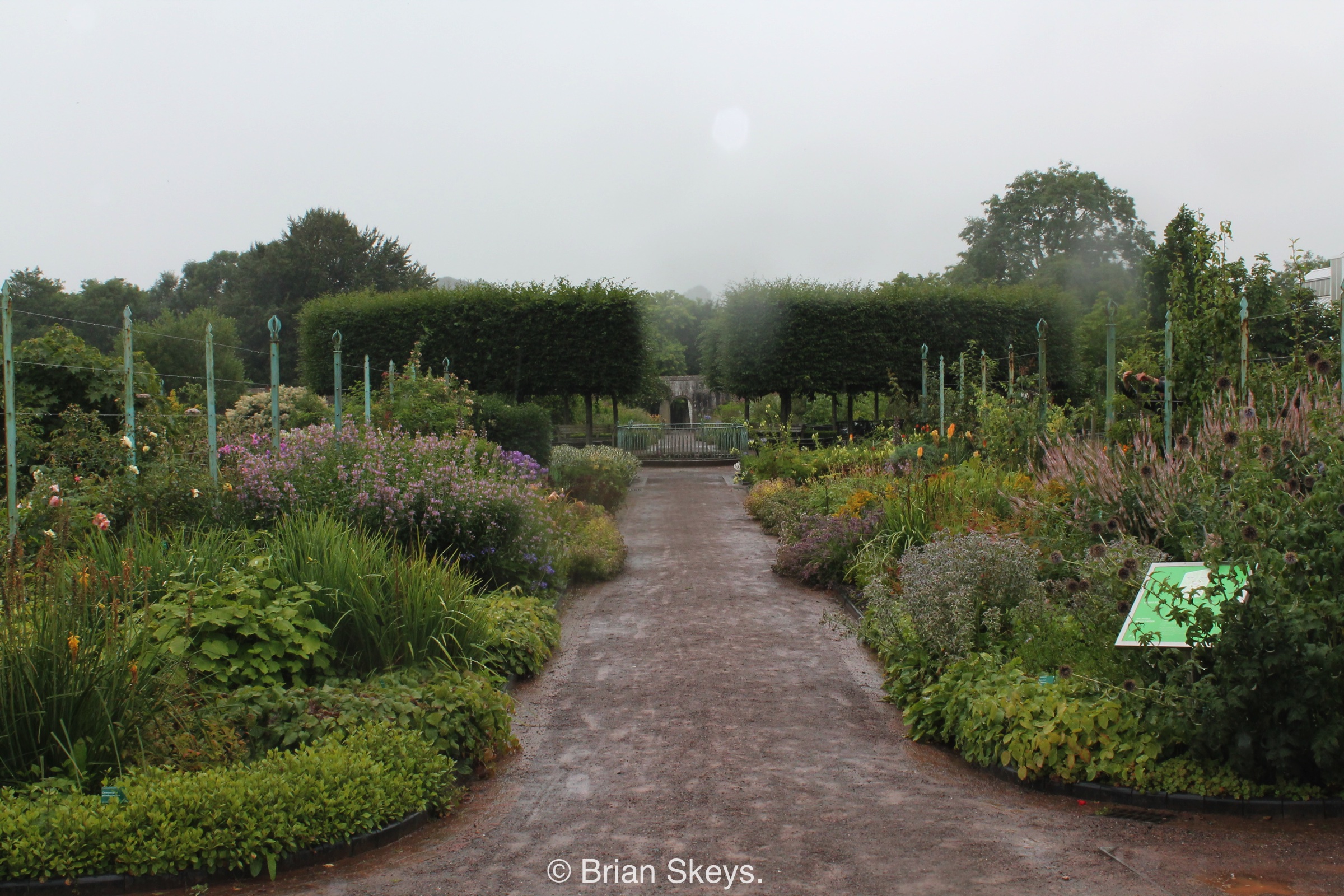
The two walls, one brick, one stone, provided shelter from animals and the harsher elements, and created important microclimates where tender plants could grow. It is divided into four quadrants, each with its own distinctive pathway. Part of the vegetable garden is given over to local School Allotments, where the schools have built a plastic bottle greenhouse.
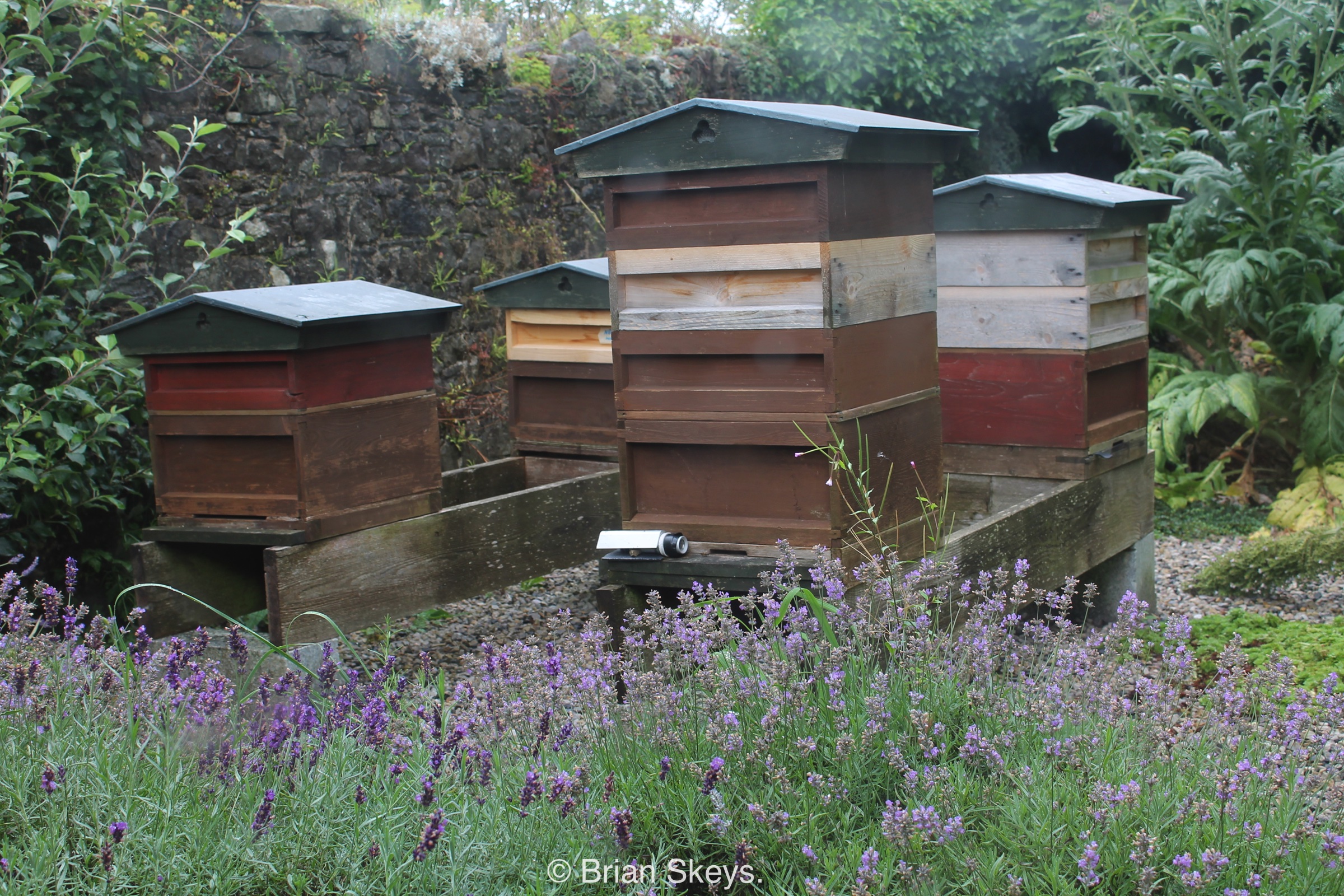
You can end your exploration at the Stable Block, this houses the Seasons Restaurant, Gift Shop and Oriel Yr Ardd Gallery.
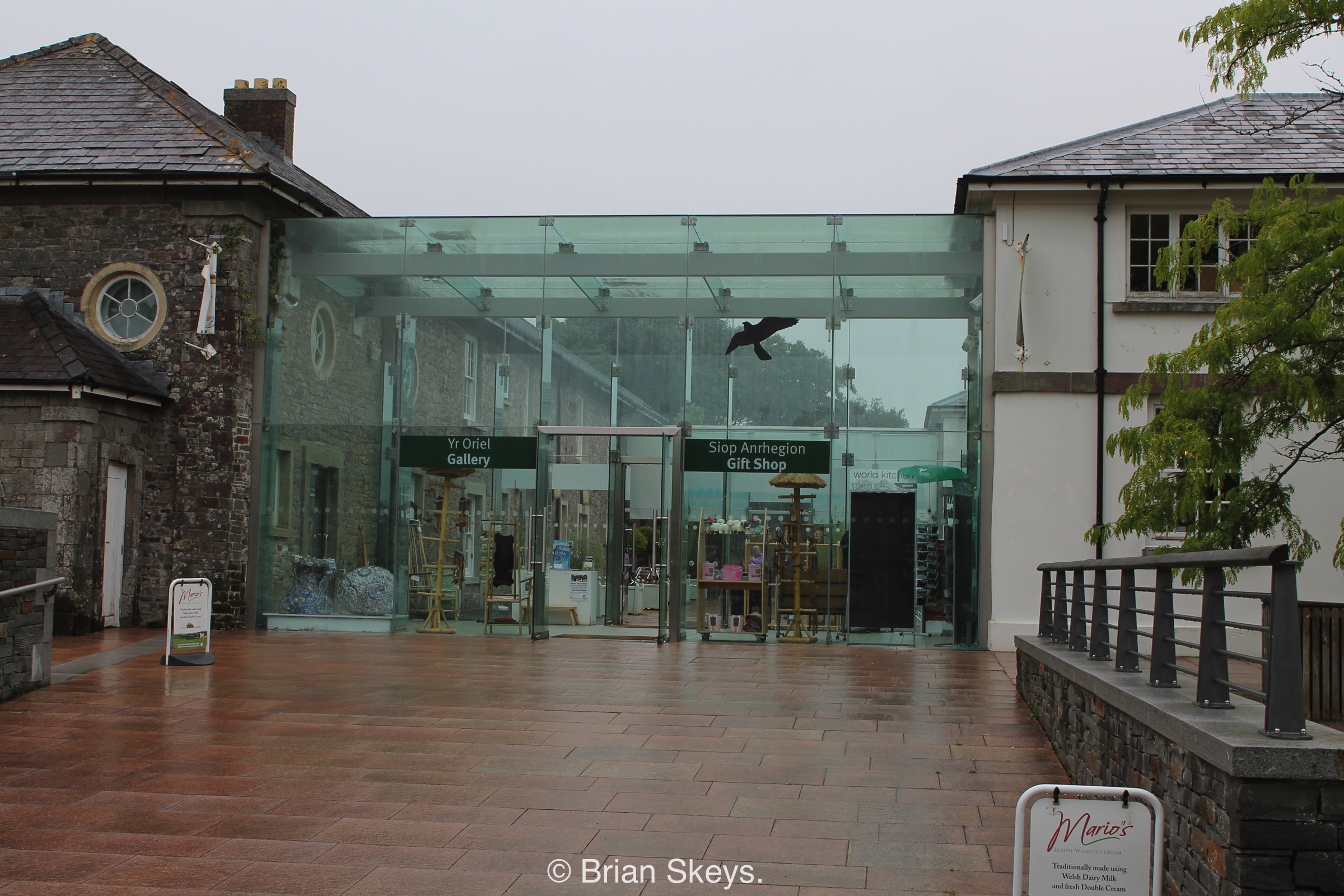
If you are planning to visit Wales during the year, we would recommend a visit to the Botanic Garden of Wales, there is much more to see than I have shown.
It also ties in well with a visit to Aberglasney Gardens, another favourite with us.
Today (Friday) was the first day of sunshine here and after too many days of rain, it does bring a song into your heart.
I ventured out into the garden to finish pruning the climbing roses, before I began, I decided to do a tour with the camera. The gardener’s friend, was as usual, keeping an eye on me while providing his own welcome tune.
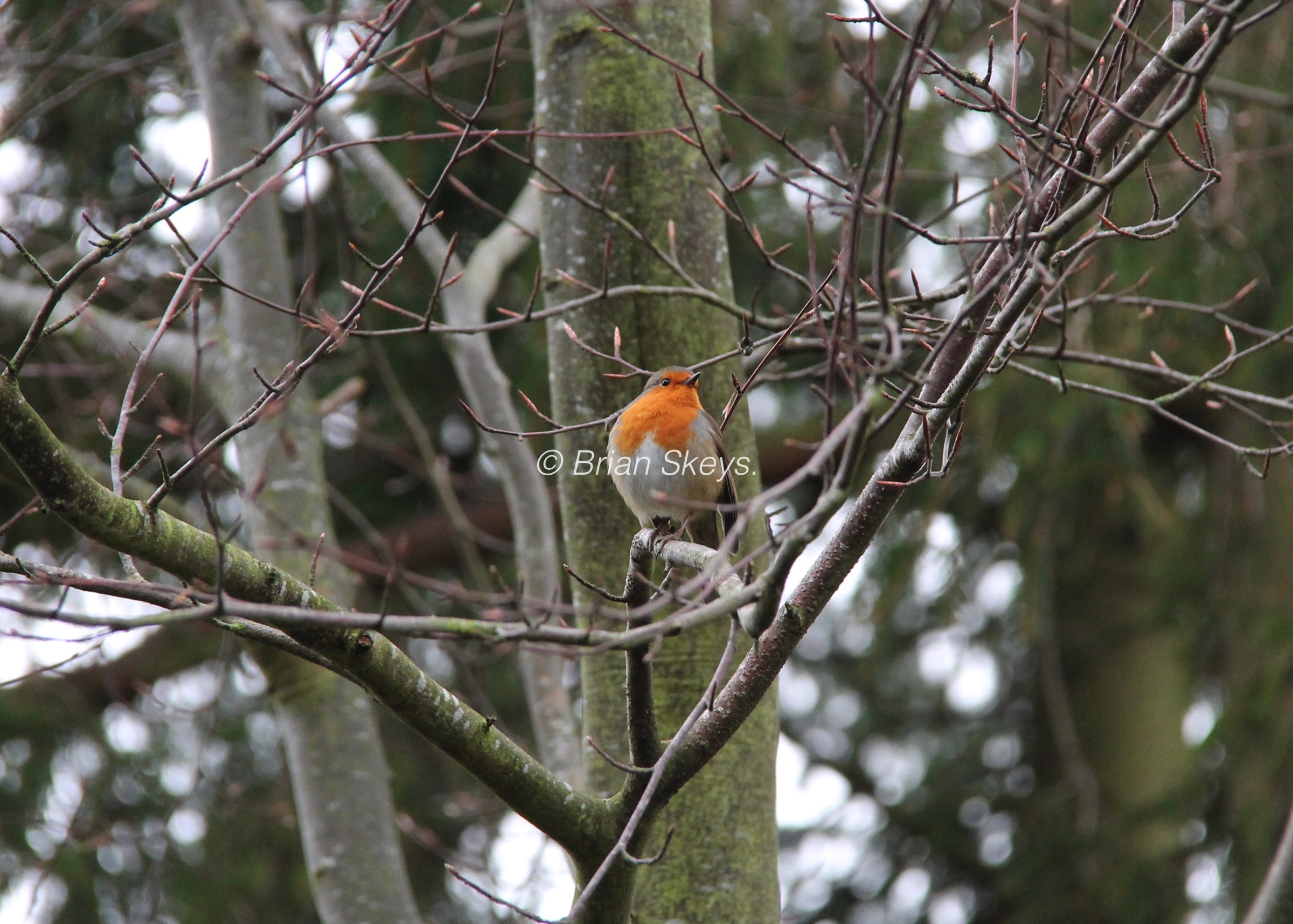
The Mohonia in full flower, with the sunshine, brought the honey bees out from their hives.
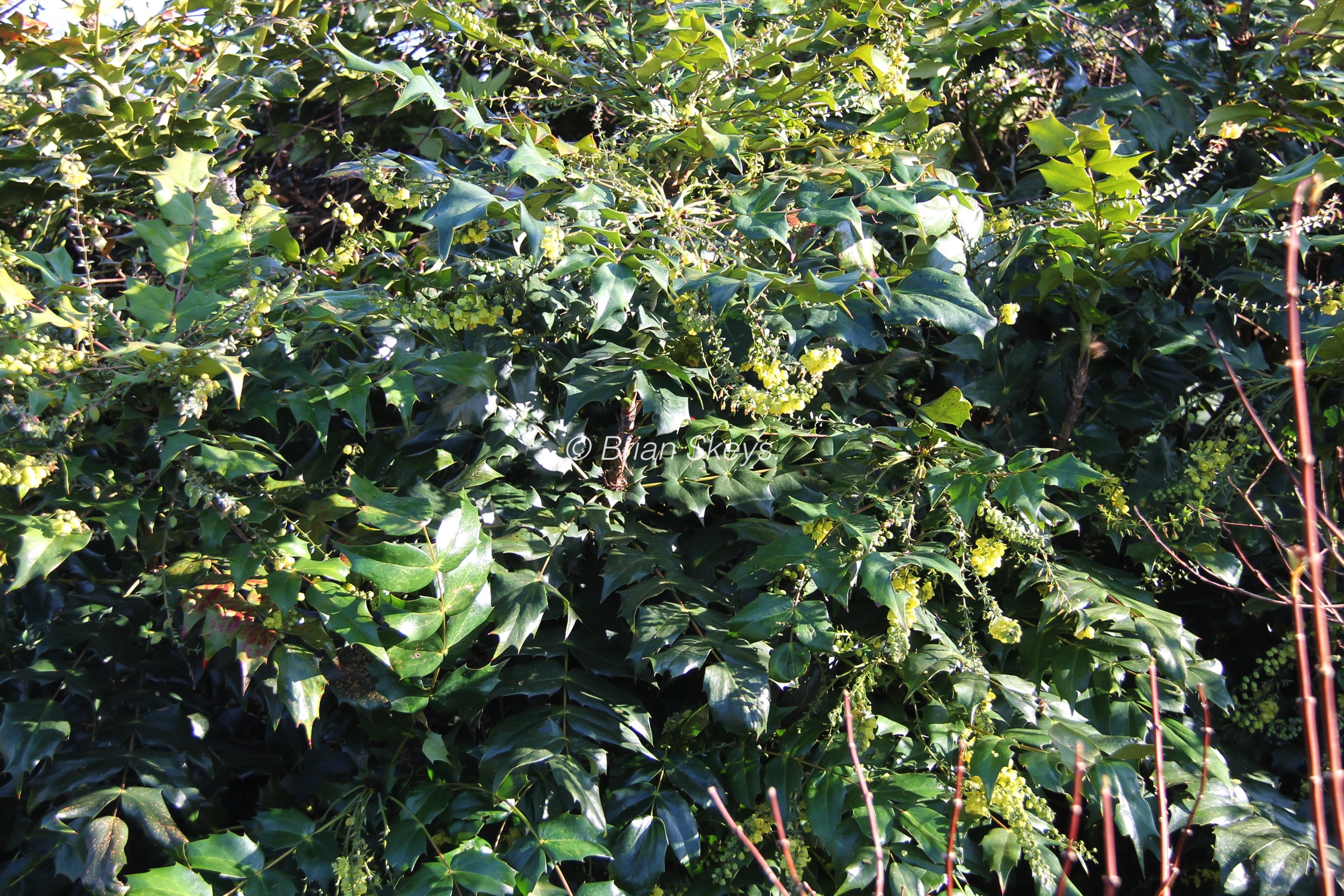
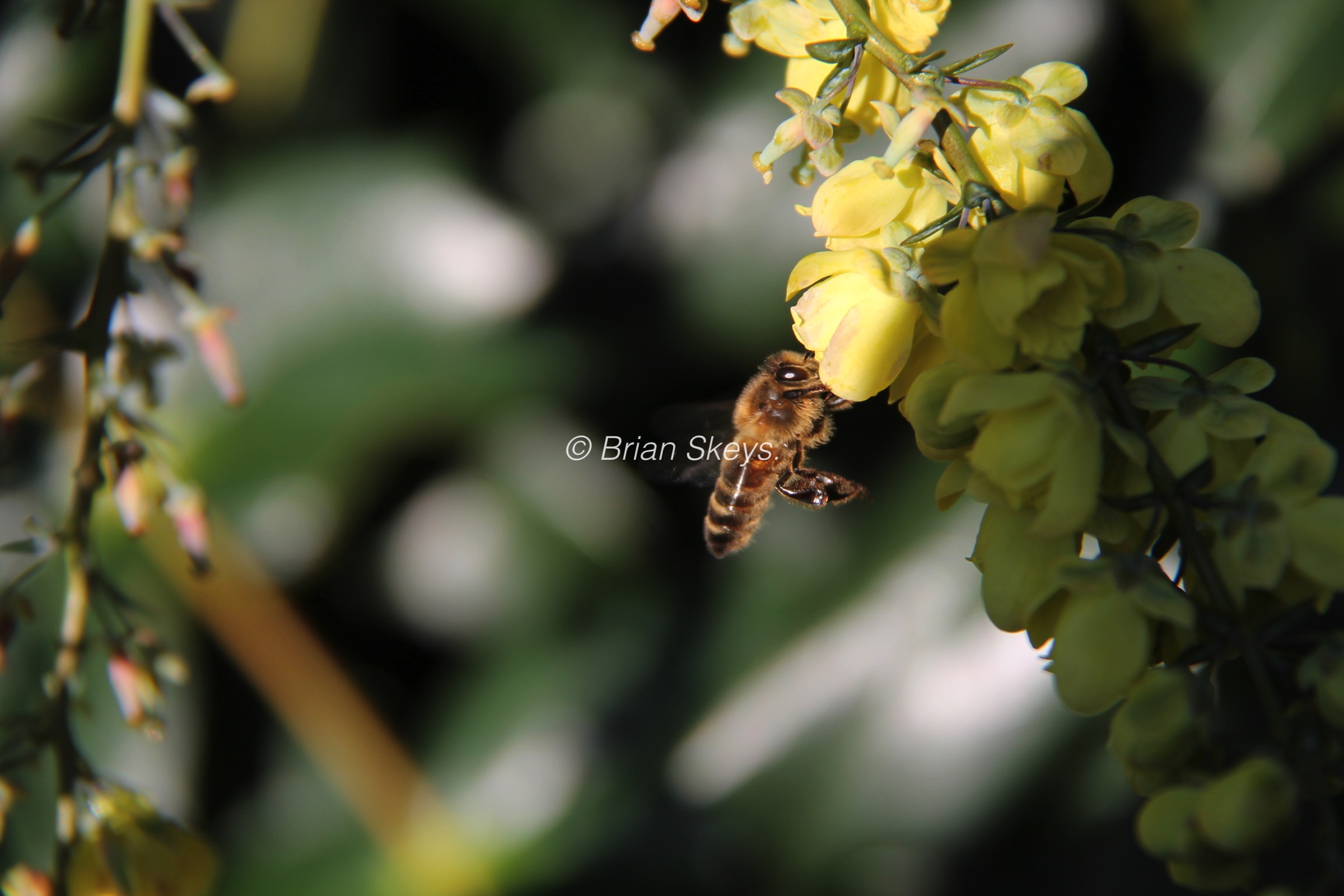
They were also visiting the Clematis which scrambles all over it.
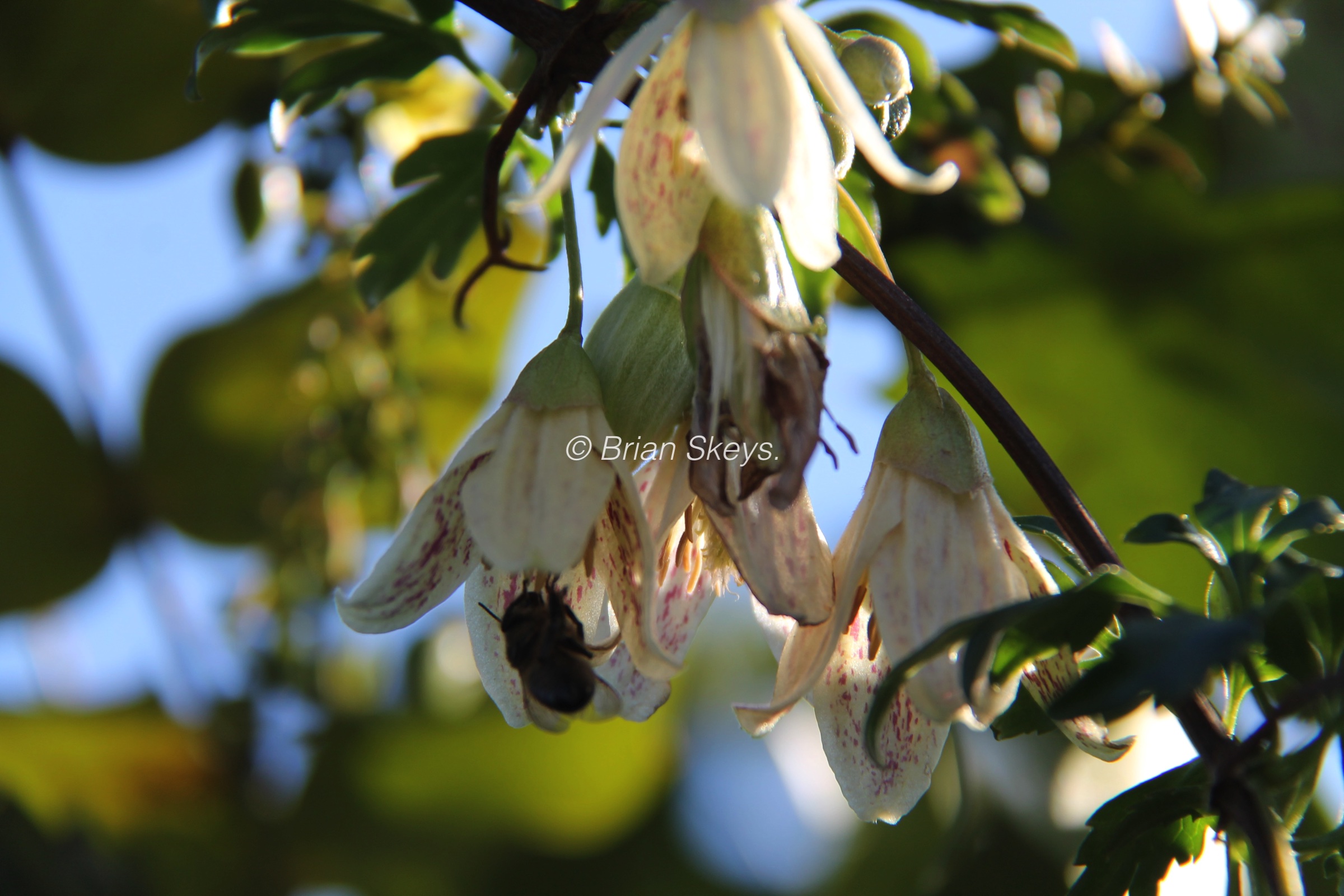
By the front door there are pots planted up for a seasonal display with Carex, Ferns, Cornus stolonifera ‘Flaviramea’, Erica x darleyensis ‘Phoebe’, Thuja ‘Goldy and the…
…Snowdrop elwesii…
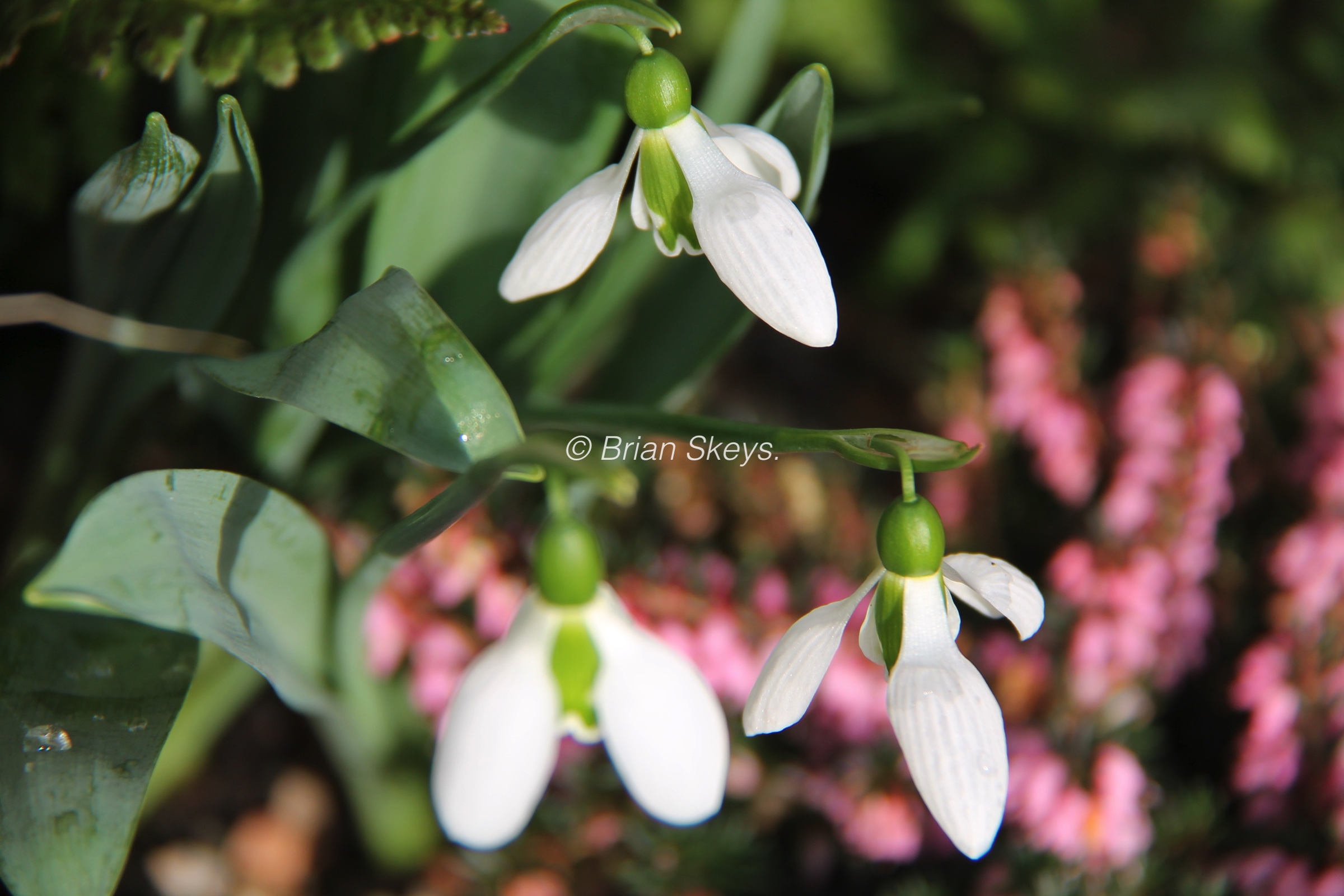
…and a hellebore.
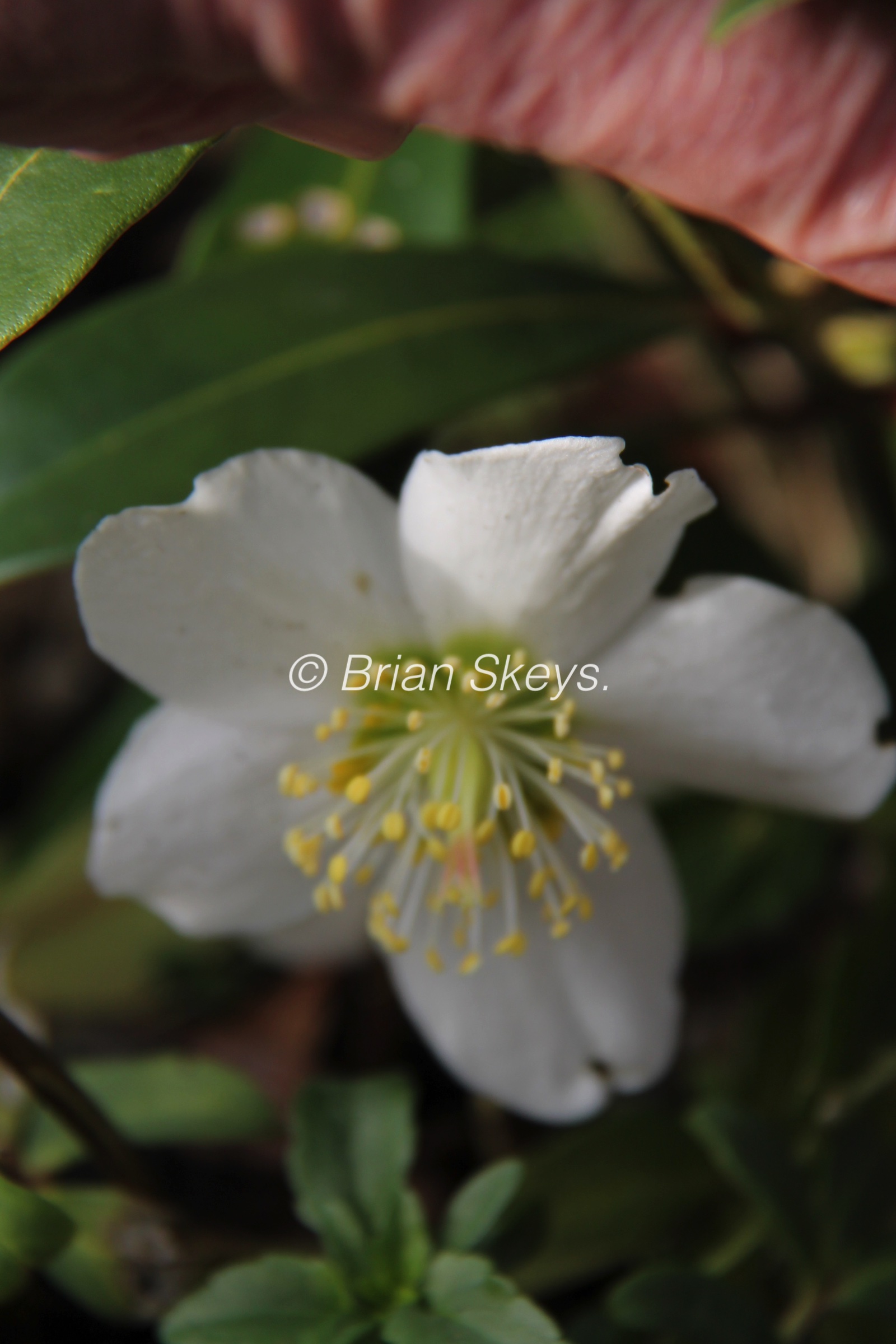
Another pot contains the Sarcococca ‘Winter Gem’.

On the other side of the door an Euonymus is trained against the wall with Sarcococca confusa in front…
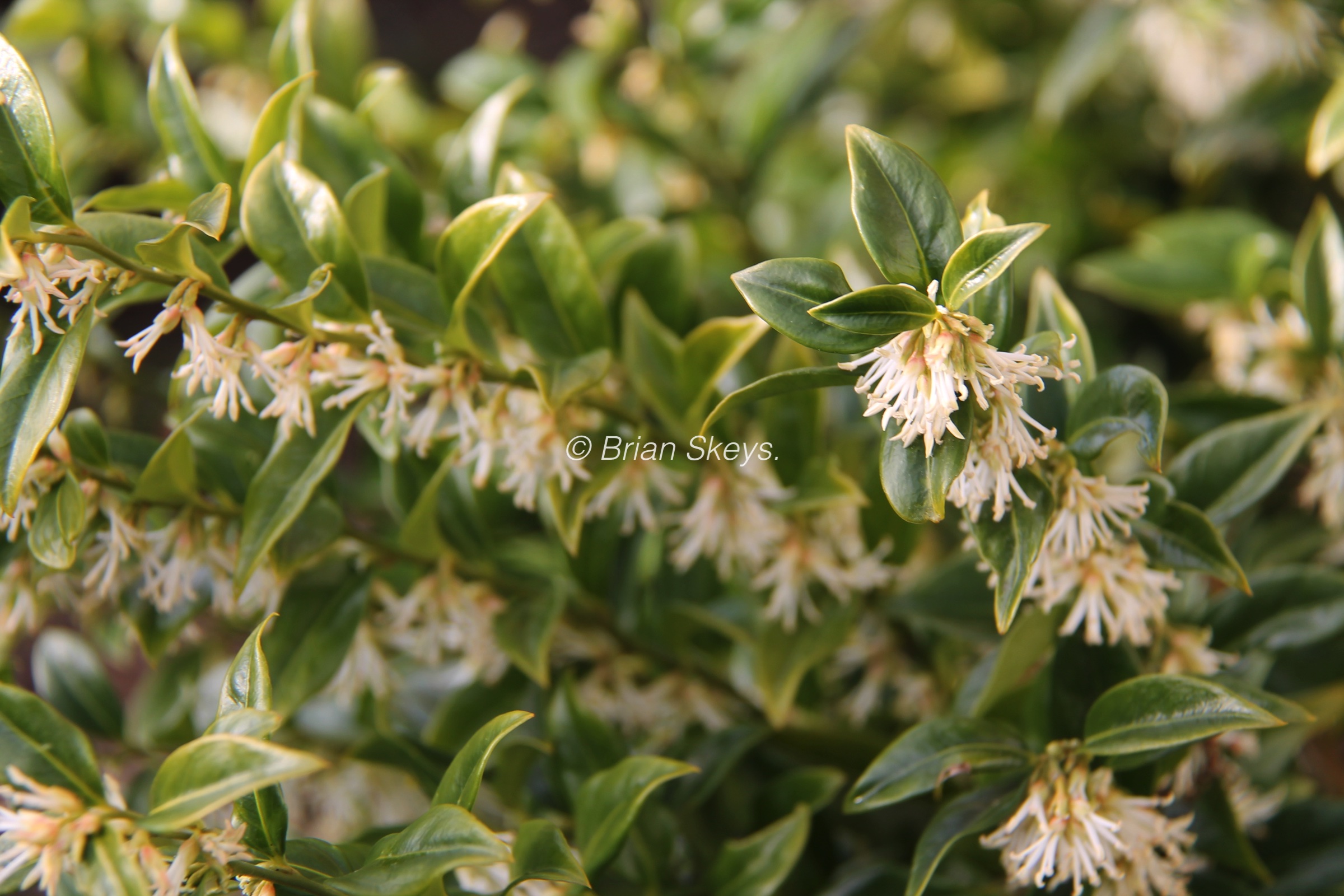
…the powerful scent from the Sacococca ( Christmas Box) fills the house every time the door is opened.
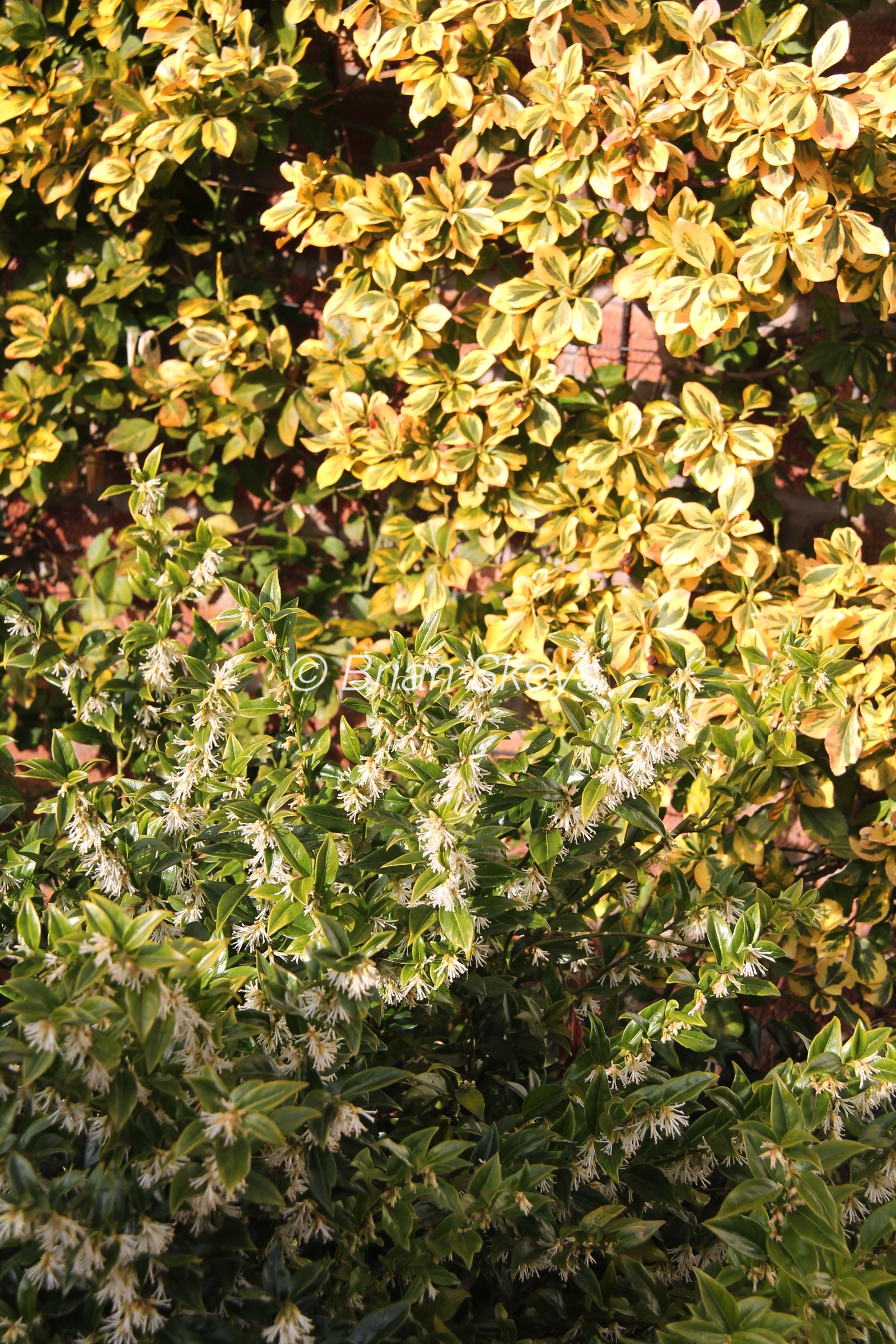
In the Oriental garden the Hamamelis is in full flower, I have mentioned before I would not recommend this variety, because it holds on to its dead leaves. I removed them all before taking this picture.
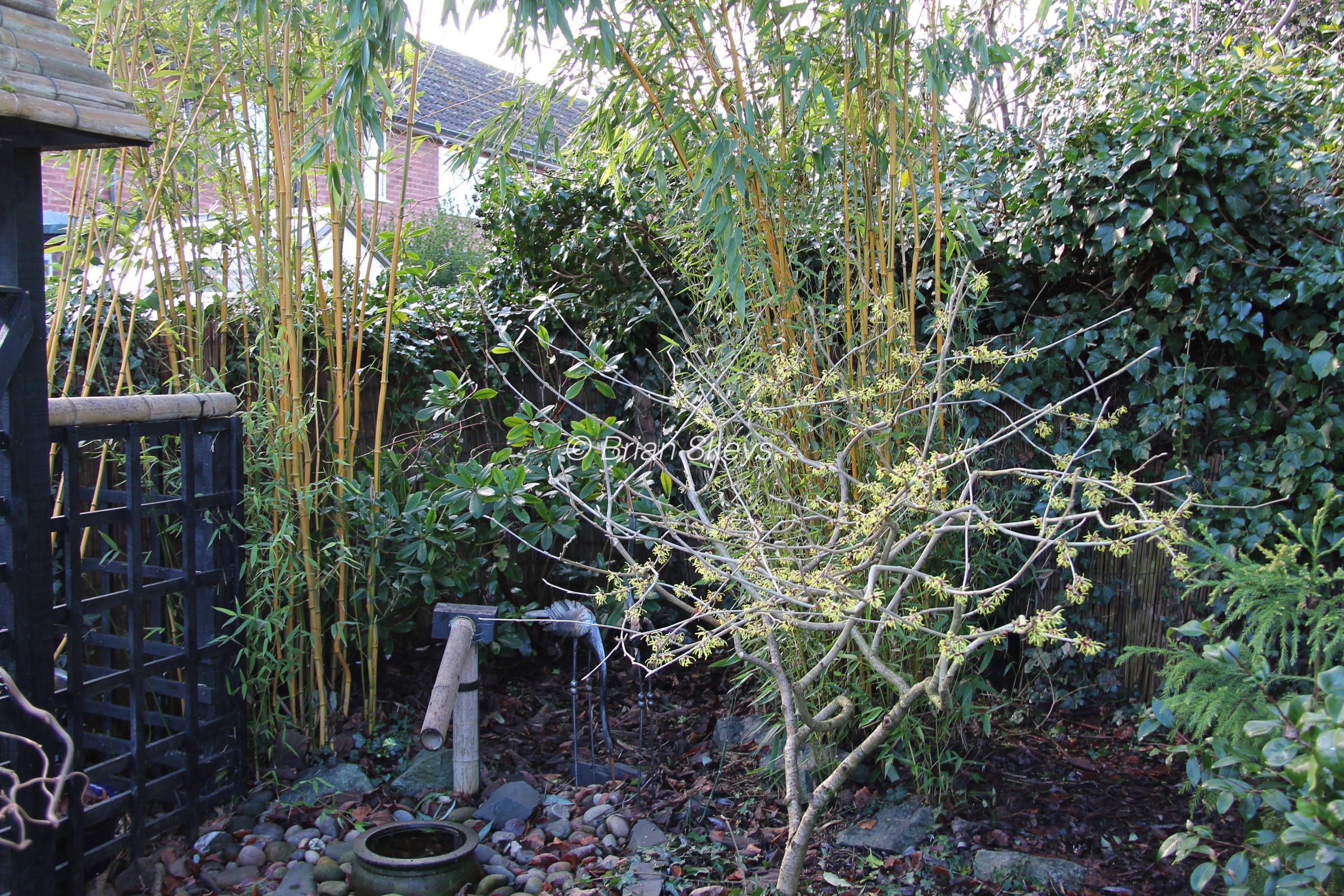
The sunshine was highlighting the Erica ‘Albert’s Gold’ by the entrance to the White and Green garden and the standard variegated Holly, Ilex ‘Argentea Margenata’ at the back.
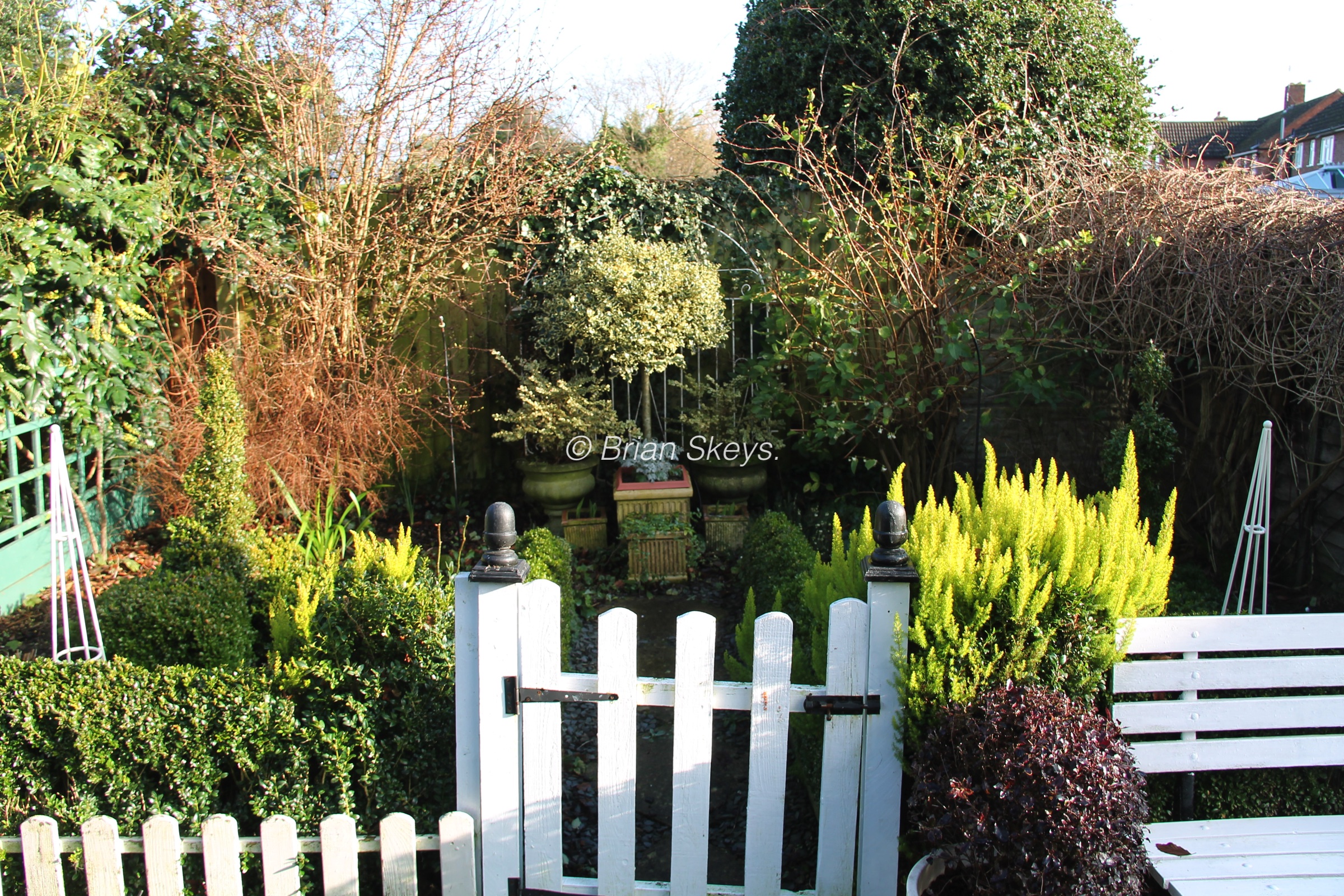
Around the Holly are planters with variegated Myrtle, Tulips just starting to show and Vinca minor ‘Alba’

The snowdrops are beginning to open around the garden, especially where the sun reaches…
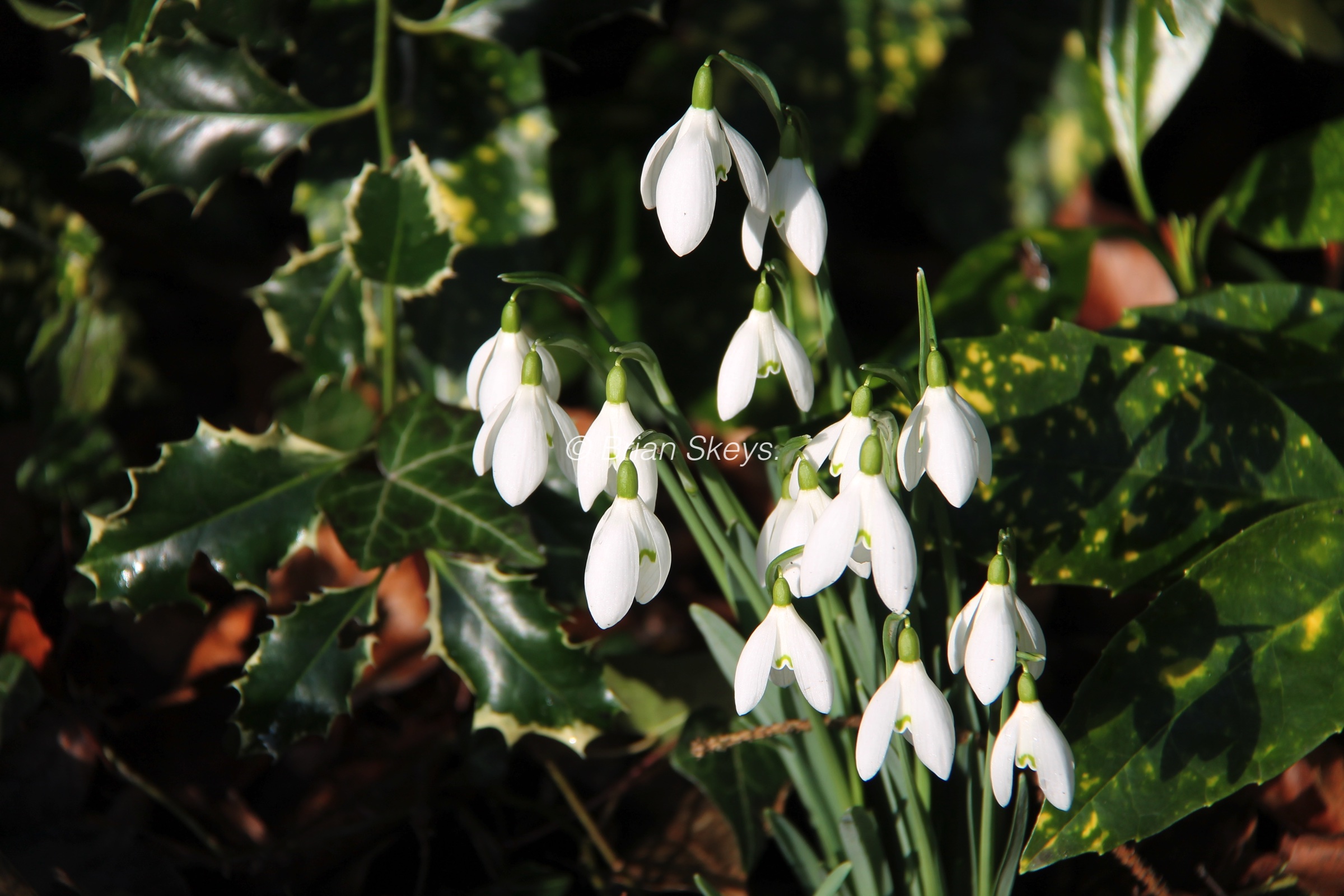
…the common double, which was given to me by a friend, are clumping up well, ready to divide later on…

…as is the winter aconite, although more slowly.
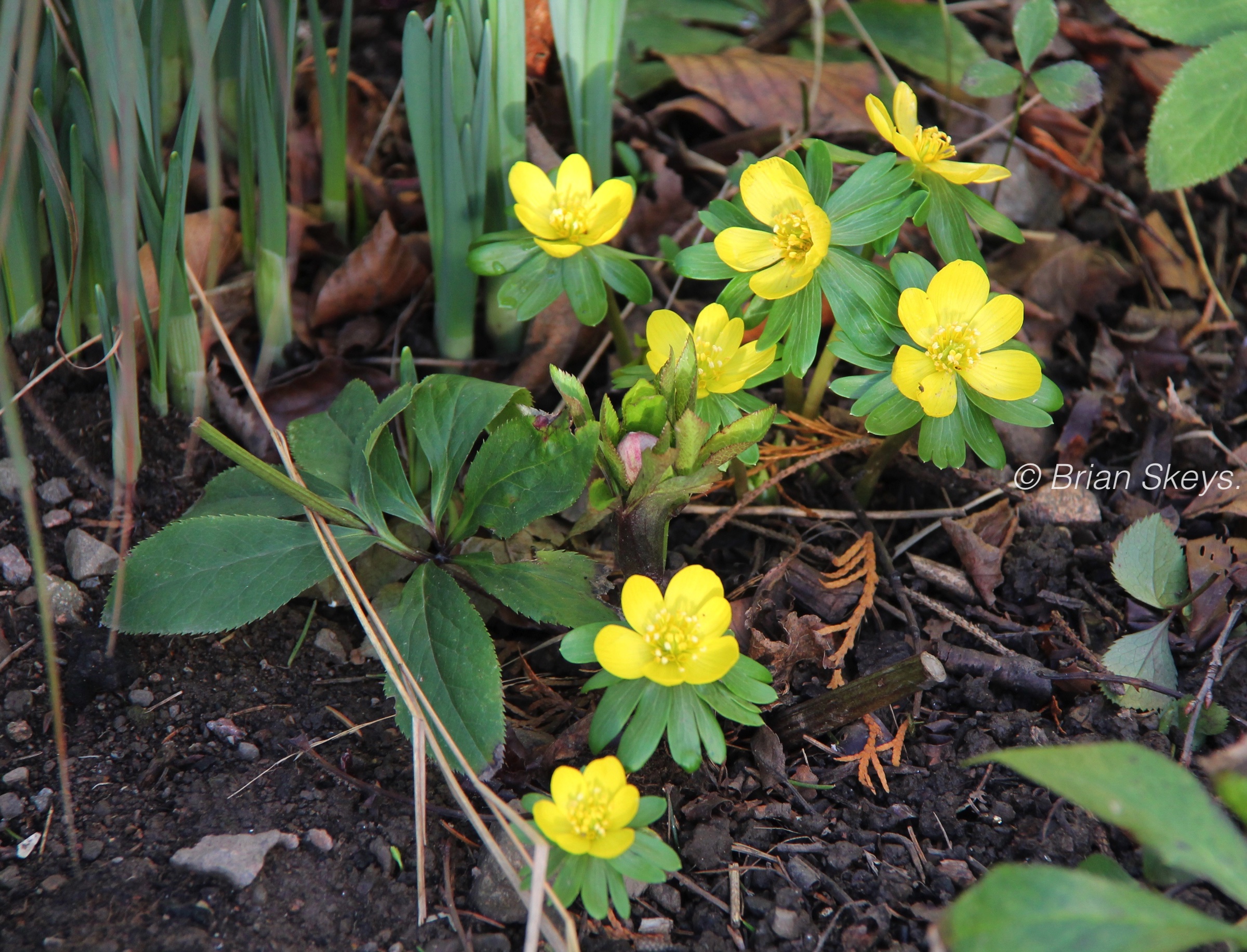
The Prunus Serrula always looks wonderful with the sunlight on its bark, its mug decorations ( Mug Tree) have so far survived the winter.
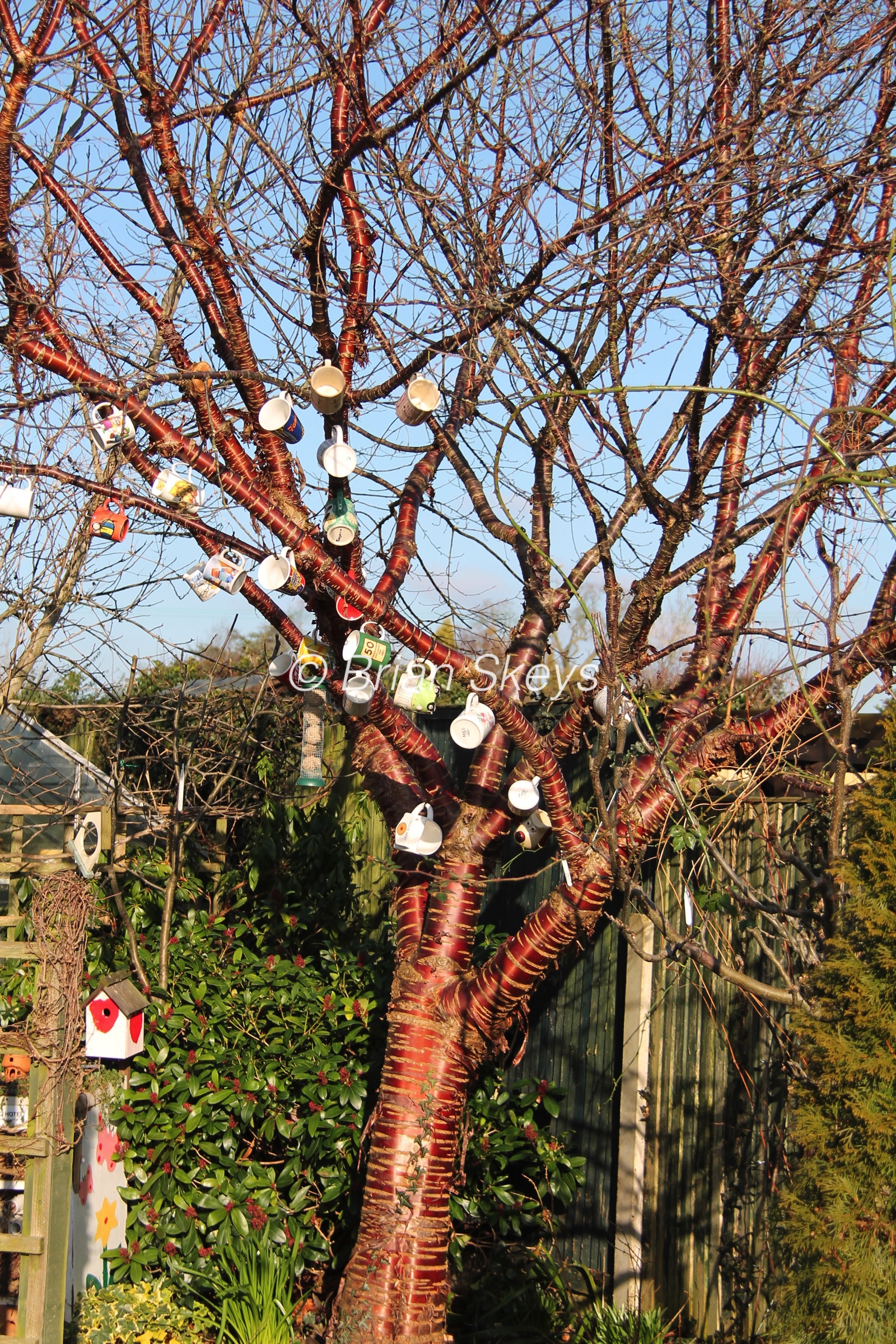
Around its roots is a Skimmia and variegated Ivy. Many gardeners fear ivy in the garden, I like to see it, the variegated forms are not so vigorous, while providing some colour to lighten a dark area of the garden along with being good for wildlife.

It is easy to ignore plants such as Skimmia when everything else is in full flower, however at this time of year they make a welcome contribution to the garden and this one below is a little more unusual than most.

The House Sparrows are gathering in the top of a Viburnum before diving down on to the ground feeders.

We enjoy visiting gardens, it usually features in any holiday plans, besides giving pleasure they provide material for the blog and my garden presentations. In March 2017 we visited Oxford University Botanic Gardens.

The river Cherwell runs along the one side.
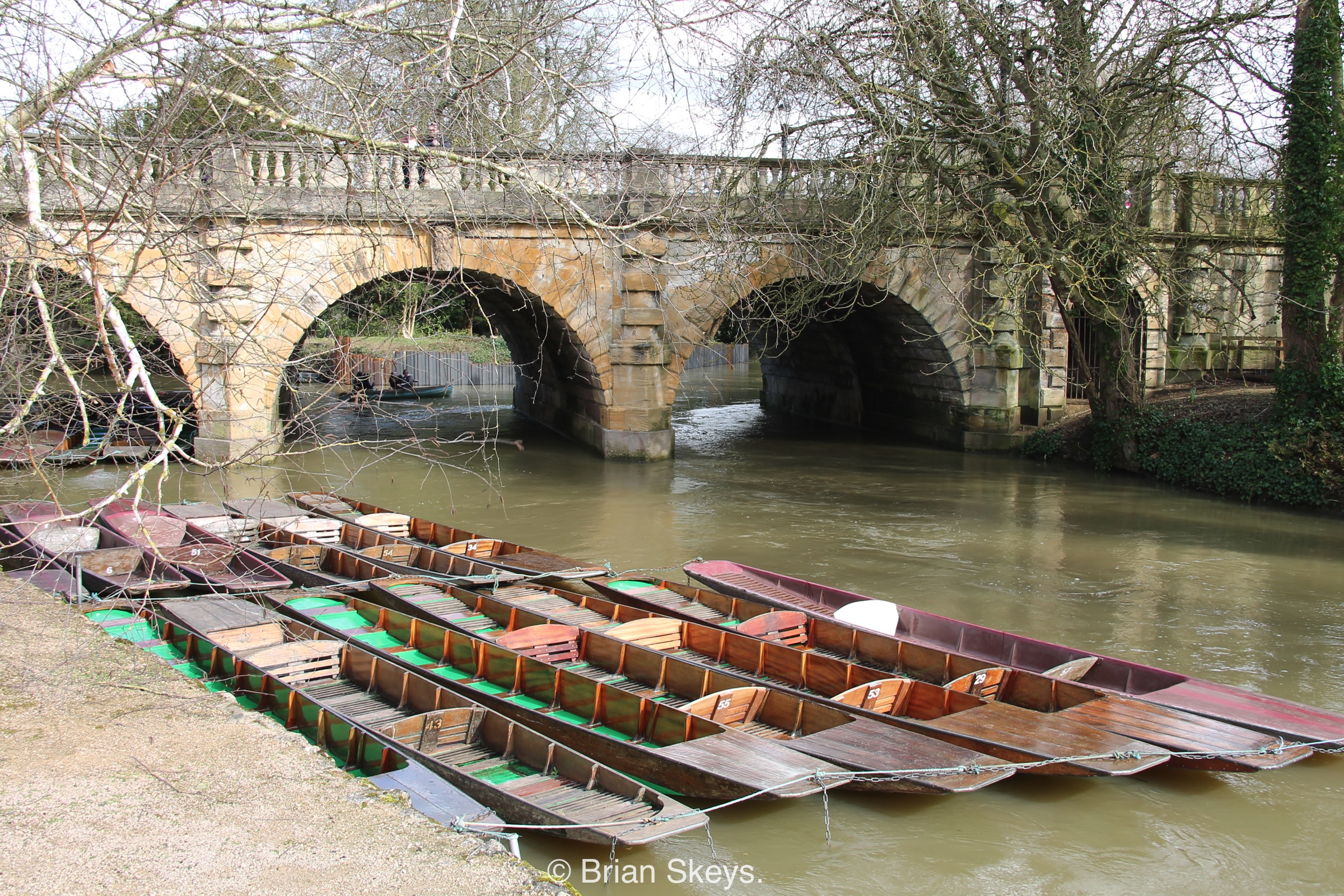 Growing on the bank is this lovely multi stemed silver birch.
Growing on the bank is this lovely multi stemed silver birch.
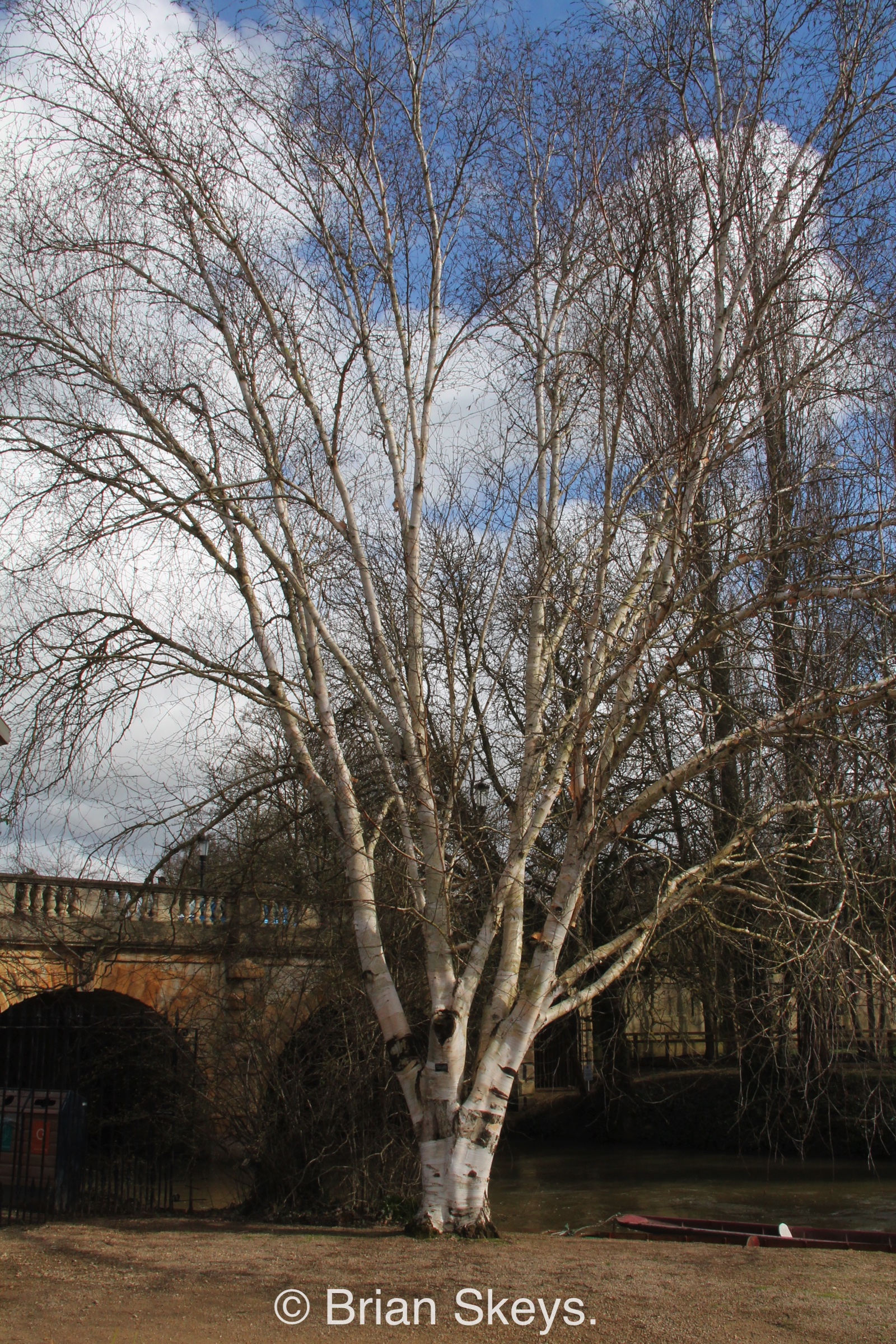
The garden was founded in 1621 making it the oldest Botanic Garden in Britain. It was originally founded to grow plants to support the teaching of medicine at the University, something that still continues today. Beneath the Parrotia Persica tree spring bulbs were in flower also in the distance a Cornus mas.
 Almost everything growing here is classified whether it be by botanical family, geographical origin or by its use. The family borders are planted to demonstrate which plants are related to each other. This Salix ‘Britzensis’ is in one of those borders, we have this willow in our garden. It has also been planted along side the river at Upton upon Severn a town close to us, in the Mathew Wilson designed borders. It looks particularly good alongside a pool, reflecting in the water, providing brilliant winter colour, hence its name.
Almost everything growing here is classified whether it be by botanical family, geographical origin or by its use. The family borders are planted to demonstrate which plants are related to each other. This Salix ‘Britzensis’ is in one of those borders, we have this willow in our garden. It has also been planted along side the river at Upton upon Severn a town close to us, in the Mathew Wilson designed borders. It looks particularly good alongside a pool, reflecting in the water, providing brilliant winter colour, hence its name.
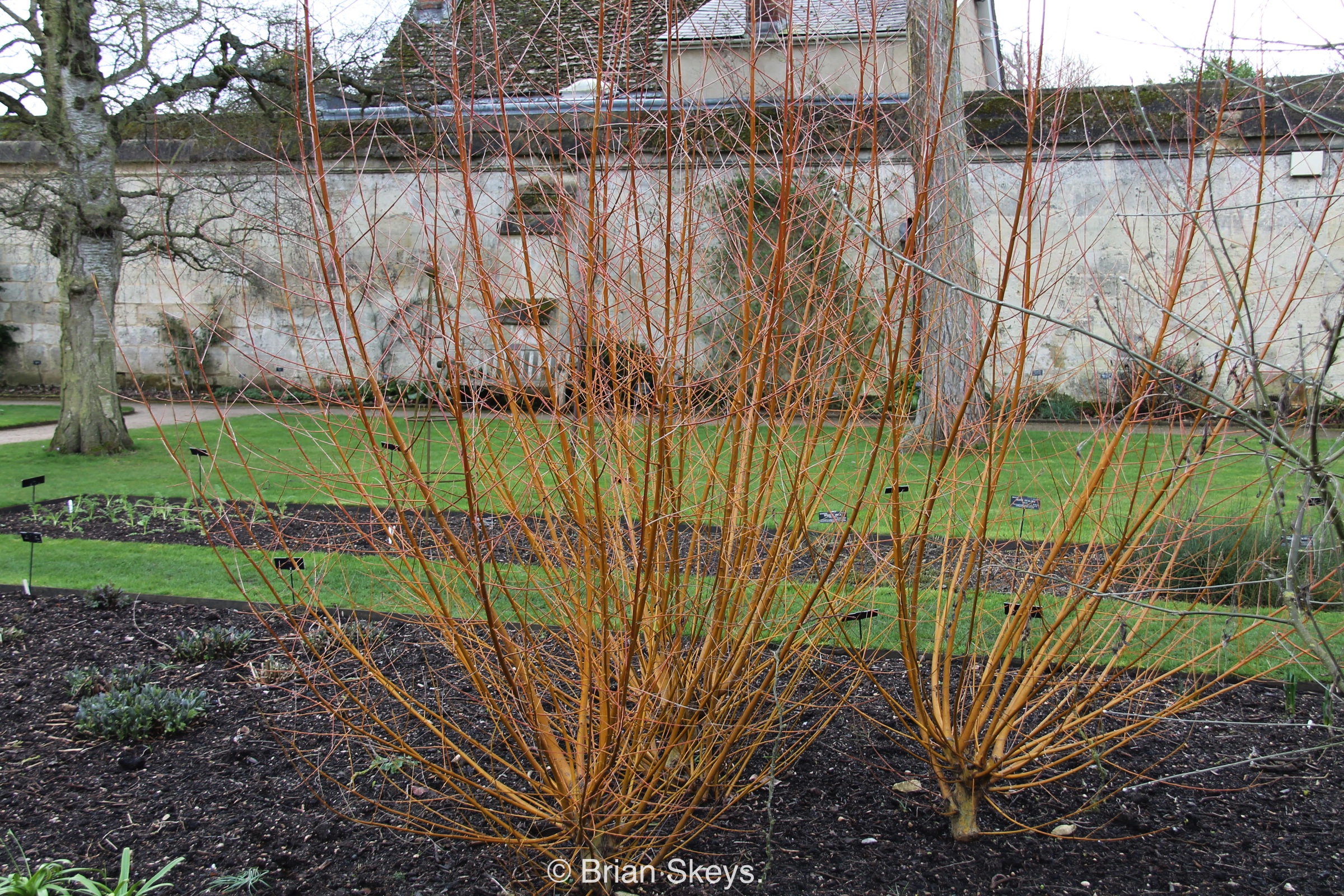
Within the wall borders they grow plants from different regions New Zealand, the Mediterranean and South Africa.
Going down to the Lower Garden, you pass the Rock Garden, first built in 1926.

Plants that changed the world feature in the four allotment style beds in the Lower Garden. This one, for some reason cought my eye!

The Lower Garden has been redeveloped since 2009 by Kim Wilkie Associates to more reflect its role as a Botanic Garden.
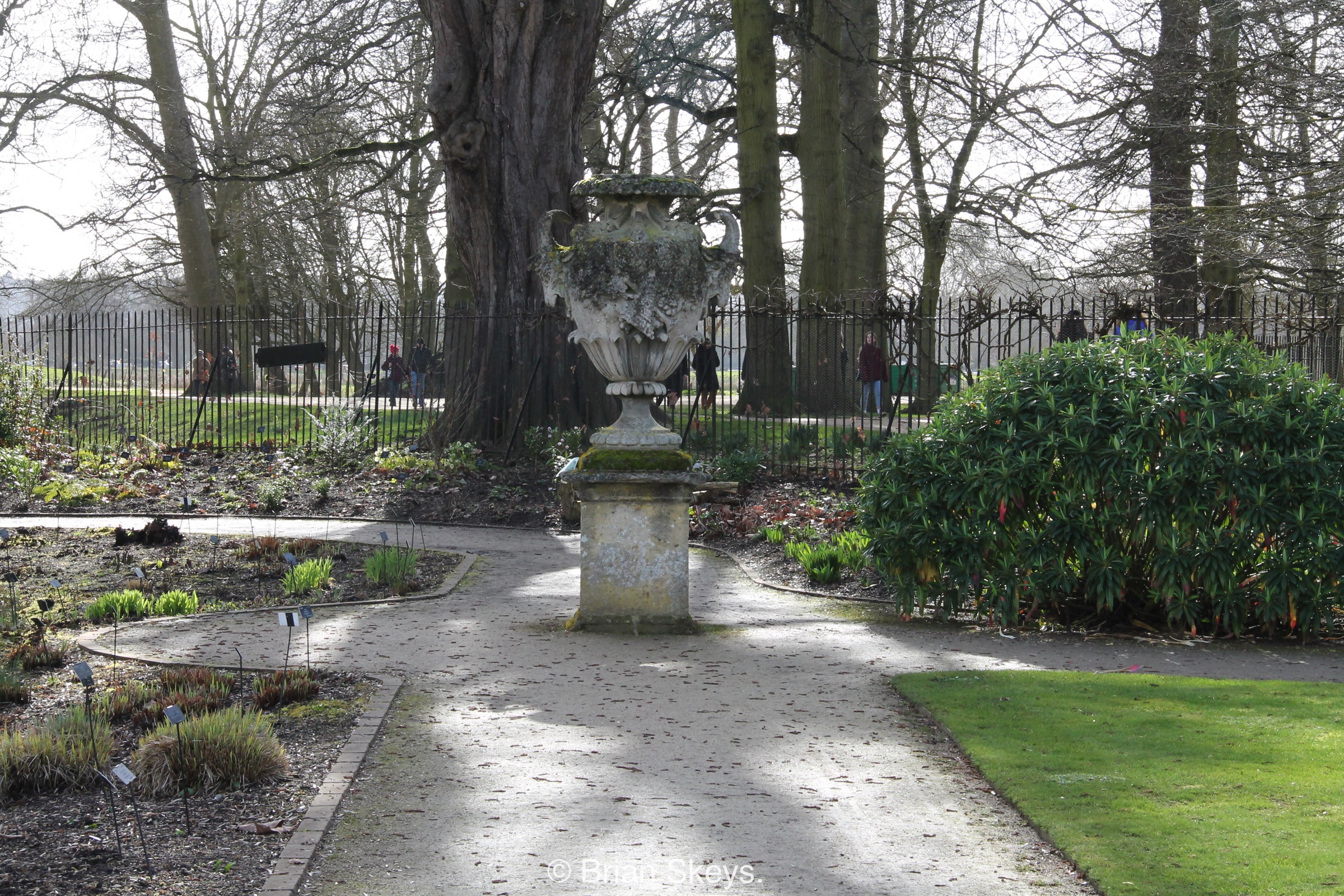
There has been a glass house here for over 300 years. today there are more than 700 square metres of glasshouses.
This is home to mainly crop plants, such as Banana, Pineapple and the Pink Banana, Musa Velutina, a species of seeded banana.
Here their giant Victoria Water Lily, takes pride of place the leaves of which you can see in the front of this picture.
 This is a tropical water lily, its date of origin is prior to 1856. It is described as highly viviparous, in that its seeds begin to develop before they detach from the plant.
This is a tropical water lily, its date of origin is prior to 1856. It is described as highly viviparous, in that its seeds begin to develop before they detach from the plant.
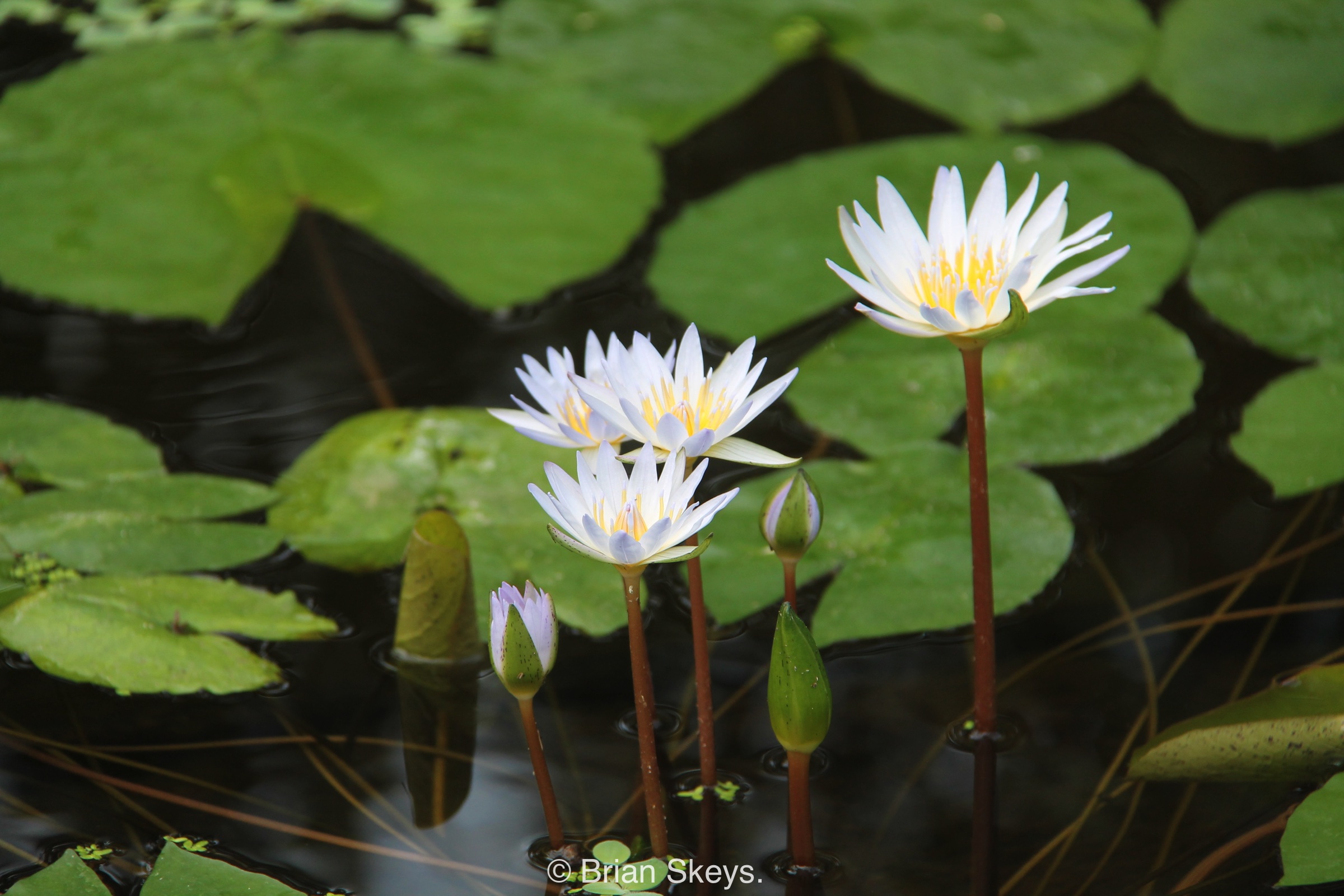
Is home to their collection of cacti and succulent.
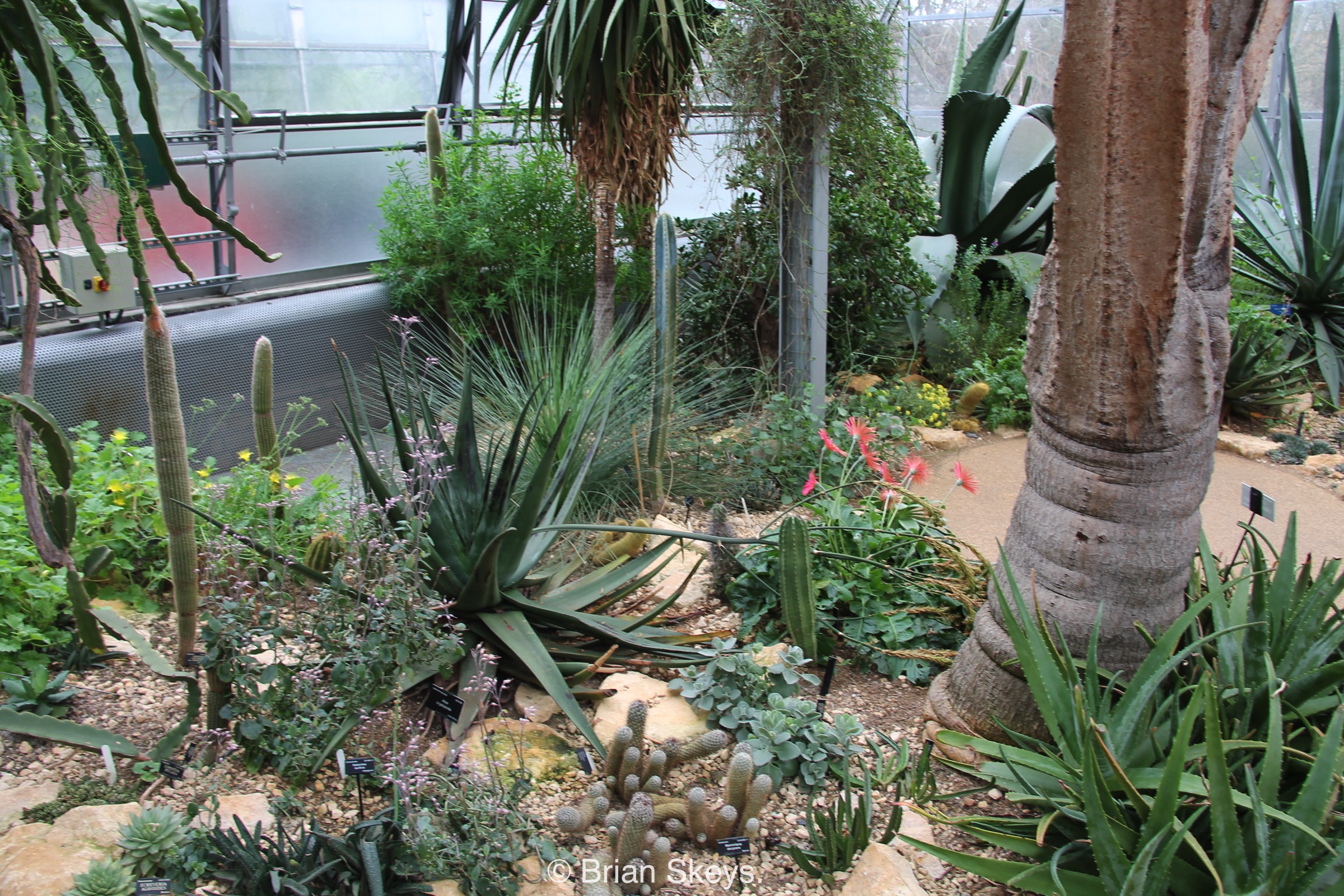
Alongside the three main glasshouses are three smaller ones.
The Alpine House uses a traditional plunge sand bed to display the plants.
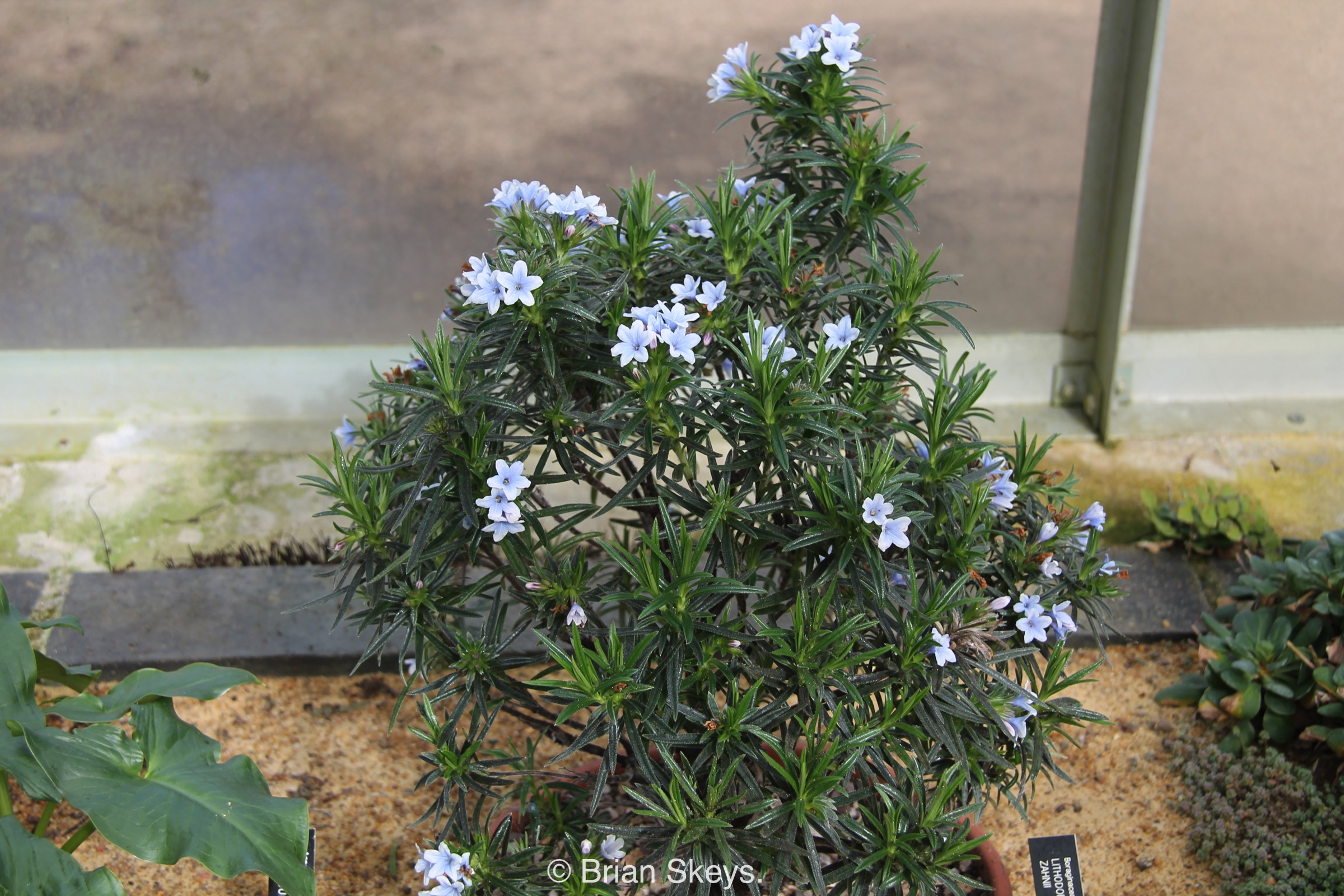
The Fern house is devoted to displaying the many different forms of this group. I do like the look of Staghorn ferns or Elkhorn ferns, there are 18 species in this family.
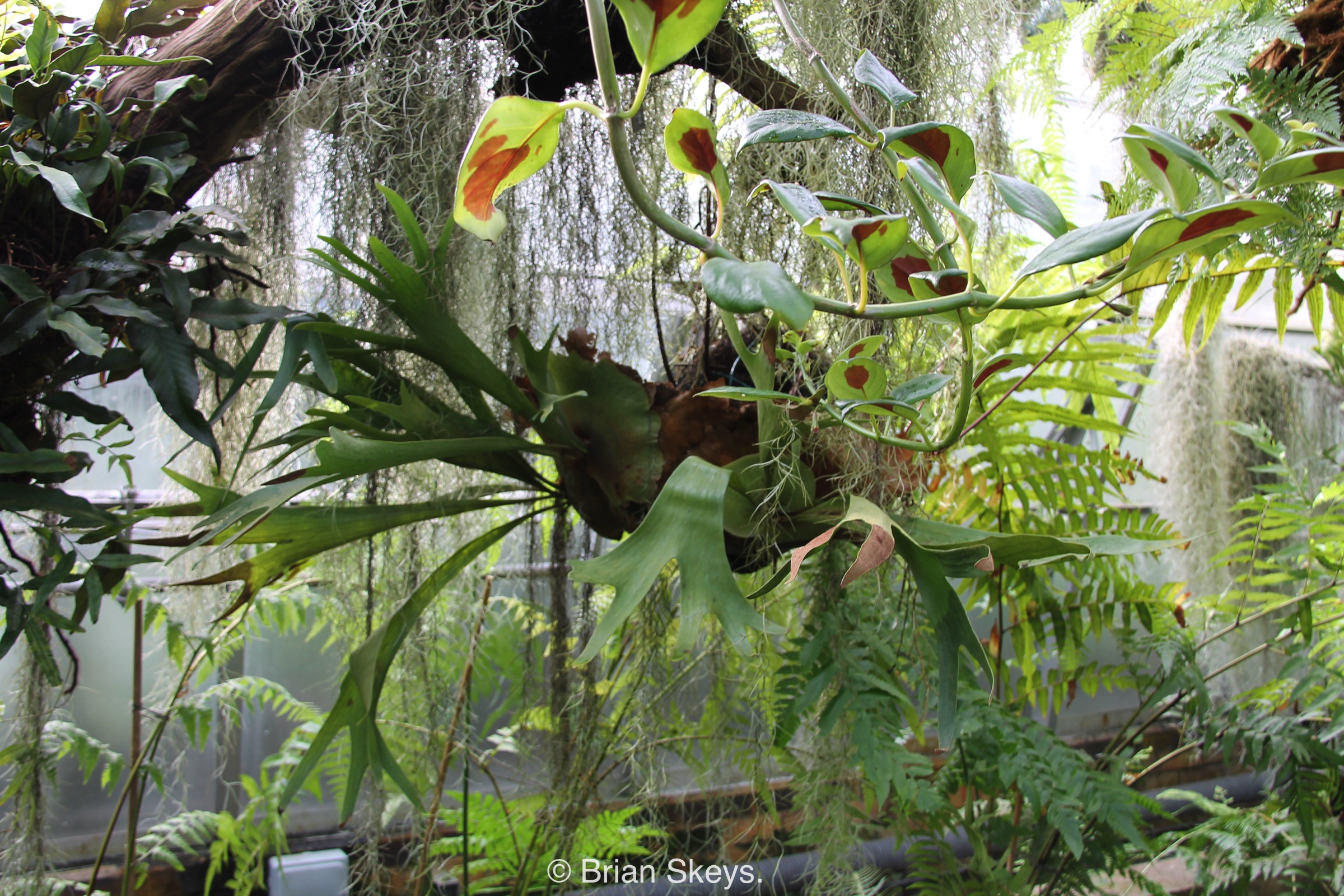
The Insectivorous House is home to the insect eating plants.

Throughout the glasshouses and the connecting passageways, there were many interesting plants, a few examples are in the slide show.
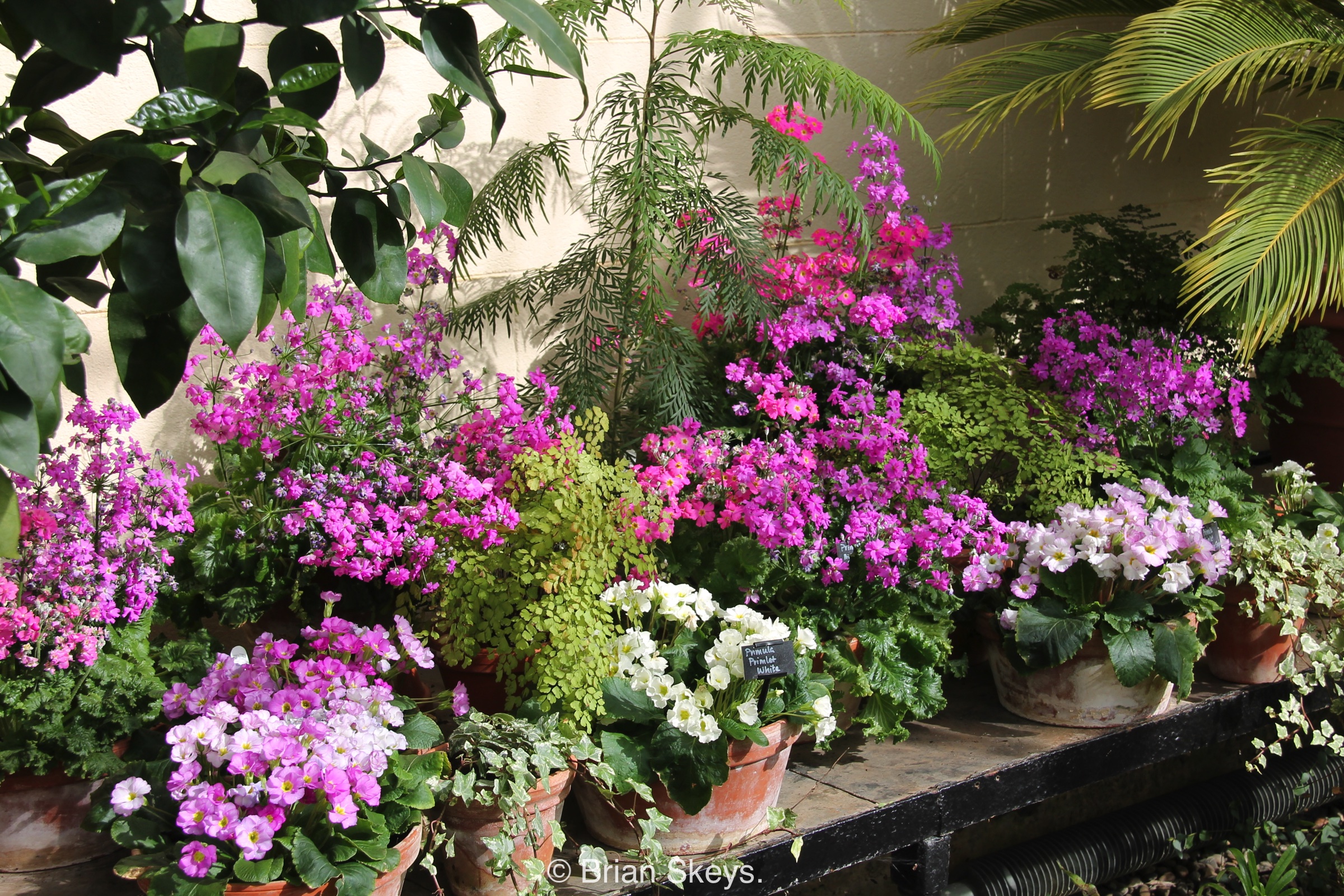
I hope you have enjoyed visiting the Oxford Botanic Gardens, if you have the chance to visit for real please do. There is also the Harcourt Arboretum.
Do you have a Botanic Garden you enjoy visiting?
Walking around Our Garden@19 the other evening there were some notable signs of autumn, not least in the temperture.
Some of the plants are starting to develop their seasonal colours. Please join me on a short walk through the garden.
The first to catch your eye is the flowering cherry tree between the patio and the oriental garden…
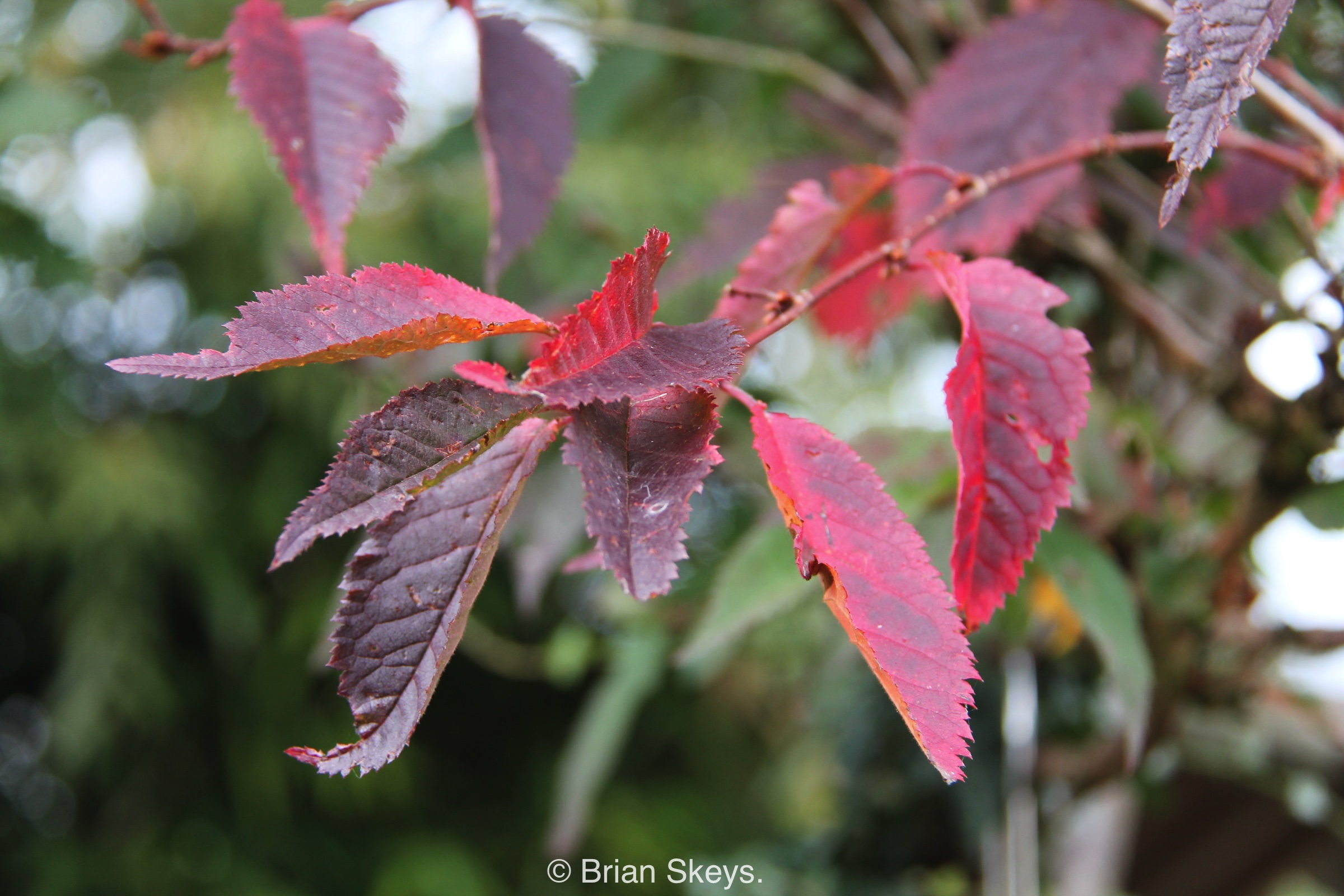
…wherein you will find the first Acer to change into its autumn coat..
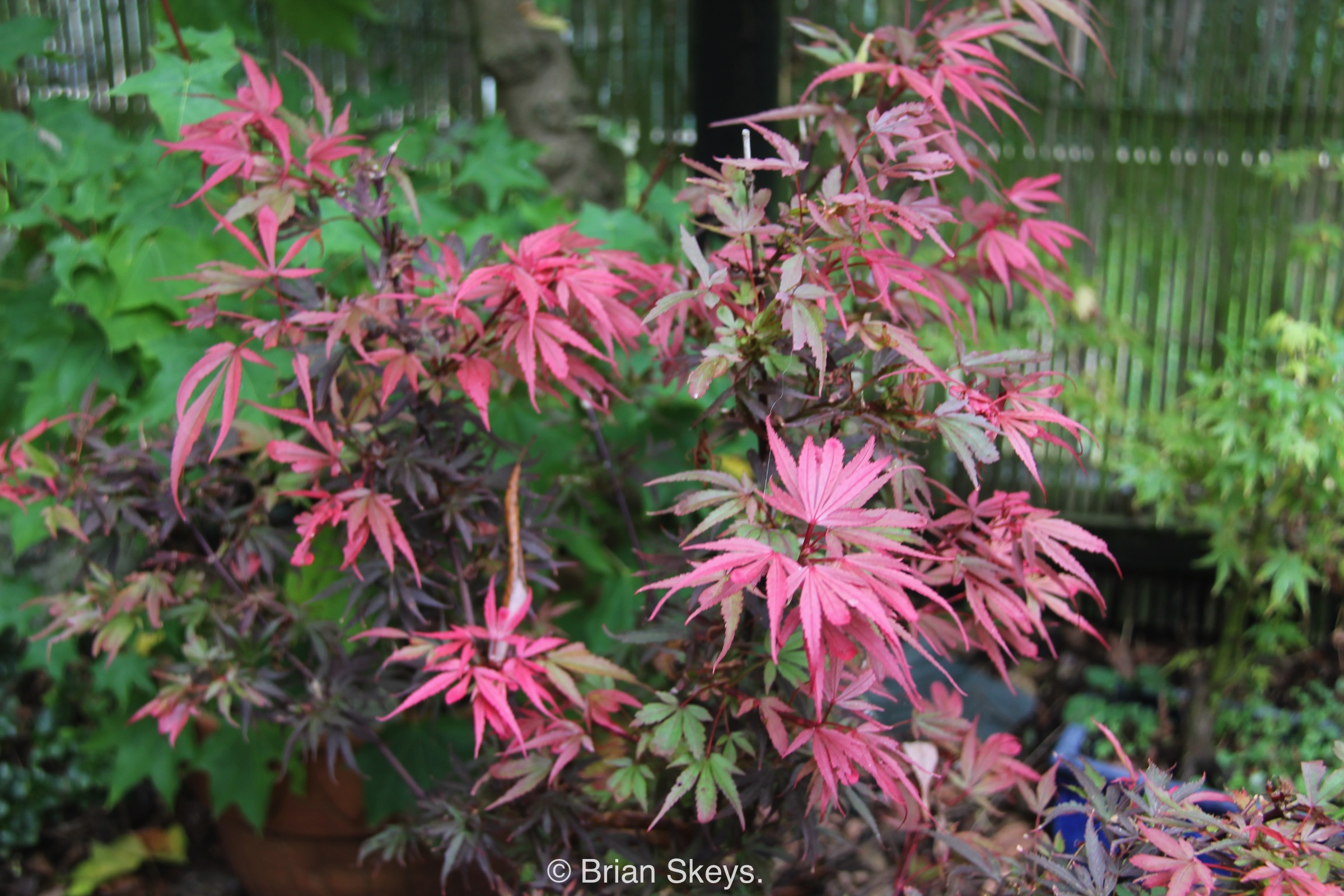

Walking up the garden via the shrubbery path you pass a large arching Cotoneaster lacteus, this can look wonderful either trained flat against a fence or wall or, as here, left to grow freely at the back of a border…
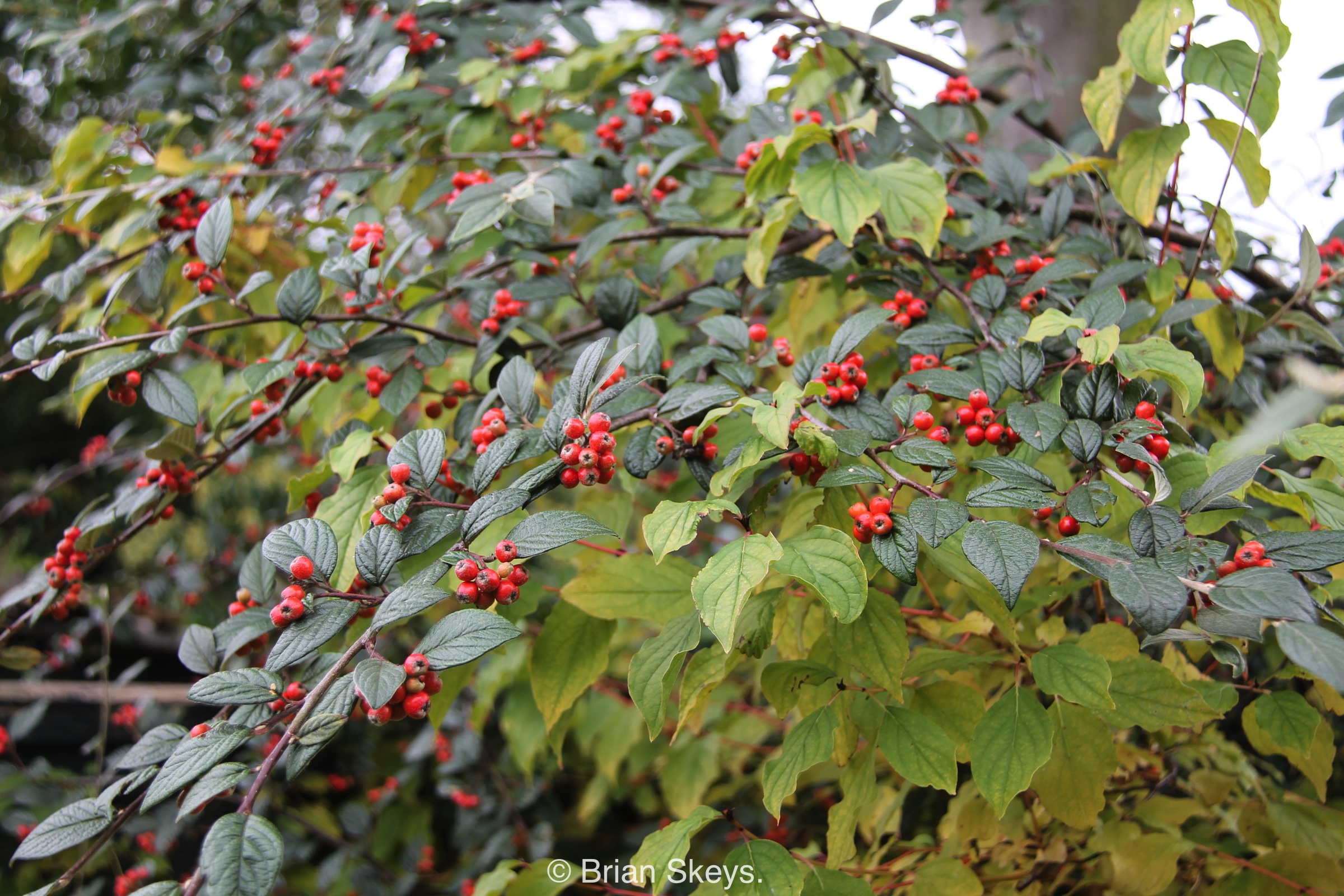
…from there you arrive at the banana bench overlooked by the Green Man who is surround by The Boston Ivy.

After a rest on the bench in the autumn sunshine if you follow the never ending woodland walk you pass the Rose glauca, with its slaty blue leaves and bright red hips.
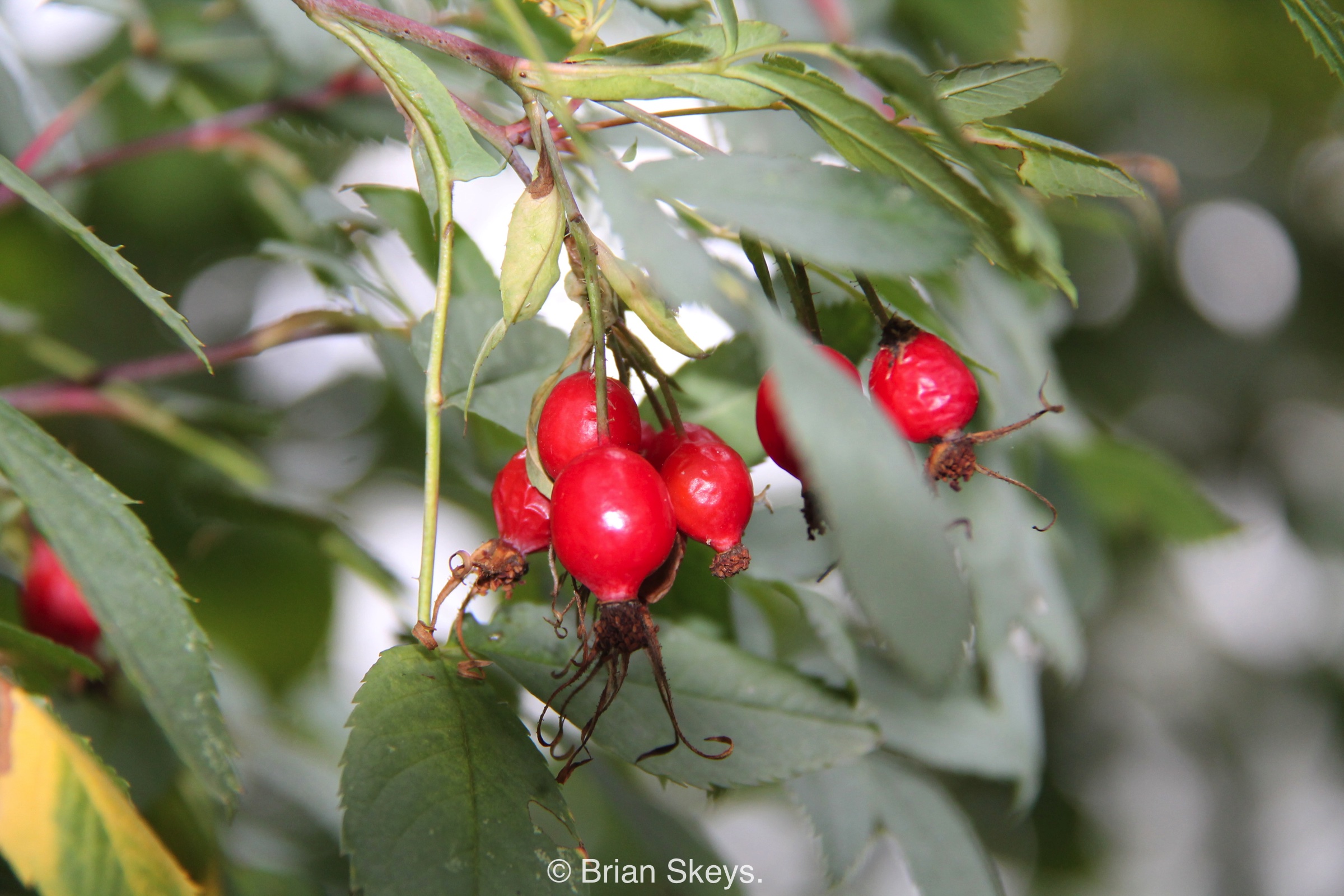
Further along, providing colour all year round is the Prunus serrula…
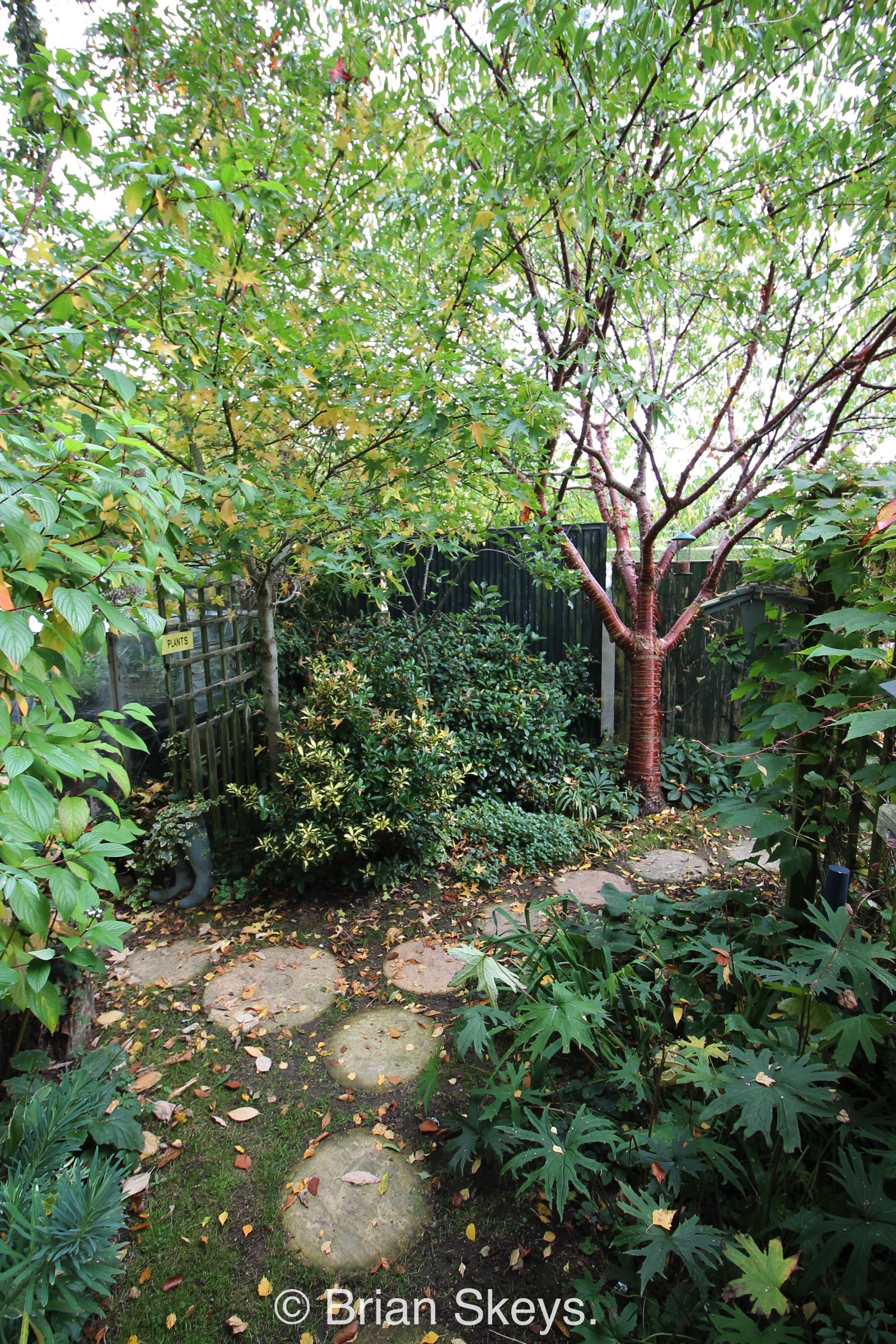
…with its beautiful tactile bark.
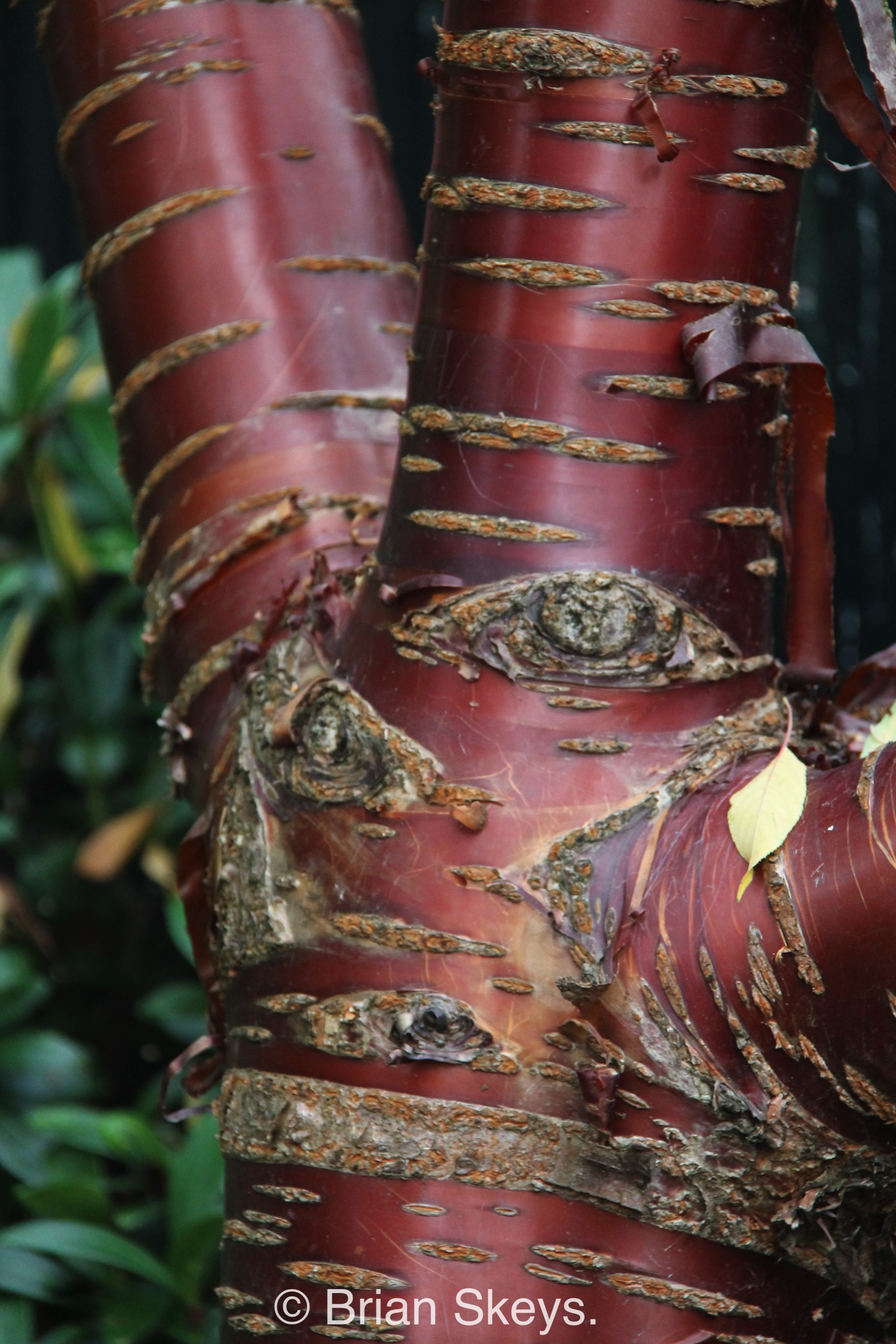
While Autumn can be a little depressing due to its heralding oncoming winter, the plants brighten up our days with their fiery colourful, leaves, berries and bark.
What is brightening up your autumn garden?